COVER STORY: PETER ZOOLE, EXECUTIVE CHEF AT ADDISON RESERVE COUNTRY CLUB | JASON VOISELLE, EXECUTIVE CHEF AT NAPLES NATIONAL GOLF CLUB | JONATHAN HANCOCK, EXECUTIVE CHEF AT RICHLAND COUNTRY CLUB PHIL IANNUCCILLI, EXECUTIVE CHEF AT GREENWICH COUNTRY CLUB | CHRISTINA FERRAIOLO, PASTRY CHEF AND RISING STAR AT EDGEWOOD COUNTRY CLUB | GREENS DO GOOD | CLUBHOUSE COCKTAILS | RECIPES AND MORE


www.GolfKitchen.com September 2020-February 2021
Golf Kitchen Magazine is a biannual publication of Golf Kitchen LLC. Copyright 2020. Print subscriptions are available at www.golfkitchen.com for $59.99 per year.
All rights reserved in all countries. Contents may not be reproduced in any manner without written permission of Golf Kitchen LLC. Golf Kitchen LLC does not necessarily agree with the viewpoints expressed by our contributing writers of articles and advertising copy.
For advertising opportunities please email us at info@golfkitchen.com
Golf Kitchen welcomes letters to the editor at info@golfkitchen.com
GOLF KITCHEN
Magazine
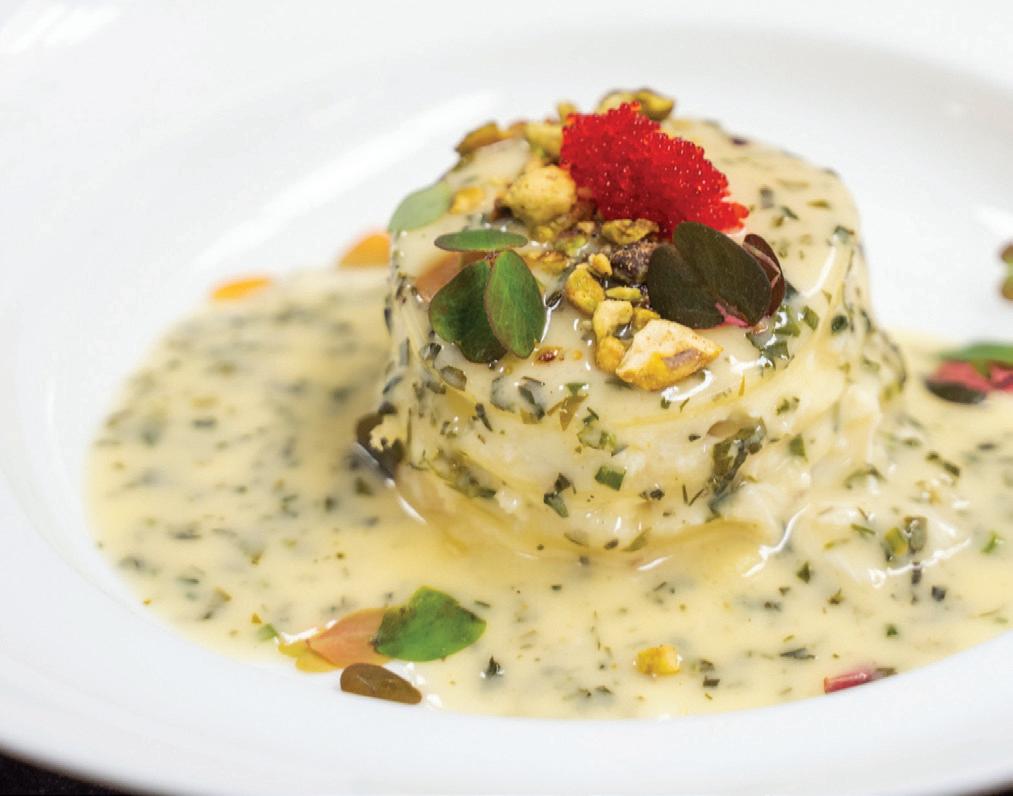
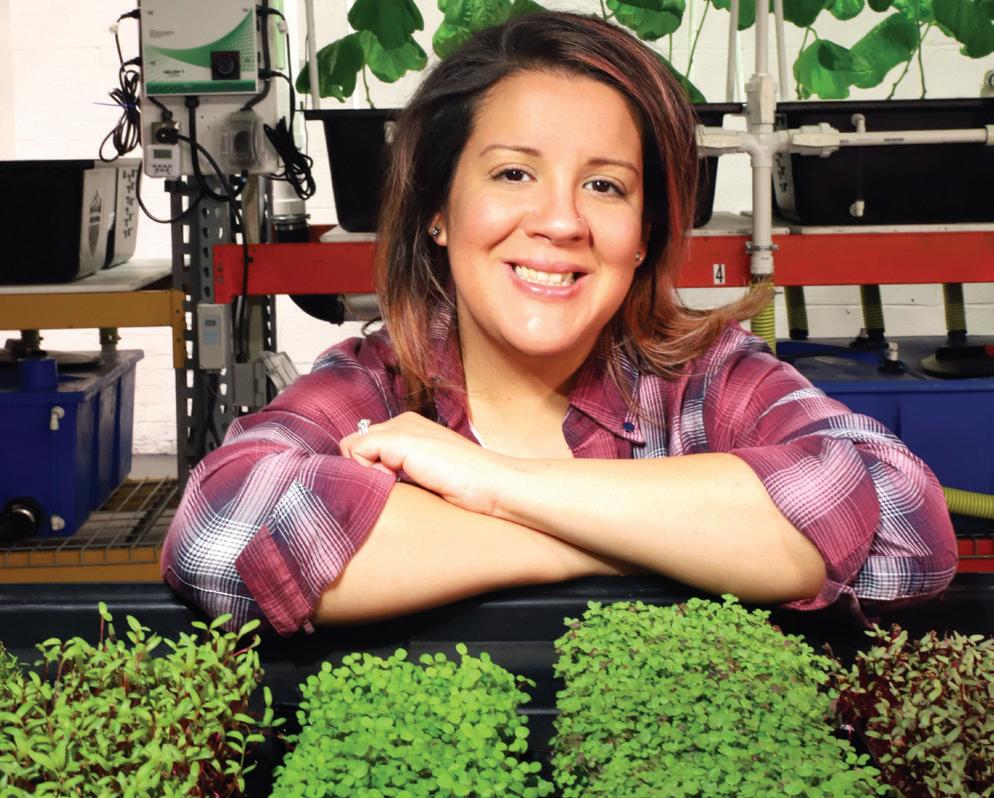
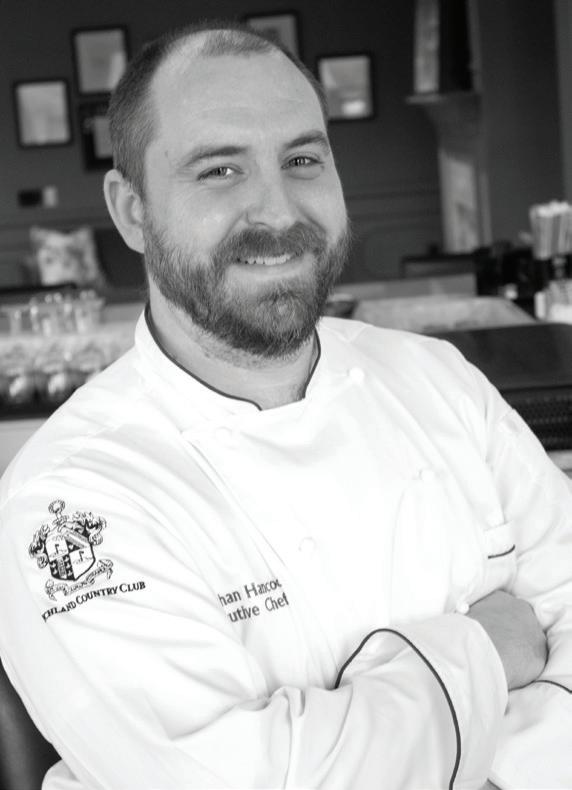
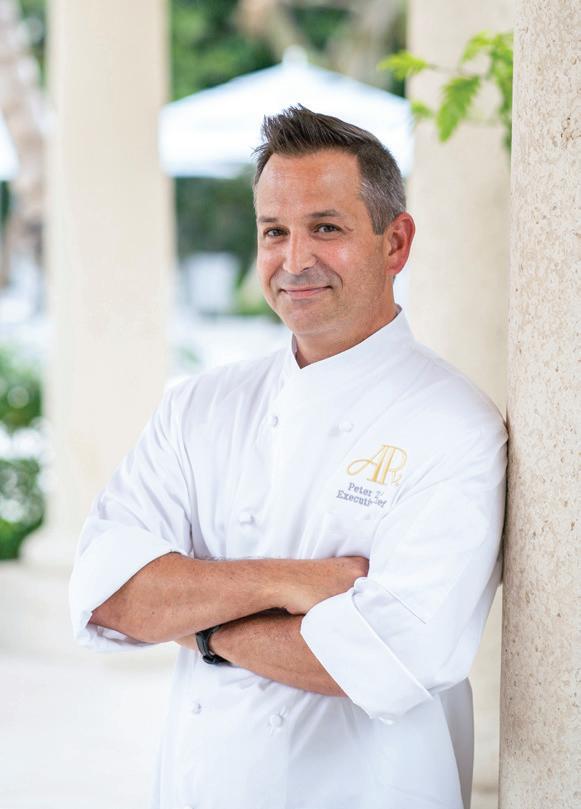
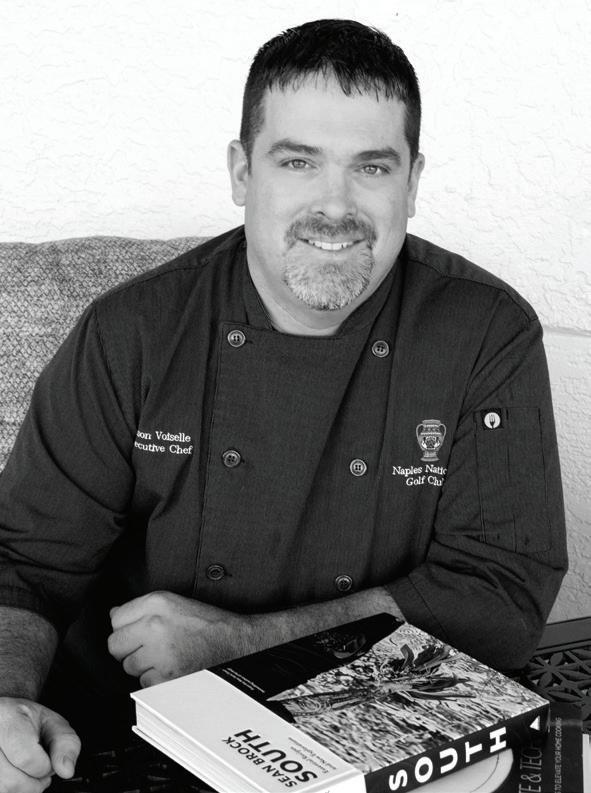
414 36 CONTENTS SEPTEMBER 2020 | FEBRUARY 2021 14 JASON VOISELLE EXECUTIVE CHEF NAPLES NATIONAL GOLF CLUB 104 COVER STORY: PETER ZOOLE, EXECUTIVE CHEF ADDISON RESERVE COUNTRY CLUB 40 40 JONATHAN HANCOCK EXECUTIVE CHEF RICHLAND COUNTRY CLUB 58 36 A VERTICAL FARM GROWING FOR A GREATER GOOD 14
Data Management Redefined

More than 80 percent of enterprise data is scattered across multiple locations on-premises and in public clouds, trapped in infrastructure silos, and buried unseen in long forgotten storage systems, making it almost impossible for IT to control – still less exploit for business advantage.


Cohesity eliminates this mass data fragmentation problem with a web-scale, data management platform that radically simplifies the way companies protect, control and extract value from their data. This software-defined platform spans across clouds and data centers, can be managed from a single GUI, and enables independent apps to run in the same environmentjust like the smartphone.

Learn more about Cohesity at cohesity.com © 2020 Cohesity, Inc. All rights reserved. Cohesity, the Cohesity logo, SnapTree, SpanFS, DataPlatform, DataProtect, Helios, and other Cohesity marks are trademarks or registered trademarks of Cohesity, Inc. in the US and/or internationally. Other company and product names may be trademarks of the respective companies with which they are associated. This material (a) is intended to provide you information about Cohesity and our business and products; (b) was believed to be true and accurate at the time it was written, but is subject to change without notice; and (c) is provided on an “AS IS” basis. Cohesity disclaims all express or implied conditions, representations, warranties of any kind. Run Apps
UI One Platform
One
“Cohesity is committed to continuous innovation, consolidating and simplifying the management of data centers and clouds. That’s how we are going to help change the world.”
MOHIT ARON, CEO


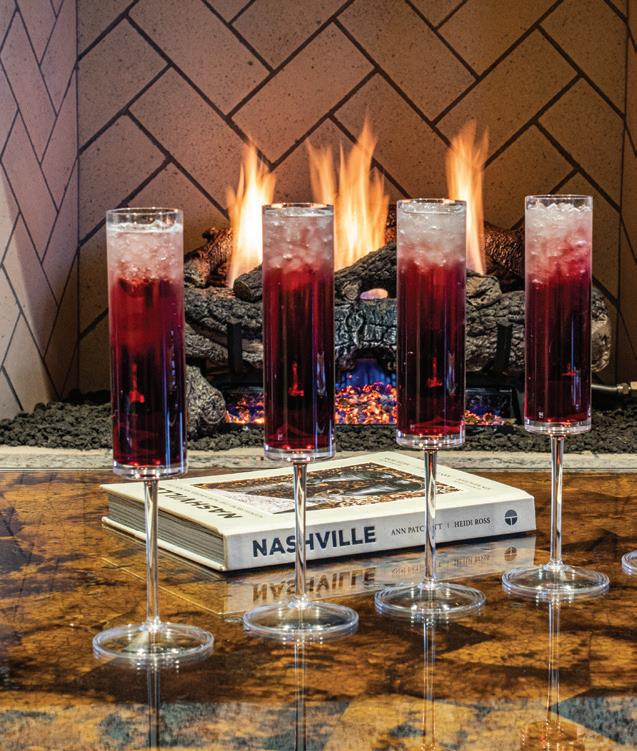

68
134
A LINE COOKS MANIFESTO BY PAUL SORGULE
130
CONTENTS 72
CLUBHOUSE COCKTAILS
72
PHIL IANNUCCILLI EXECUTIVE CHEF GREENWICH COUNTRY CLUB
134
68
CHRISTINA FERRAIOLO PASTRY CHEF EDGEWOOD COUNTRY CLUB
Join The Movement...
Connecting golf clubs with local hospitals, food banks, emergency services responders and nursing homes in their local communities to aid in the COVID-19 crisis and beyond...



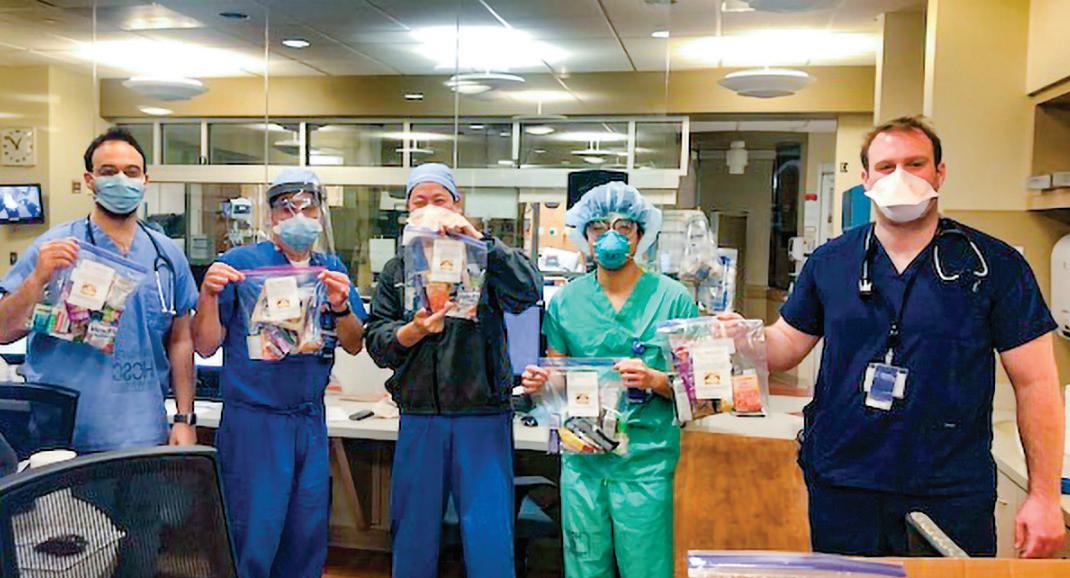



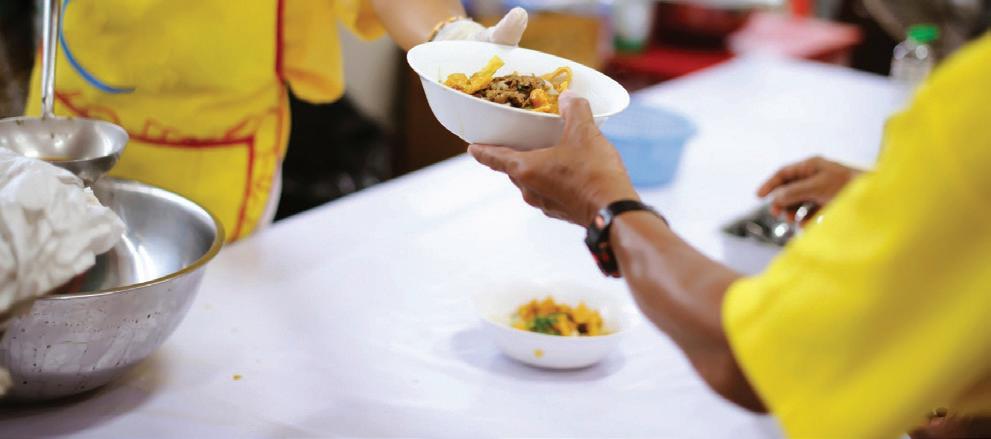

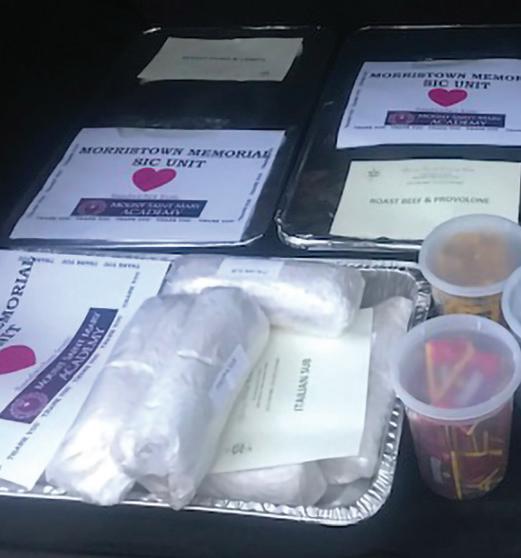
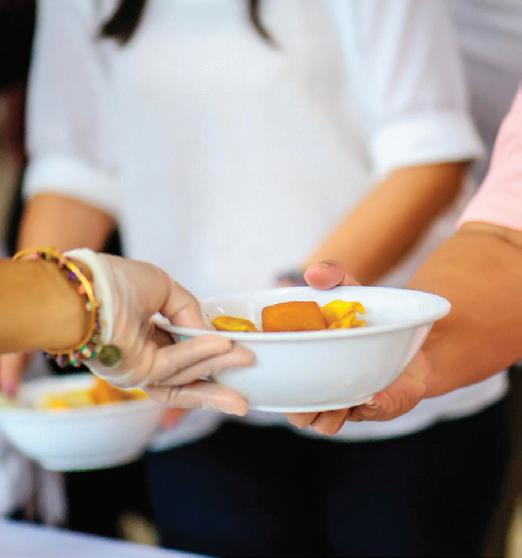


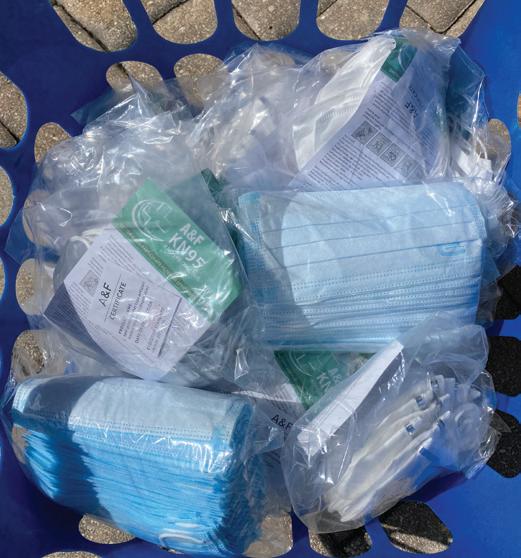

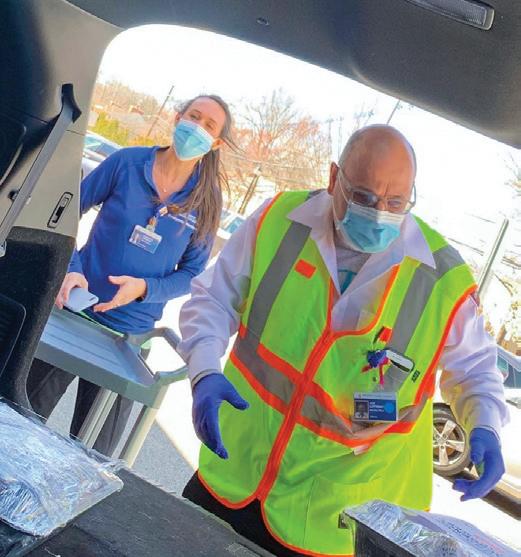
With so many charity golf tournaments being canceled due to the pandemic, we created an event that adheres to social distancing protocols. The ClubsHelp 100-Hole Challenge allows members and sponsors to support players who are raising money for local charities. It’s a winning proposition.
Michael McCarthy, CEO, Addison Reserve Country Club
Enroll your club today at clubshelp.org
FROM THE EDITOR
Hello all,
Here we all are in September 2020, and it has been six months since the previous issue, which was a little overshadowed by the pandemic as were many publications. Little did we all know that we would be in what seems like the longest groundhog day ever, and it seems it will be like this into the foreseeable future. However, at Golf Kitchen, we found plenty of initiatives and charitable activities to pursue. We spent the early months of Covid-19 with the assistance of many prominent General Managers and Executive Chefs, creating the criteria for the first Private Golf and Country Club Certification of Culinary Excellence.
I joined the advisory board of ClubsHELP, whose mission connects golf and member clubs with local communities to activate a robust network that provides critical resources in times of need countrywide. Please consider your club signing up to meet the challenge here https://www.clubshelp.org/sign-up/.
This issue, like every issue, has been a challenge. I had traveled to Nashville, Tennessee, to Richland Country Club in March 2020 to feature Jonathan Hancock, Executive Chef for this issue, and gather content for the next Golf Kitchen book. That’s when we first heard about Covid-19. I then flew to Naples National Golf Club and stayed there writing a feature story with Jason Voiselle, Executive Chef; at this time, there was news that they could stop all flights due to this new virus. I had to cancel my trip to Mizner Country Club in Palm Beach West and return to Connecticut.
Once the lockdown restrictions permitted outdoor dining, I added Phil Iannuccilli, Executive Chef at Greenwich Country Club in Greenwich, Connecticut, and our Cover Story with Peter Zoole, Executive Chef at Addison Reserve Country Club, Delray Beach, Florida. We caught up with Edgewood Country Club in Rivervale, New Jersey, for a Q & A with young rising star, Christina Ferraiolo, Pastry Chef.
Many thanks to Lisa Goldstein and Jen Faust of the REED Foundation for Autism for contributing your story at Greens do Good Fred Bollaci Enterprises and Paul Sorgule for joining our team of contributors.
On a personal note, I have found this to be a time of self-reflection after a challenging decade. Choosing to build the Golf Kitchen brand with the help of many in the industry humbles me and keeps me going with my mission.
Diana DeLucia

Golf Kitchen
diana@golfkitchen.com
Golf Kitchen Magazine 8










YOUR PASSION IS OUR SCENE! 38 42 CONTEMPORARY CULTURE CONTEMPORARY CULTURE Issue_43 VenuMagazine.com CONTEMPORARY CULTURE Issue_28 For a complimentary digital Venü subscription, sign up for the Ü-List on our website:
CONTRIBUTORS
Jennifer joined REED Academy in 2012 and is proud to be one of the founding members of the REED Foundation for Autism. She manages the development of strategic internal and external communications to increase audience engagement. She serves as lead point person on media interactions that help promote and impact the Foundation and cultivates and manages relationships with related vendors and consultants to ensure coverage of programs, special events, public announcements, and other projects. Jen also runs the operations for their hydropic vertical farm, Greens Do Good. Responsibilities include oversight of employment of adults with autism at the farm, government grants and lobby relations.
Jen began her career at The New York and National Law Journals, NYC where she created content for print advertisements in the paper’s Special Sections. She then transitioned her creative skills to writing and producing commercials for the Fort Group, a full-service marketing agency. Prior to joining the REED family, she worked at Caribiner International, Inc. now known as Jack Morton Worldwide, a global communications company, participating in the management of large scale events such as the British Hong Kong handover to the Chinese government.
Contact Jennifer:
jfaust@reedfoundationforautism.org
As a founding member of the REED Foundation for Autism, Lisa creates and oversees the implementation of a strategic approach to fundraising which includes a donor program, major gifts, corporate donations and grant solicitations. She oversees the planning and execution of special fundraising events to generate funds for the organization. Lisa collaborates with the Board of Directors and CEO to create a development plan to increase revenues to support the important and vital direction of the Foundation. Lisa monitors trends in the community to identify and develop prospects for the organization’s fundraising priorities. Lisa runs all sales and development opportunities at their hydroponic vertical farm, Greens Do Good. Lisa also oversees the distribution of charitable funds from Greens Do Good to its parent company, REED Next, a day program for adults with autism.
Prior to joining the Foundation, Lisa was an active donor and supporter of REED. Her early professional career in retail management began as a buyer for Belk Stores and Bloomingdale’s flagship store in NYC. During her tenure at Bloomingdales, she opened its first store in Miami at The Falls, a luxury shopping and entertainment center. Lisa was part of the sales force team at Liz Claiborne, and a buyer for the Indonesian government at their premier showcase store in NYC. Lisa also served on the St. Jude Children’s Research Hospital Committee for Young Artists.

Contact Lisa: lgoldstein@reedfoundationforautism.org


For Reservations: admin@GlenArborClub.com For Sponsorship opportunities: diana@GolfKitchen.com www.GolfKitchen.com MORE INFORMATION September 9th, 2021 | GlenArbor Golf Club Join us for the 3rd annual Golf Kitchen Culinary Excellence Awards save the date
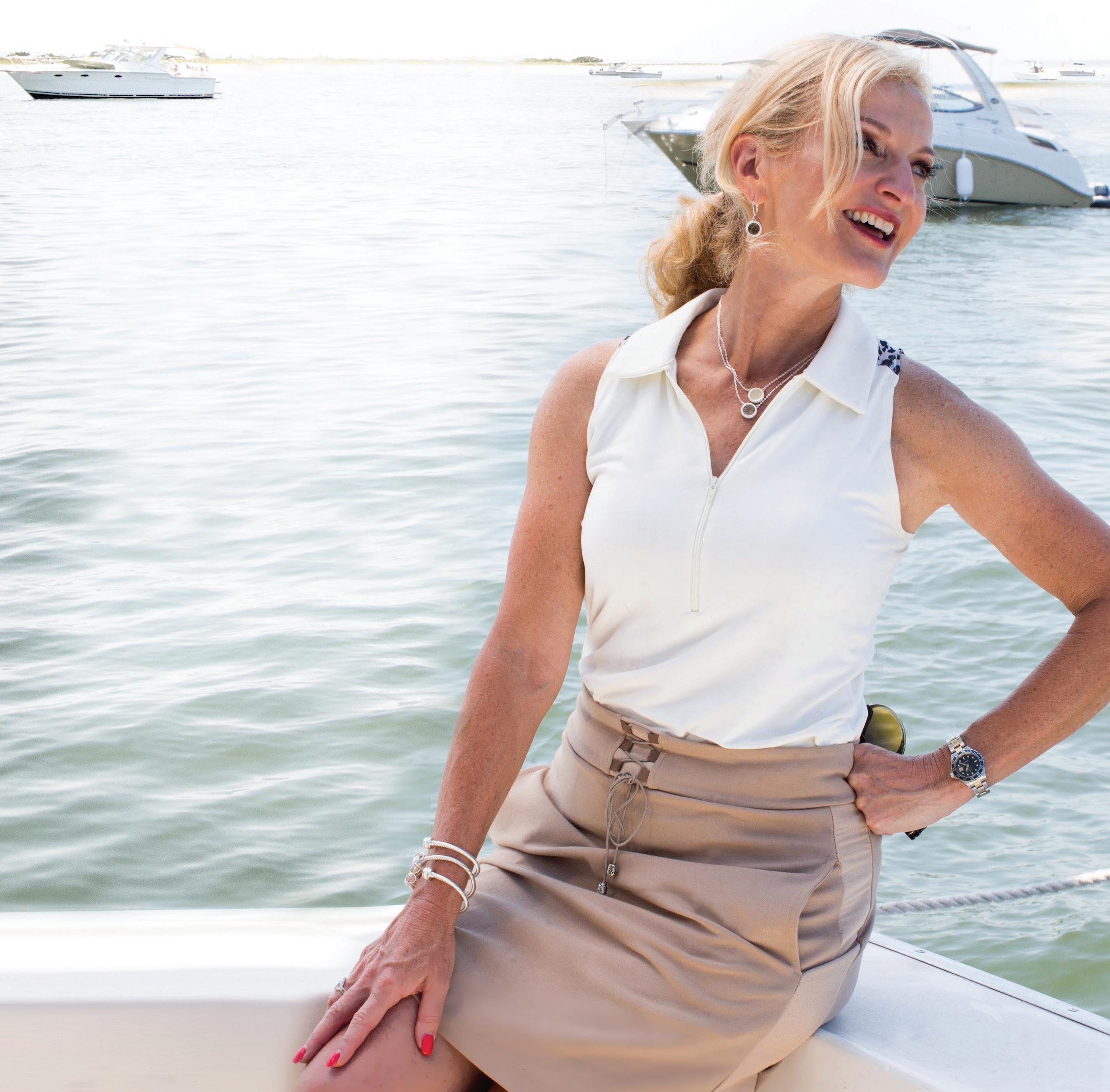
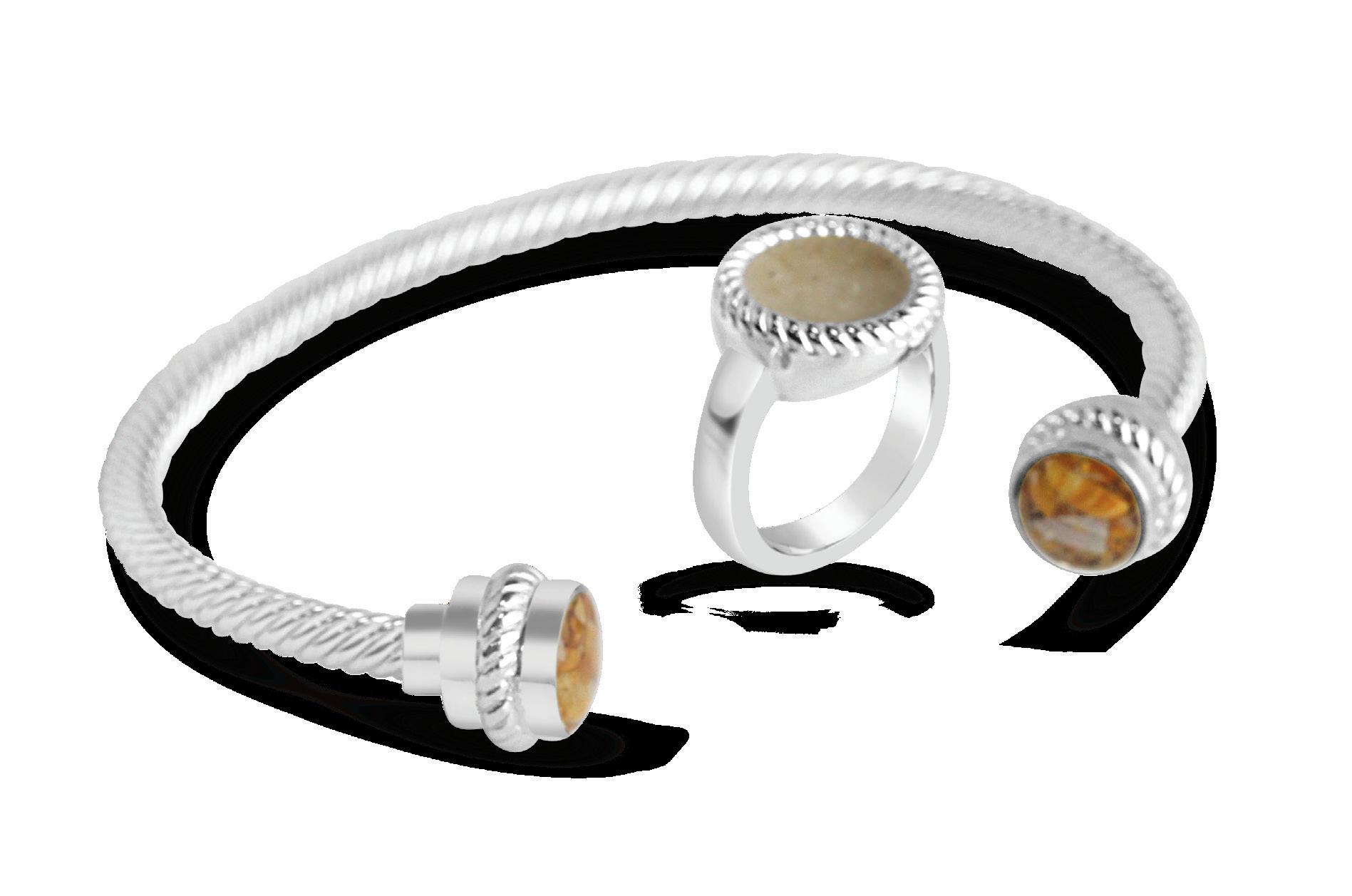
® #WEARYOURTRAVELS EXPERIENTIAL JEWELRY ® HANDMADE WITH SAND & NATURAL ELEMENTS FROM AROUND THE WORLD. Discover The Hamptons Rope Collection, a creative collaboration between Ann Liguori & Dune Jewelry
Chef Paul Sorgule is the founder and president of a restaurant and culinary school consulting firm: Harvest America Ventures, LLC ), providing menu-planning, systems development, training, and quality assessment for restaurants, hotels and resorts as well as assistance in curriculum development and faculty training for secondary and post-secondary institutions. Chef Sorgule served as Executive Chef of the Mirror Lake Inn, helping to bring the fourth diamond recognition for the Inn’s restaurant – The View. He held the position of Dean of Culinary Arts and Hospitality Management at Paul Smith’s College for 26 years where he developed associate and baccalaureate degrees in both disciplines. Most recently, Sorgule served as Vice President of Culinary Education at the New England Culinary Institute in Montpelier, Vermont. In 1988, as a member of the New England Culinary Olympic Team, Chef Sorgule was awarded a gold medal at the Culinary Olympics in Frankfurt, Germany. In 2001, the American Culinary Federation (ACF) recognized Chef Sorgule as the National Culinary Educator of the Year.
In 2008, Chef Sorgule was invited to bring the Mirror Lake Inn Culinary Team to cook at the prestigious James Beard House in New York City. Additionally, he served as a member of the ACF Accrediting Commission, chair of the Education Services Committee for the ACF and board member for the Research Chefs Association (RCA). Sorgule earned a Master’s Degree in Hospitality/Service Management from the Rochester Institute of Technology. He is the author of 2007 and 2014 books entitled: In the Shadow of Cooks, and The Event That Changed Everything, publishes weekly blog posts for the industry, and is commissioned to write for numerous other professional organizations.

Contact Paul:
Email: psorgule@hotmail.com
Web:www.harvestamericacues.com
Gideon Dariyal Heller is a creative professional based in South Florida, United States. Originally from Cape Town, he first travelled to the USA in 2012 and went on to study at the New York Institute of Photography.
From 2012-2018, he explored various parts of the United States, while documenting his travels and working in some of the most esteemed country clubs in the world. Gideon is known for his creative technique, developed from combined experience in a wide range of genres, including portraits, documentary, architecture, weddings and events.
He now resides near Miami, and works full time as a Social Media Marketer & Content Creator.
Contact Gideon: Email: media@addisonreserve.cc Web: www.addisonreserve.cc


Naples National Golf Club Naples, Florida

National Clubhouse.
Naples
Image by Evan Schiller, courtesy Naples National Golf Club.
Jason Voiselle Executive Chef Naples National Golf Club
When I met Jason Voiselle, it was just before the Covid-19 shutdown began in New York. I spent an incredible five days at the club learning about the impressive dining scene as well as the advanced wine program at the club. On Saturday night, I was to have dinner at the club with some guests from Outlier Jets, and we were all blown away by the evening menu, wine program, and service. My guests had a hard break to leave at 8.30 PM. However, they were so impressed with the evening they stayed until 11 PM! ~ Diana DeLucia
GK: Where were you raised?
I grew up in a restaurant family. My grandfather owned restaurants and steak houses, and my family worked for him. When I was very young, I was already prepping and making hamburger patties. The kitchen was home to me. By the time I was 14, I had worked as a busser, then in the dish room. When there were no dishes, I’d help with prep work, and that is when I felt gravitated to cooking in a more significant way. During high school, I worked at a restaurant called The Trolley Station, where we made soups and sandwiches from scratch. It was in Venice, Florida, and it was trendy. The menu showcased familiar, comfort foods, but they were famous for their soups. When I graduated high school, I was the lead line cook, and I would continue to work there during the summer breaks in my college years at Florida State University (FSU).
GK: What were you studying?
I was initially working towards a pre-med major, but I soon discovered that it wasn’t what I wanted to do, so I took a year off to figure out what I desired to become. During this time, I worked during the day doing lawn care and the evenings at The Trolley Station.
When I returned to FSU, I took a job at the Ramada Hotel in Tallahassee. The hotel had a full-service restaurant, and it was a step up from what I had been doing at the Trolley Station
It wasn’t fine dining by any means, but I was learning a different business aspect.
For personal reasons, I left FSU during my Junior year, I moved to Brevard, North Carolina, as my dad was building a house. I helped him complete the home over the next two years.
After that, I took a job at Connestee Falls Country Club, and it was at this time that I decided that if this is what I am going to do, I need to take it full steam. I looked at several culinary schools such as Johnson and Wales and the Culinary Institute of America (CIA), but I didn’t want to leave Asheville.
I started looking for a local school and found that Asheville-Buncombe Technical Community College (ABTECH) had a culinary program that was well regarded. I applied and started shortly after. Two years later, I graduated at the top of my class. One of the most memorable experiences at ABTECH was competing in the Junior American Culinary Federation (ACF) competitions.
GK: Where did you do your internship?
They had excellent administrative staff at ABTECH, who encouraged us to find internships in places away from our hometown. I took my training at Bacchanalia, a highly regarded restaurant in Atlanta, Georgia; it was the first time they had an intern as no one had ever approached them before. I had a second internship at 1848 House, a restaurant in Marietta, Georgia, on Sundays. I was working six days a week, trying to soak in as much as possible from these two very different restaurants.
After I graduated in August of 2001, I moved back to Southwest Florida. I took a job at The Colony Golf and Bay Club in Bonita Springs. I only stayed for a short time as unforeseen circumstances took us back to North Carolina. I took a job at an Italian Restaurant Chianti’s to help the owner get the restaurant established as he wasn’t experienced in menu creation and things of that nature.
Golf Kitchen Magazine 16
INTERVIEW
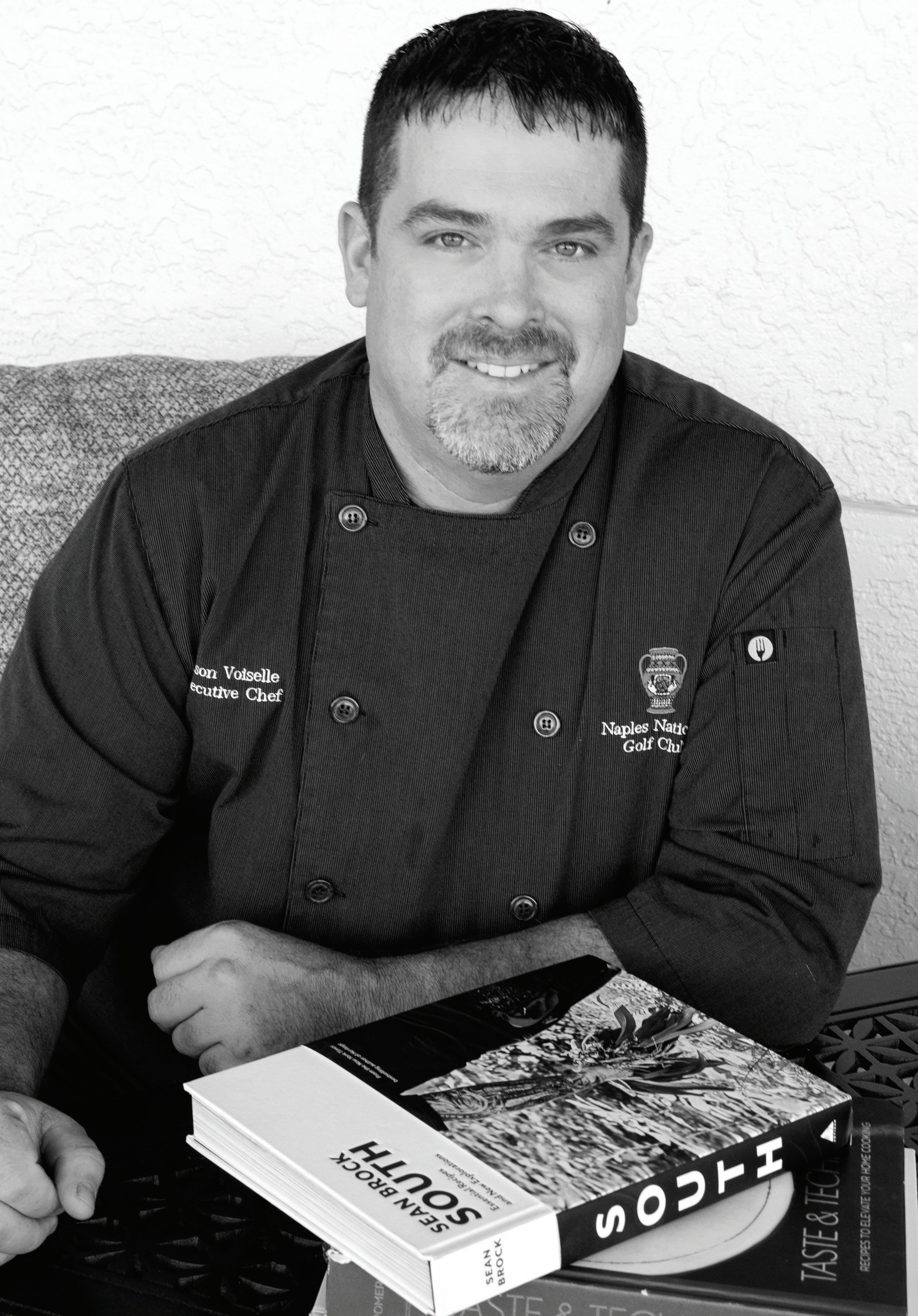
 Front row left to right: Eric Wilson, Chayo Soto
Back row left to right: Zac Schatzman, Maxo Polche, Jason Voiselle
Front row left to right: Eric Wilson, Chayo Soto
Back row left to right: Zac Schatzman, Maxo Polche, Jason Voiselle
My family had a five-year plan to open a restaurant, but a space became available near where I was living. It was a large area of an old furniture store. My parents and I pulled the trigger, and we did it, we signed a ten-year lease and built a restaurant. I was 27, and it took six months, and we opened in December of 2002, and it was named Jason’s Main Street Grill. I ran the restaurant for almost seven years and decided to sell it in 2008 as the recession was taking its toll. I moved back to Florida with my wife Corey in 2009, we have been married for 11 years, and I adore her.
I needed a break from the food industry, so I helped my father out with his business dealing in imported architectural stone. In 2012 we decided to move to Fort Myers. I had stayed in touch with my old boss Jim Iacovino over the years. I initially called him to see if he knew of any positions available in the area, and he hired me back at the Colony Golf and Country Club. I had a large gap from cooking, so I had planned to use this job to get my feet wet again. Three months later, he was promoted to the General Manager position, and I took over as the Executive Chef. It was the right timing. I stayed for six and a half years.
GK: Where did you land next?
I worked at several places for short periods, but I wasn’t content with them. In the fall of 2018, I was approached about a position at a place called The Club at The Dunes. The Dunes is a substantial resort-style community with seven condominium towers and a vast swimming pool.
They were building a brand new clubhouse when I arrived. We opened two modern kitchens in the 11 months I was there. It was a great job. We had the Tiki Bar, casual fare, and a fine dining restaurant in the main clubhouse. It was great having the two different styles of dining and kept us busy. I have over 100 cookbooks and am continually searching for new trends online, and having two different dining venues was an excellent way for me to bring new menu items. I feel I left them with a great dining program.
GK: How did you go from The Dunes to Naples National Golf Club?
I had spoken to Dan Ano, the Wine Director at Naples National over the years, but I had never
actually met him. He called me one day out of the blue and asked me if I’d be interested in taking the Executive Chef role.
I went to interview with the General Manager Scott Garvin and Dan, I was thinking of the future, and having the ability to excel as a chef and also be able to spend quality time with my family. I took this position in 2019, and it has been an excellent fit for us.
GK: Tell us about your menu process at Naples National.
The menus at Naples National Golf Club are what we like to call a “living” menu. We make changes to it often, but nothing drastic. We observe what is in season as well as what the membership desires and try to build from there. I work closely with my sous chef Zac Schatzman to try to walk the line of comfort and cutting edge. Zac and I have worked together for the last seven years so we seem to share the same vision for what we are trying to achieve.
GK: How has Covid-19 affected the dining scene at the club?
We had to shut down our clubhouse in mid-March as well as all operations for about six weeks. In May, we opened our Tern snack bar for carry-out deli sandwiches and snack items as our golf course was still open throughout the season. Our facility closes for the season after Memorial Day every year though mid-October, so we have plenty of time to develop a plan for the following season.
GK: When the season opens, what plans do you have in place?
We will be following the restaurant guidelines set in place by our county. We will also be adjusting our events as needed, such as our buffets will be more chef operated action stations trying to minimize the potential for cross-contamination. It will be a learning process for sure.
Naples National Golf Club 19
 RECIPE BY JASON VOISELLE
RECIPE BY JASON VOISELLE
Lobster Cone
Serves 4
Ingredients
Lobster Salad
4 ounces Maine Lobster Meat (cooked, chopped 1/4 inch)
1-2 Tablespoons Duke’s Mayonnaise
Kosher Salt (to taste) White Pepper (to taste)
4 La Rose Noire Cones, Dark Passion (removed from stick)
Garnish
1 teaspoon Kaluga Caviar
4 Red Egyptian Starflowers
4 Calvin Pea Tendrils
Chef Note: Garnish supplied by The Chef’s Garden, Huron, Ohio.
Preparation
Lobster Salad
In a small stainless-steel bowl, combine lobster meat with mayonnaise to the desired consistency, mix well and season to taste with salt and white pepper. Reserve in refrigerator for service.
Truffle “Ganache”
Season the truffle stock and in a blender shear in the Gellan Gum. Transfer to a saucepot and bring to a simmer while stirring continuously, allow to simmer for one minute. Transfer to a container. Allow to cool and set. Transfer to a blender and purée, adjusting consistency and seasoning.
Assembly
Generously fill cone with lobster salad. Top lobster salad with 1/4 teaspoon Kaluga. Garnish with a Egyptian Starflower and Pea Tendril. Serve immediately.
Wine Match
Freeman Pinot Noir 2017.
~ Dan Ano is the Food and Beverage Manager/Wine Consultant at Naples National and has developed one of the leading wine programs in the private golf club industry.
Naples National Golf Club 21
RECIPE BY JASON VOISELLE
Fish and Chips
Serves 6-8
Ingredients
Chip Dip
• 2 Tablespoons Extra Virgin Olive Oil
• 2 Sweet Onion (sliced)
• Kosher Salt (to taste)
• Fresh Cracked Black Pepper (to taste)

• 1 teaspoon Garlic Powder
• 2 teaspoons Onion Powder
• 3/4 cup Sour Cream
• 3/4 cup Duke’s Mayonnaise
• 1/3 cup Cream Cheese
• 3 teaspoons Lemon Juice (fresh squeezed)
Potato Chip
• 1 pound Medium Potato
• Himalayan Sea Salt (to taste)
Garnish
• 1 ounce Kaluga Caviar
• 1/2 ounce Salmon Roe
• 6-8 Edible Flower (small)
• 6-8 Coriander Blooms
Chef Note: Garnish supplied by The Chef’s Garden, Huron, Ohio
Preparation
Chip Dip
In a large sauté pan, heat olive oil and onion, season with salt, pepper, garlic and onion powder. Cook approximately 20-25 minutes or until onions have a dark, deep color and are very soft. Cool onions completely. In a stainless steel bowl combine sour cream, mayonnaise, cream cheese, and lemon juice. Add cooled onions and mix well. Adjust seasoning to taste. Reserve in refrigerator for service.
Potato Chip
Preheat fryer to 325 °F. Wash the potatoes well and slice 1/8 inch on mandolin or slicer, place the slices in cold water to remove the excess starch and retain the color. Drain the potato slices and thoroughly dry with a paper towel.
Golf Kitchen Magazine 22

Naples National Golf Club 23
In small batches, fry the potatoes about 2-3 minutes until golden brown and crispy. Remove from oil and drain well. Season with salt immediately. Reserve chips in a cool, dry place until service.
Assembly
Place chip onto a serving plate and top with a small dollop of dip. Generously top the dip with Kaluga caviar and salmon roe. Garnish with flower and coriander blooms. Serve immediately.
Wine Match
Peter Michael apres midi sauvignon Blanc 2017 ~ Dan Ano is the Food and Beverage Manager/Wine Consultant at Naples National and has developed one of the leading wine programs in the private golf club industry.

Golf Kitchen Magazine 24
 Number 12 “Heron’s Haven” Par 3, 228 yards.A well struck shot is all you need here unless you want to join the heron’s for a quick dip. Image by Evan Schiller, courtesy Naples National Golf Club.
Number 12 “Heron’s Haven” Par 3, 228 yards.A well struck shot is all you need here unless you want to join the heron’s for a quick dip. Image by Evan Schiller, courtesy Naples National Golf Club.

Golf Kitchen Magazine 26
RECIPE BY JASON VOISELLE
Deviled Eggs with Crispy Leeks and Candied Bacon
Serves 4
Ingredients
Eggs
• 24 Local Free-range Eggs (hard-boiled, remove the shell)
• 3 Local Free-range Eggs (whisked for the egg wash)
• 1 cup Duke’s Mayonnaise
• 3 Tablespoons Yellow Mustard
• Kosher Salt (to taste)
• White Pepper (to taste)
• 2 cups All-purpose Flour
• 2 cups Seasoned Italian Breadcrumbs
Crispy Leeks
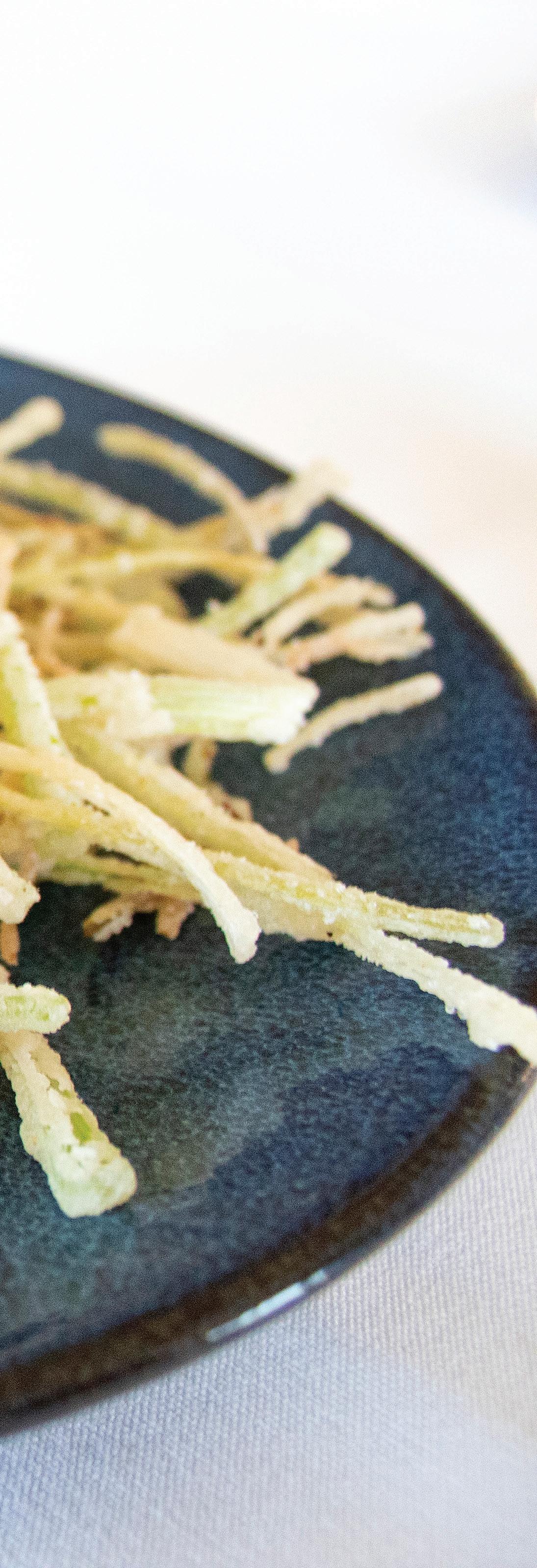
• 2 Leeks (greens removed, fine julienne, washed)
• 1 cup Corn Starch
• Kosher Salt (to taste)
• Black Pepper (freshly ground, to taste)
Candied Bacon
• 2 slices Thick Sliced Bacon
• 1 Tablespoon Spiceology Turbinado Sugar
• 1 Tablespoon Spiceology Espresso Chili Seasoning
• 1 Tablespoon Spiceology Honey Habanero Seasoning
Chef Note: Spices supplied by Spiceology, Spokane, Washington State.
Garnish
• 12 Kinome Leaf
• Memo Micro Chives (as needed)
Chef Note: Garnish supplied by The Chef’s Garden, Huron, Ohio
Naples National Golf Club 27
Preparation
Eggs
Slice 12 of the hard-boiled eggs in half across the middle and remove the yolk. Chef Note: Make sure that the larger end of the egg is left for refilling with the yolk mixture. Remove the yolks from the other 12 eggs and place all of the yolks into the bowl of a countertop stand mixer with a paddle attachment. Discard the smaller egg white tops and reserve the “bases” for later. Add the mayonnaise and mustard to the yolk mixture and blend until smooth. Season to taste with the salt and white pepper. Transfer the yolk mixture into a pastry bag with a star tip for piping back into the egg whites. Reserve in the refrigerator until needed. Place the flour, egg wash, and breadcrumbs into three separate bowls. Evenly coat the egg white “base” with flour, then egg wash, and finally breadcrumbs. Repeat this for all of the 12 bases. Place the breaded egg bases into a fryer and cook about 45 seconds until golden brown. Remove and reserve for assembly.
Crispy Leeks
Preheata a fryer to 325 °F. In a medium-sized stainless steel bowl, toss the julienne leeks with the cornstarch. Remove the excess cornstarch and place in a fryer and cook until crispy and golden brown. Season to taste with salt and pepper and reserve for assembly.
Candied Bacon
Preheat oven to 350 °F. Place the bacon strips onto a nonstick oven mat. Evenly coat the tops of the bacon with Turbinado sugar, espresso chili and honey habanero seasoning. Bake in the oven until fully cooked and glazed. About 12-15 minutes depending on the oven). Remove from the oven and allow to cool completely. Once the bacon is cooled, slice the bacon into thin strips and reserve for assembly.
Assembly
Place the crispy leeks onto a plate to resemble a “nest”. Stand three eggs onto the plate with the yolk hole facing up, fill the eggs with the deviled egg mixture. Garnish the eggs with candied bacon strips, Memo chives, and Kinome leaf. Serve immediately.
Wine Match
Kosta Browne Gap’s Crown Pinot Noir 2017. ~ Dan Ano is the Food and Beverage Manager/Wine Consultant at Naples National and has developed one of the leading wine programs in the private golf club industry.

Golf Kitchen Magazine 28
 Number 18 “Tropical Terror” Par 5, 272 yards. This very long double leg par five, with its pines, cypress, wetlands, water, the native sand scrub and greenside bunkers, will make the clubhouse seem like a very welcome port in the storm caused by this hole. Image by Evan Schiller, courtesy Naples National.
Number 18 “Tropical Terror” Par 5, 272 yards. This very long double leg par five, with its pines, cypress, wetlands, water, the native sand scrub and greenside bunkers, will make the clubhouse seem like a very welcome port in the storm caused by this hole. Image by Evan Schiller, courtesy Naples National.
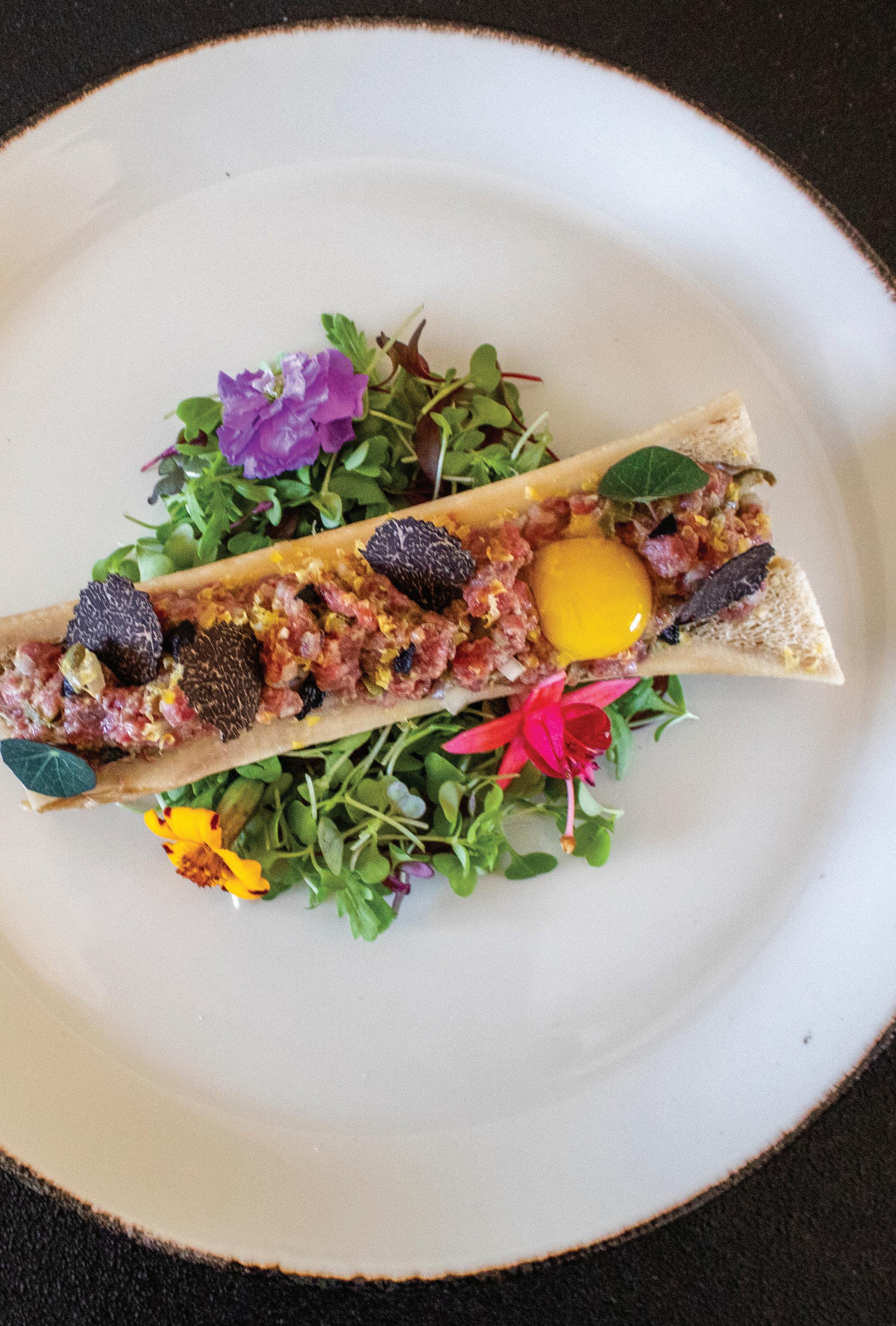 RECIPE BY JASON VOISELLE
RECIPE BY JASON VOISELLE
Beef Tartare
Serves 4
Ingredients
Tartare
• 8 ounces Wagyu Beef Tenderloin (or any quality lean trim)
• 1 Tablespoon Capers (rinsed)
• 1 Shallot (peeled, minced)
• 1 Tablespoon Dijon Mustard
• 1 Tablespoon Extra Virgin Olive Oil
• 1 teaspoon Minus 8 Late Harvest Vinegar
• Kosher Salt (to taste)
• Fresh Ground Black Pepper (to taste)
Garnish
• 2 cups Microgreen Blend
• 4 Canoe Cut Marrow Bones (cleaned)
• 4 Quail Egg Yolks
• Cured Egg Yolk (as needed)
• 12-16 Fresh Truffle Shavings
• 12 Nasturtium Leaves
• 12 Assorted Edible Flowers
Chef Note: Garnish supplied by The Chef’s Garden, Huron, Ohio
Preparation
Tartare
Chef Note: Chill beef thoroughly ahead of service time. Cut beef into approximately 1/8 inch dice. In a small stainless-steel bowl, combine capers, shallot, Dijon and olive oil, mix well. Fold in the diced beef, mix well, and season to taste with vinegar, salt, and pepper.
Assembly
Place 1/2 cup microgreens in the center of the plate and set the marrow bone over the nest of greens. Gently spoon one-quarter of the tartare mix evenly into marrow bone. Using a small spoon, place a divot into the tartare mixture and place a quail yolk in the hole. Using a microplane grate the cured egg yolk over the tartare. Top the tartare with the freshly shaved truffle. Arrange the flowers and nasturtiums on and around the tartare. Serve immediately.
Wine Match
Carte Blanche Pinot Noir 2017.
~ Dan Ano is the Food and Beverage Manager/Wine Consultant at Naples National and has developed one of the leading wine programs in the private golf club industry.
Naples National Golf Club 31
RECIPE BY JASON VOISELLE
Grilled Spanish Octopus
Serves 4
Ingredients
Octopus
• 1 bottle Red Wine
• 2 heads Garlic Bulb (halved)
• 1/3 cup Black Peppercorns

• 1 two-pound Octopus
• 4 ounces Clarified Duck Fat
• Kosher Salt (to taste)
• Fresh Ground Black Pepper (to taste)
Chorizo & Potatoes
• 12 ounces Marble Potatoes (halved)
• 4 ounces Clarified Duck Fat
• 1 cup Corn (removed from cob)
• 12 ounces Spanish Chorizo (diced 1/2-inch)
Squid Ink Aioli
• 2 Egg Yolks
• 2 Tablespoons Squid Ink
• 1/2 Lemon (freshly squeeze)
• 1/2 cup Grapeseed Oil
• 1/2 cup Extra Virgin Olive Oil
• Kosher Salt (to taste)
Garnish
• 12 Sea Beans
• 12 Red Egyptian Starflowers
Chef Note: Garnish supplied by The Chef’s Garden, Huron, Ohio
Golf Kitchen Magazine 32
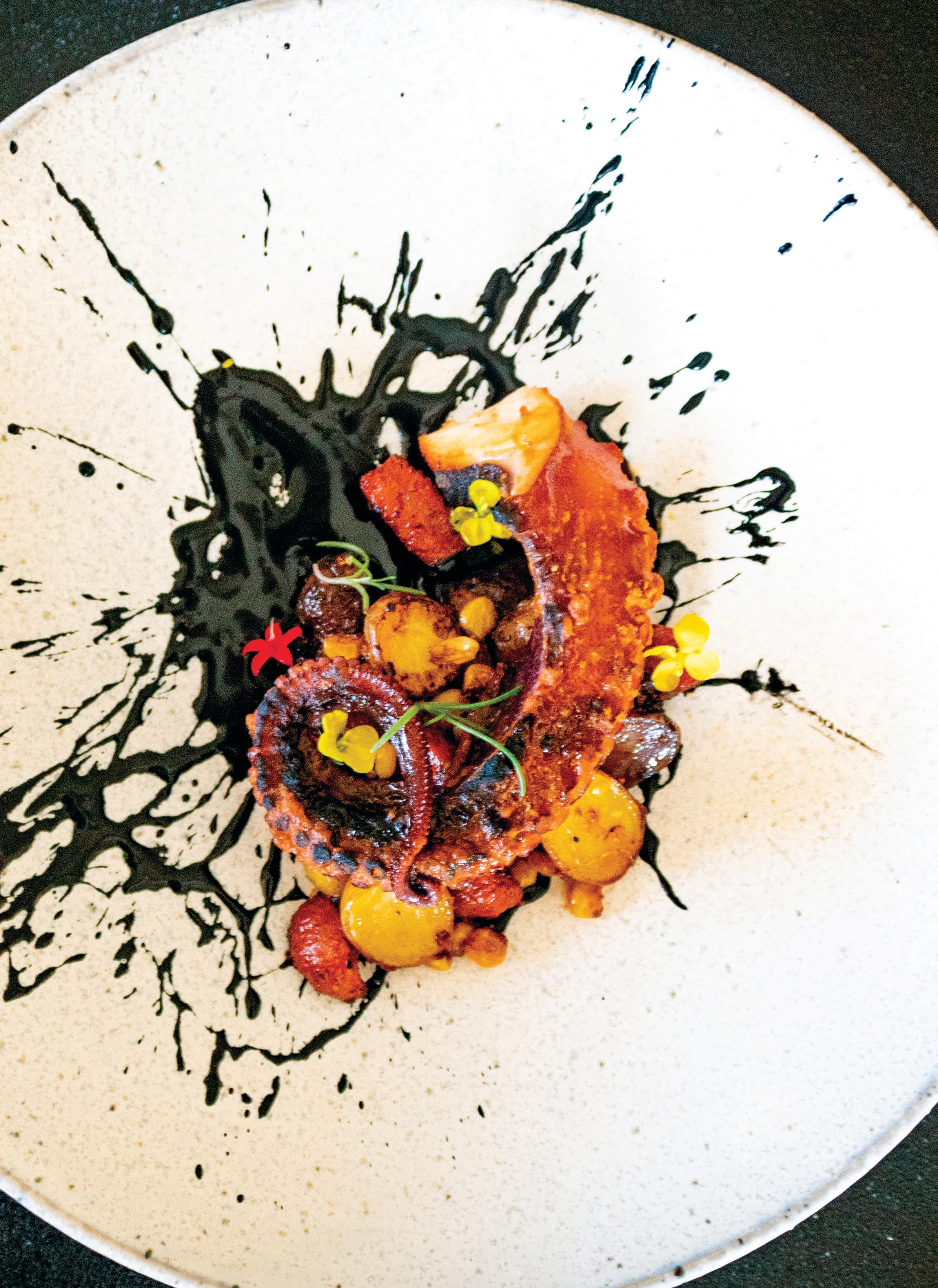
Preparation
Octopus
Combine the red wine, garlic, black peppercorns, and two quarts of water in a large pot and bring to a boil over high heat. Dip the octopus in the boiling liquid for 10 seconds and lift it back out. Repeat the process three times. Finally, submerge the octopus in the liquid and reduce the heat to a simmer. Cover with a lid and allow the octopus to poach in the liquid until tender, about 90 minutes. Remove the octopus from the poaching liquid and allow to cool before handling, about 10 minutes. Remove the head and discard it. Cut off the tentacles from the body (reserve the body for another use). Toss the tentacles into the duck fat, and place onto a hot grill for approximately two minutes per side, then season with salt and pepper.
Chorizo & Potatoes
Preheat oven to 375 °F. Toss potatoes with duck fat and season with salt and pepper. Place evenly onto a sheet pan and roast until fork-tender. Remove and cool reserving for later use. Heat sauté pan on the stove and add about two tablespoons of the duck fat to the pan. Once heated, add chorizo, potatoes, and corn. Cook until thoroughly heated.
Squid Ink Aioli
In a food processor or blender, blend the egg yolks, squid ink, and lemon juice. In a separate bowl, combine the grapeseed oil and olive oil. With the machine running, very slowly add the oils. Season with salt to taste.
Assembly
Place two tablespoons of the squid ink aioli onto the service plate and splatter with the back of a spoon. Arrange one-fourth of the chorizo-potato sauté around the plate. Set one octopus leg with the tentacles visible over the chorizo-potato sauté. Garnish the plate with Egyptian starflowers and sea beans. Serve immediately.
Wine Match
Chausser Green Acre, Chardonnay 2018 ~ Dan Ano is the Food and Beverage Manager/ Wine Consultant at Naples National and has developed one of the leading wine programs in the private golf club industry.
Golf Kitchen Magazine 34
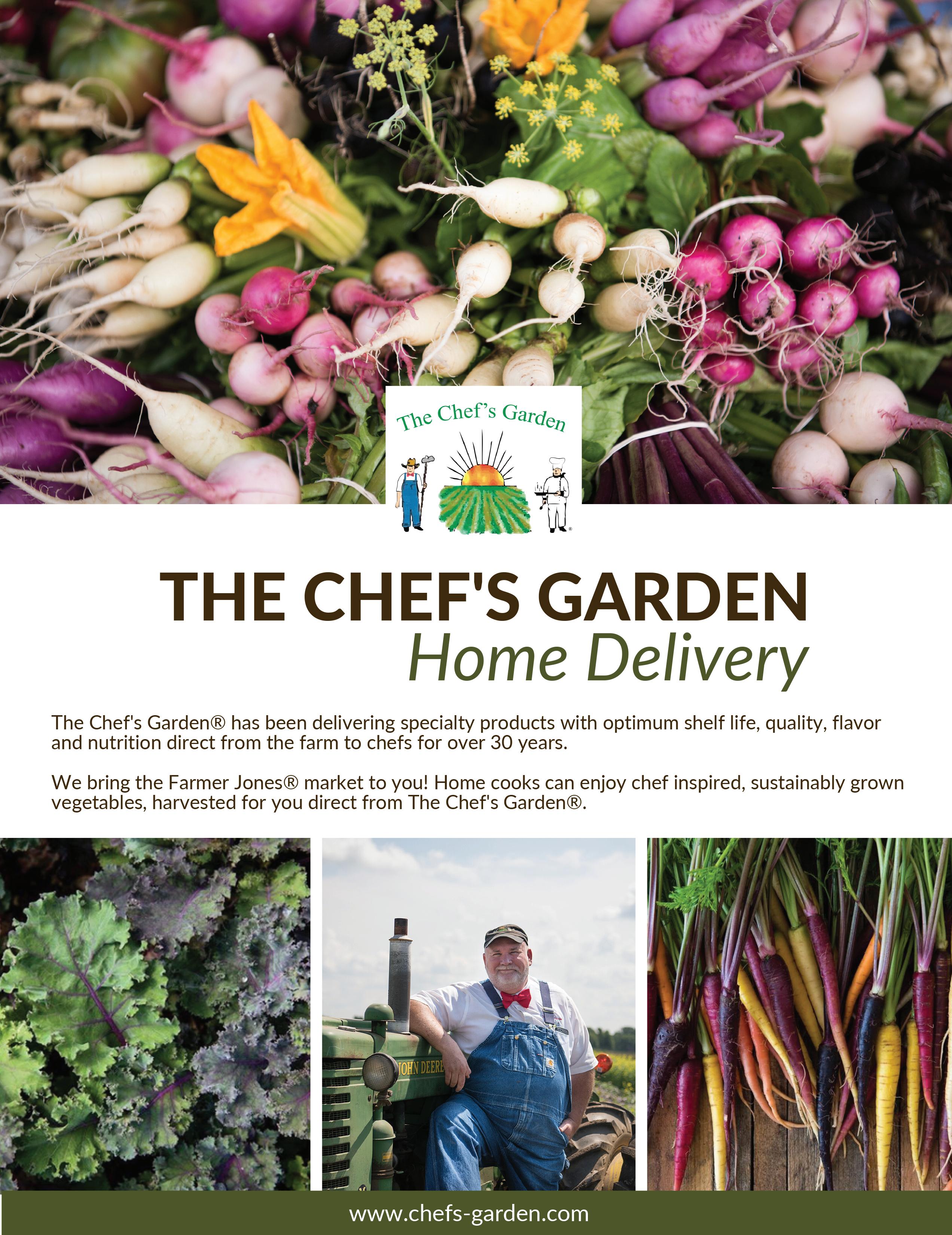
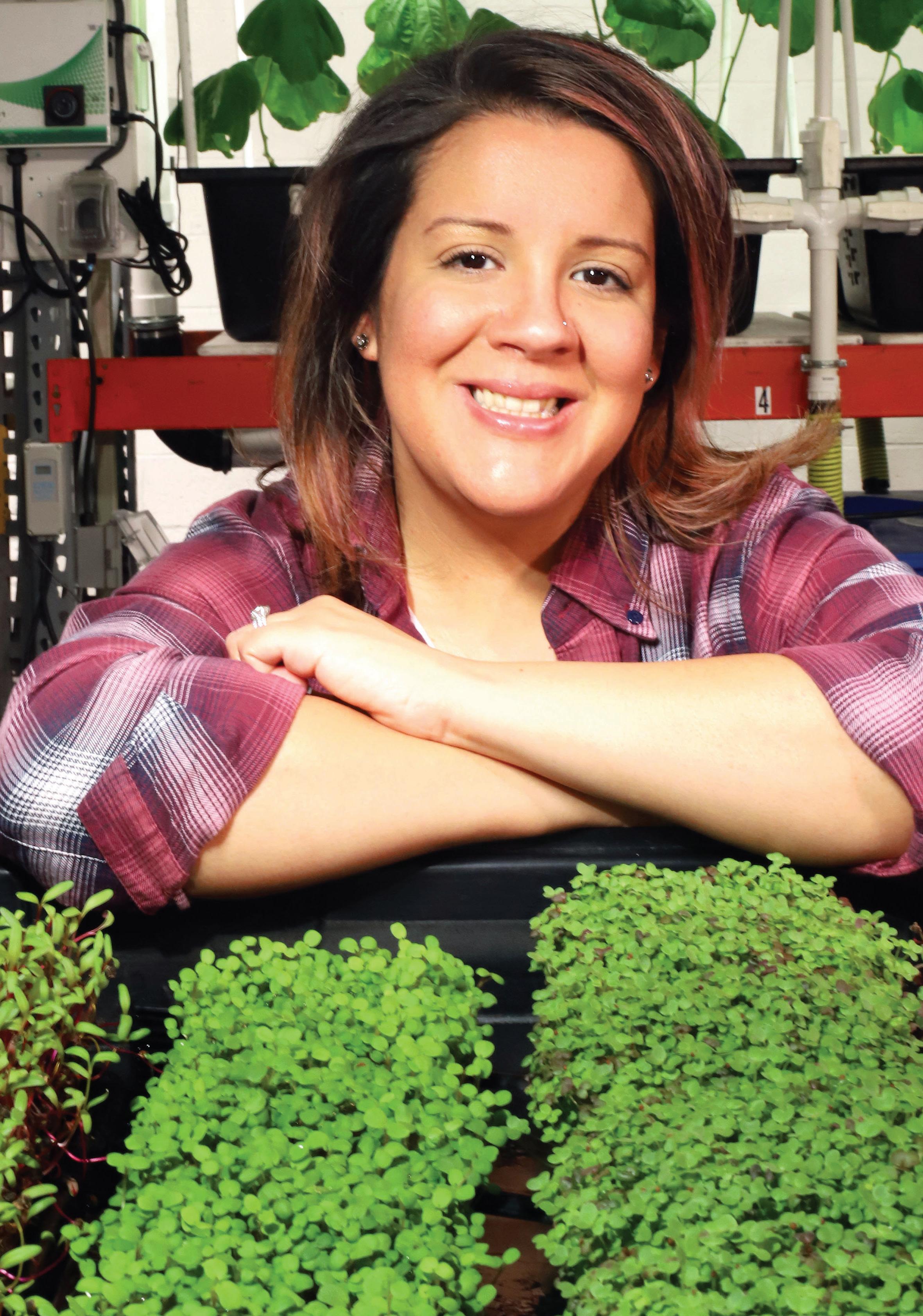 Farm Manager Jessalin Jaume
Farm Manager Jessalin Jaume
A VerticAL FArm
growing for A greAter good
At Greens Do Good adults with autism help grow hydroponic produce year round.
Executive Chef Tony Villanueva has always connected food with love. He grew up on the lower east side of Manhattan, raised by a single mom who worked many jobs to make ends meet—but always made time for the family meal. As a child he would stand on a crate to reach the stove and soon his relatives were asking him to prepare meals. And on a trip to visit his mom at her cafeteria job, young Villanueva was enthralled by the energy in the kitchen and all the people working to prepare food.
Villanueva trained formally as a chef, and eventually joined Edgewood Country Club in River Vale, New Jersey, as Executive Chef. Villanueva was tasked with changing the culture of the country club by creating a new and inspiring dining service. He was up to the challenge: He revolutionized the business of country club dining by prioritizing the freshest ingredients and sourcing them locally whenever possible.
It’s no wonder, then, that Villanueva jumped at the chance to become involved with Greens Do Good, a yearround hydroponic vertical farm in Hackensack, New Jersey, that offers locally-grown, sustainable produce to country clubs, restaurants and markets, and puts profits back into REED Next, a non-profit organization providing critical programming and job opportunities for adults with autism.
Rooted in Social Responsibility
Autism affects more than 1 in 59 Americans and 1 in 34 in New Jersey, the highest rate in the country. Approximately 50,000 individuals with autism spectrum disorder (ASD) turn 18 each year in the United States—and at age 21, public resources for these individuals virtually disappear. They’re no longer eligible for state-funded education, and adult programs and services are few and far between. Without daily support, these young men and women can lose their acquired skills—from daily care habits like making their own lunch and getting dressed by themselves to crucial life skills like language.
That’s where REED Next comes in. With an emphasis on community integration, continued learning, job training, and employment opportunities, the program is designed to support adults with autism ages 21 and older so that they can achieve greater independence and live a meaningful and fulfilling life. Greens Do Good was partially funded by a grant from the Special Child Health and Autism Registry and New Jersey Department of Health.
“With Greens Do Good, we are not only cultivating fresh produce, but we have created a sustainable social enterprise that ensures REED Next has the continued funding needed to support our programming for adults with autism,” explains Lisa Goldstein, vice president of development. “Unemployment rates for individuals with autism are woefully high. Greens Do Good gives these individuals a chance to find meaningful work.”
Walk into the farm on any given day and you’ll see REED Next clients hard at work. Everyone gets exposure to the different tasks around the farm that include planting, seeding, watering, and assistance with harvesting. “That daily structure and personal fulfillment of a job well done is just as important for individuals with autism as it is for any other adult,” says Farm Manager Jessalin Jaume, who also has a background in educating individuals with autism.
Greens You Can Feel Good About
Hydroponic vertical farming is an innovative method of growing plants in a controlled, indoor environment. Energy-efficient watering and lighting systems are used to nurture the crops, which are planted in stacked trays. This greatly improves yield per square foot and eliminates the need for soil, often a cause of bacteria contamination and disease. Not having soil also means not having to worry about weeds growing—eliminating the need for herbicides. If pests are encountered, they are controlled naturally with a release of ladybugs or praying mantises.
Greens Do Good 37
When a growing medium is required, Greens Do Good uses rock wool (spun volcanic rock) and grow stone (recycled glass) in lieu of soil for our larger crops. Microgreens are grown in a small bed of coco coir, the outer layer or husk of a coconut, a sustainable resource. The closed-loop hydroponics system also reduces costs as the same water is continuously recycled throughout the crop’s life cycle.
Greens Do Good is currently growing basil, baby kale, baby arugula, butterhead lettuce, and over 20 varieties of microgreens including chef-favorites wasabi, cilantro, and a custom spicy mix. All produce is handpicked and packed at the farm in Hackensack, minimizing transportation, and maximizing freshness, flavor, and nutrition. Greens Do Good uses zero pesticides, zero herbicides, and is 100% vegan.
Villanueva began getting weekly deliveries soon after the farm opened its doors in early 2019—making him the first Chef Partner of Greens Do Good. Since then, Greenbrook Country Club in North Caldwell and Knickerbocker Country Club in Tenafly have joined Villanueva in supporting Greens Do Good. As he explains. “I believe in the mission of Greens Do Good and want to create a ripple effect that becomes a tidal wave.”
 by Jen Faust and Lisa Goldstein
by Jen Faust and Lisa Goldstein
To learn more about buying from Greens Do Good, contact Lisa Goldstein, vice president of development, at lgoldstein@reedfoundationforautism.org
Above: Anthony Villanueva, Executive Chef at Edgewood Country Club and Chef Partner of Greens Do Good.
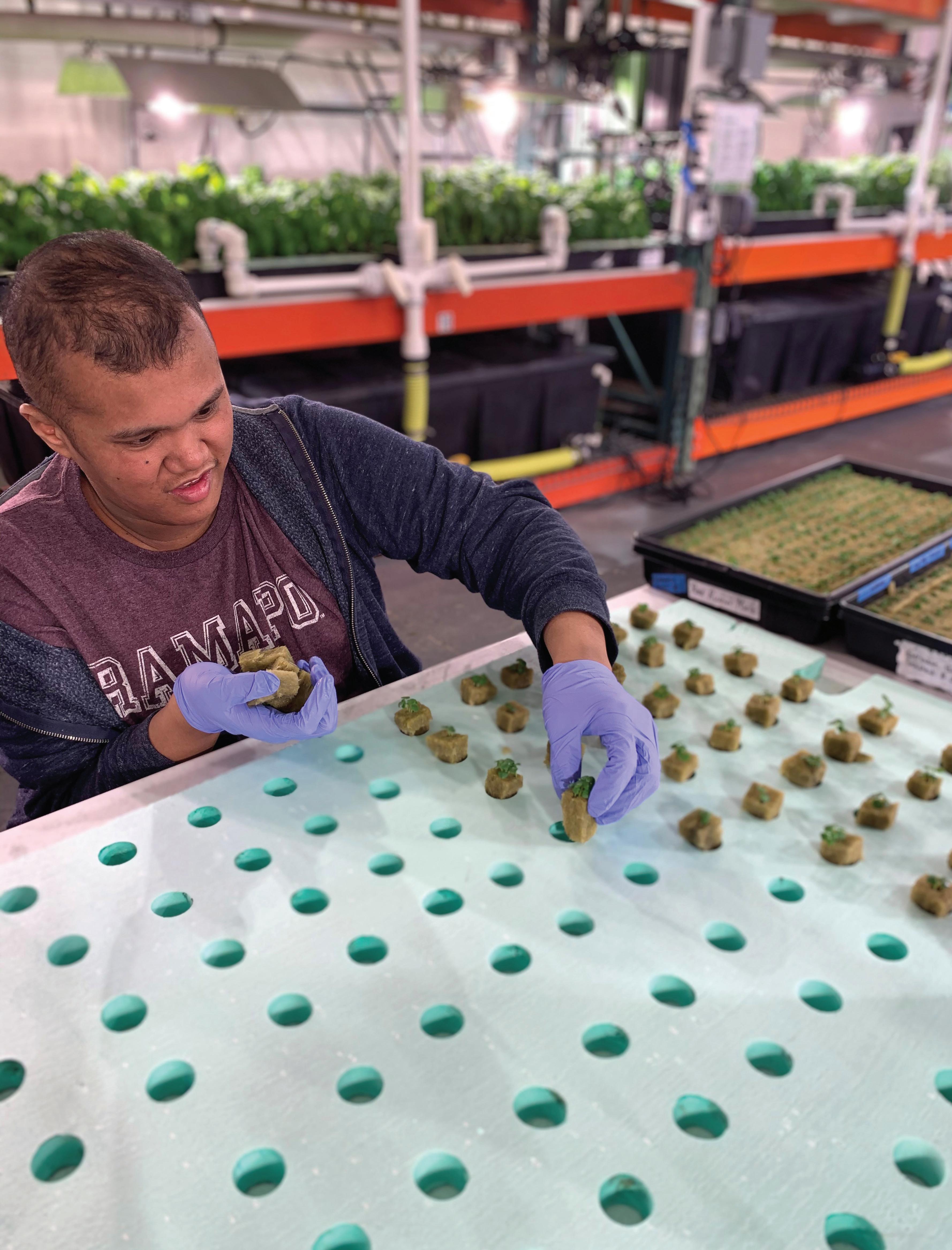
REED Next client plantinng seedlings at Greens Do Good.


The Golf Clubhouse . Image courtesy Richland Country Club.
Club
Richland Country
Nashville, Tennessee
Jonathan Hancock Executive Chef Richland Country Club
Jonathan Hancock is a young and gifted chef who realized his passion during college, pursuing a law degree! He has a natural ability for plating recipes in such an elegant way. He is blessed with six children, which keeps him on his toes. ~
Diana DeLucia
GK: Tell us where you were raised.
I grew up in Dickson County, Tennessee, which is a rural area. Most of my family lives there. My dad’s side of the family has lived on Tidwell Road, which was my grandmother’s maiden name, most of their lives. Everything is about agriculture out there, and it’s kind of cool visiting. They still own the home where my grandmother and her 13 brothers and sisters grew up.
When I was middle school-aged, we moved to Franklin, a city just south of Nashville, and that’s where I kind of started becoming a person, you know, in elementary school, you’re just playing. I went to Franklin High School, which is not far from the Richland Country Club.
I was raised by my mom, Kelly Walker, who is a single mother of four and a very strong-willed woman who taught me a lot of values about how to treat people, how you behave, and work ethic. She started her own business selling insurance and benefits. She instilled a drive in me, my sister, and two brothers.
After high school, I went to Middle Tennessee State University (MTSU) as a political science major. I thought I wanted to be an attorney and studied sociology as well. I spent about two years following that path, with the mindset of the result being that I wanted to make a ton of money.
GK: How did you go from law school to cooking?
The schoolwork was boring. I did not enjoy it, and then something clicked; I need to find what I love to do. That’s what my mom taught us.
I grew up with a family of phenomenal cooks, my mother cooked every night, my grandmother was always in the kitchen, cooking or canning, and it seemed like my father grilled or was on the smoker every day in the summertime in Texas. Every family get together was surrounded by food, and everyone chips in to help. It has always been my family’s way of expressing love for each other.
I quit MTSU, and I applied to Le Cordon Bleu in Orlando. I think I was 20, about 14 years ago. I moved down there when I found out I was having my first son, and I knew I needed to focus on getting my act together. It was good because it took me away from the core group that I was always with growing up. Until you step outside of that, it’s almost like you’re still in high school.
The instructors we had in Orlando were from a talent pool from all over the country, and many were very inspiring. I learned a lot of foundational material that I didn’t know. I started to enjoy cooking. While studying, I worked at a couple of chain restaurants such as Cracker Barrel, and it wasn’t enjoyable. I was going to school full time, and then I tried to make money on the weekends. Once my son was born, I had to fly back to Tennessee to spend time with him and then fly back to Orlando for school. Cracker Barrel started scheduling me for 60 hours a week, plus I was still at school, and I wanted to see my son
INTERVIEW Golf Kitchen Magazine 42

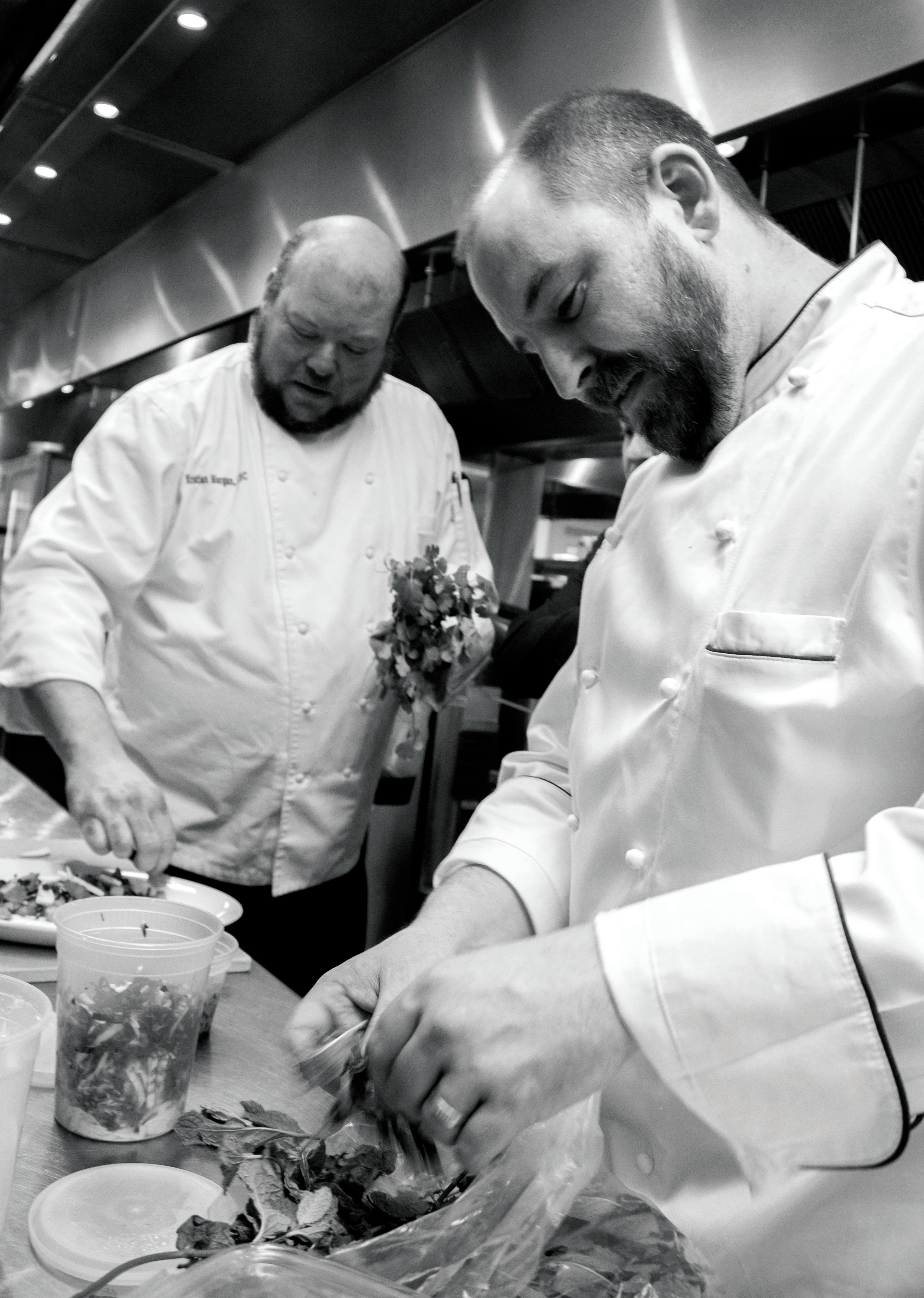 Right: Jonathan Hancock, Executive Chef with his Sous Chef in the Richland Country Club kitchen.
Right: Jonathan Hancock, Executive Chef with his Sous Chef in the Richland Country Club kitchen.
more often. I realized nothing was inspiring about what they were doing. I ended up taking a position at The Cheesecake Factory, which is one of the busiest in the country. That’s where I started learning more line skills and how to deal with getting your ass kicked every day. I watched some of the guys in the kitchen and noticed how seamlessly they moved during the crazy services. I wanted to do that; it was like a dance.
I got a lot out of that job, and then when school was done, I moved back to Nashville in 2007. I had a job lined up at The Wild Boar, one of the high-end restaurants downtown at that time. I was about to start the job and got a call from the chef. He said he couldn’t pay me, and they had filed for bankruptcy.
GK: How did you land at Richland Country Club?
I had a family friend who was a member of Richland, and he asked me, “Have you thought about going to a country club?” I told him, “I have never thought about it.” He said, “You know, you ought to call Chef Dean; he is a great guy.” I called, and he asked me to come in for an interview. I remember seeing the kitchen for the first time; it was massive, and looking around, I noticed everyone had their own knives. Everybody knew what they were doing, which was very different than some of the chains. These people have great knife skills. I remember watching Chef Dean pull apart all these lobsters, and I knew this might be a cool place to learn and grow. I have been here for 11 years now, and I started as the banquet sous, and then spent a short time as the interim pastry chef, and was given the executive sous chef role.
GK: How long have you been the executive chef?
It was official in September 2018, which was cool and intimidating at the same time. I’d already been doing all these other positions, but your scope gets wider with every step up that you take. I had never cared about the pool dining before, I hadn’t even thought about what they were serving pool-side. My focus was more a la carte dining upstairs, and that was it. It’s been an incredible journey in the last few years learning to focus on all these other areas of the club.
We have two restaurants and a pool grill, and we’re running it all out of one kitchen. We have our Waxo Grill, our adults-only grill and provides an upmarket, but casual dining experience, great for a quick lunch, relaxed dinner, or drink by the fireplace while watching the game. It is named after Dudley “Waxo” Green, a long-time member of Richland and a sports reporter for the Nashville golf scene for six decades. We have the Nicklaus Room, named after Richland’s Golf Course designer, Jack Nicklaus; this dining room provides a great family atmosphere and excellent views of the course.
The Pool Grille, offers wide varieties of food options that are sure to satisfy both kids and adults. Together with our full-service pool-side bar, indoor and outdoor seating, and a teen area, the Pool Grille will exceed your expectations of what a day at the pool should be!
GK: You have to be flexible working at a private golf or country club, how are you finding that?
It’s so much fun, we’ve got a strong crew back here that get excited about whatever they can fry and dip in a sauce, that’s cool. There’s a place for that. Then at the same time there are guys that want to learn how to break down fish, and I know that I can groom them to take the next step in their career. It’s a dynamic team, and I am fortunate to have them behind me.
GK: Tell us about the renovation; you must have been here for that process?
It took about a year and we closed for five months, only operating out of the far side of the club. We modified horse trailers outside with a kitchen, but all we could do were buffets. We were all so pleased when this half of the clubhouse was finished. The second half was completed in April of 2019, and you can see for yourself just how spectacular it is.
The members here use the club heavily. For many of them, this is where to go, even on Mondays, which we are closed. Once we opened after the completed renovations, club usage went through the roof. We went from 180 covers on a Friday night to 350! The team all came together, and we started adjusting how we do prep, how we set ourselves up to be ready when it’s busy. It’s been going well, and I feel like we’ve got a good rhythm with everything. I feel like it is a sign of the job that we’re doing. We are
Richland Country Club 45
doing more than ever before, and the members are coming out and are raving about the food and service.
GK: How do you feel about working with the General Manager, Martel Meyer? He has a solid reputation for turning around a club’s food and beverage operation.
For one, he was incredibly supportive of anything new we wanted to do. He was all about, try it, if it doesn’t work, then it doesn’t work, but keep trying. He was the one that pushed for us to delineate this dining room from that dining room. Martel said, “Let’s give them two different dining experiences, instead of everything mashed up into this one menu where it’s all over the place, let’s create focus, so if they want to eat fine dining, they go to one room, and if they want casual fare, they go to the other.
Martel told us that what everybody needs to understand when they walk through these doors that this is the hospitality industry, first and foremost, whether you’re from the front of the house or the back of the house, it’s all hospitality.
GK: What are some of the member trends?
We’re noticing more vegans and people with keto diets, and we try to give them something substantial that feels and tastes good, but also fits what they’re looking for. We have enjoyed creating more vegan food, but I try to avoid tofu or anything like that as I feel that’s too elementary.
GK: Where do you source your produce?
We work with many local farmers; being in Tennessee, we have access to everything. Most of our beef we source from Bear Creek Farm. Bear Creek Farm, is a sustainable grassfed, grain-finished cattle and hog farm, raises all-natural Angus beef and Heritage hogs in a responsible and humane way. They rely on outstanding genetics and Certified Humane practices to produce healthy, tasty beef, and pork without the use of hormones or antibiotics. I’ve known Bill and Leanne for 13 years now, and I can always count on them to have a superior product.
We also source from a small, diverse, sustainable family farm named Wedge Oak Farm. They gently and humanely raise food for our local region. All of their products are USDA inspected for safety, quality, and freshness. They grow the prized Mangalitsa charcuterie hogs and carry a specialty sausage line made right here in Tennessee. All of their animals are raised on the farm and processed as close to home as possible.
One of our most significant sources for vegetables is Nashville Grown, founded by Alan Powell, where he’s essentially the middleman for a lot of the smaller farmers within a hundred miles of Tennessee.
GK: Where do you see yourself in five years? What are your plans to continue to develop the culinary scene at Richland?
I would like to open another dining experience option at the club, something prix fixe that gives us another outlet for pushing our boundaries and creativity for the members, and ourselves. I would also like to continue pushing to becoming at least 90% local on all products entering the kitchen. There is so much fantastic agriculture in Tennessee, and it should always be a focus. Another goal is the continuous updating of banquet design and menus, to continue staying ahead of the trends that set us apart from other clubs. If you don’t stay ahead, then you are falling behind. For the next five years, I plan on pushing as much growth as I can within our club and our kitchen. I would love to see my current sous chefs stepping into roles as Executives other high-end clubs.
Golf Kitchen Magazine 46
 The Hank McCall Room. Image courtesy Richland Country Club.
RECIPE BY JONATHAN HANCOCK
The Hank McCall Room. Image courtesy Richland Country Club.
RECIPE BY JONATHAN HANCOCK
Honeycrisp Apple and Butternut Squash Salad with Whipped Ricotta, Zhoug and Pomegranate

Serves 4
Ingredients
• 1 medium Butternut Squash (peeled,medium diced)
• 2 cups Whipped Ricotta (see recipe)
• 2 Honeycrisp Apples (cored and sliced)
• 1 Pomegranate (seeds only)
• 1/4 cup Zhoug (recipe follows)
• 1 bunch Cilantro
• 1 bunch Mint
• 1 cup Pumpkin Seeds (toasted)
• 1 head Radicchio (chiffonade)
• EVOO (to taste)
• 1 Lemon
• Kosher Salt (to taste)
Whipped Ricotta
• 1 gallon Whole Milk
• 1 quart Full-Fat Buttermilk
• 1/4 cup White Vinegar
• 2 Tablespoons Kosher Salt
• 2 cups 40% Heavy Cream plus 1 cup reserved for later
Zhoug
• 4 Jalapeño Peppers (seeded and chopped)
• 2 cups Cilantro (rough chopped)
• 1 clove Garlic
• 1/2 Tablespoon Black Pepper
• 2 1/2 Tablespoons Ground Cumin
• 1/2 cup Pumpkin Seeds (toasted)
• 1 1/2 Tablespoons Sugar


Golf Kitchen Magazine 50
The Main Lobby.
Image courtesy Richland Country Club.
• 4 Tablespoons Sherry Vinegar
• 2 Limes (juiced and zest)
• 1/2 cup EVOO
Preparation
Whipped Ricotta
Combine all the ingredients in a heavy pot except the 1 cup of reserved heavy cream. Bring to a dull simmer and remove from heat. Let stand for 15 minutes. Skim the curds from the top into a colander lined with cheesecloth and allow to drain for 30 minutes at room temperature. Once the ricotta has drained for 30 minutes, scoop the curds, in batches, into a food processor with just enough of the reserved cream to blend to a smooth consistency.
Zhoug

Combine all ingredients in a food processor and blend to a pesto-like consistency.
Final Preparation and Assembly
Lightly toss the butternut squash with olive oil and salt in a roasting pan and roast in a 400°F oven until lightly caramelized, Chef Note: This should be just cooked-about 15 minutes. While the squash is cooling, divide the whipped ricotta between the four plates and spread into a thick layer. Toss the warm squash with the zhoug and radicchio and divide amongst the plates on top of the ricotta. Garnish with slices of Honeycrisp apple, pomegranate seeds, pumpkin seeds, and picked herbs. Drizzle with EVOO and a squeeze of lemon.
Wine Match
Cakebread Sauvignon Blanc. ~ Cory Saffran is the Director of Food & Beverage at Richland Country Club.
Richland Country Club 51
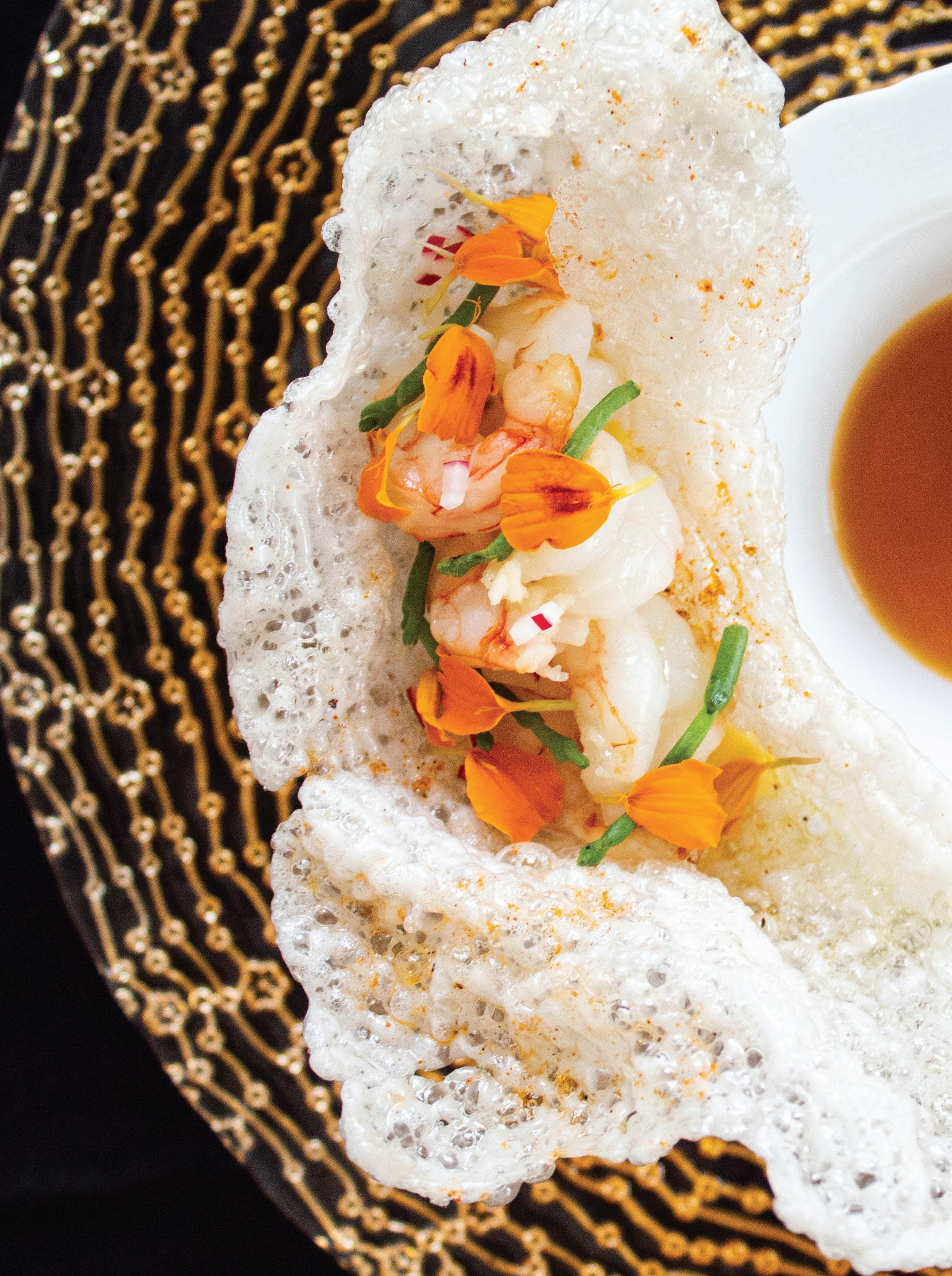
Ginger Bouillabaisse and Royal Reds
 RECIPE BY JONATHAN HANCOCK
RECIPE BY JONATHAN HANCOCK
Serves 4
Ingredients
Bouillabaisse Broth
• 3 Yellow Onions (sliced)
• 10 cloves Garlic (sliced)
• Olive Oil (as needed)
• 1 1/2 quarts White Wine
• 2 Bay Leaves
• 6 Tomatoes (blended)
• 2 Tablespoons Saffron
• 46 ounces Clam Juice
• 1 two-inch Knob of Ginger (peeled)
• 4 Carrots (very thinly sliced)
• 1 bunch Celery (very thinly sliced)
• 2 Fennel Bulbs (very thinly sliced)
Tapioca Crackers
• 1/2 cup Tapioca Pearls (rinsed)
• 2 cups Cold Water
• Pinch Salt
• Old Bay (to taste)
Shrimp
• 2 cups Water
• 1/2 teaspoon Xanthan Gum
• 1 1/2 pounds Unsalted Butter
• 4 ounces Yuzu Juice
• Kosher Salt (to taste)
• 12 Royal Red Shrimp (peeled, deveined, heads off)
Yuzu aioli
• 1/2 teaspoon Microplaned Ginger
• 2 Egg Yolks
• 5 teaspoons Yuzu Juice
• 1 teaspoon Green Yuzu Kosho
• 1/2 cup Olive Oil
Garnish
• Yuzu Aioli (see recipe)
• Sea Beans
• Tangerine Marigolds
Preparation
Bouillabaisse Broth
Sweat the onions and garlic with olive oil in a heavy bottom saucepan until translucent. Add the white wine and cook until reduced by half, add the tomatoes, bay leaves, and saffron and reduce by 1/3. Add the clam juice and bring to a simmer. Once simmering, ladle 8 ounces
of the liquid into a blender with the ginger and blend on high until puréed. Then add back to the pot along with the carrots, celery, and fennel. Once the broth returns to a simmer, turn off the heat and cover to allow the vegetables to steep for 30 minutes. Strain through a fine chinoise, and then again through cheesecloth. Reserve warm.
Tapioca Crackers
Place the tapioca pearls into a small saucepot with 2 cups of cold water, bring to a simmer and cook until pearls are fully hydrated and jelly like, about 12 minutes. Add a pinch of salt then spread to about 5mm thick on a silpat lined tray and dehydrate at 160 ºF until crispy, 8-10 hours. Once dry, break into 2” x 2” pieces and deep fry at 400 ºF until puffed, remove from oil and season with Old Bay. Once cool, store in an airtight container for up to 3 days.
Yuzu Aioli
Whisk the ginger, egg yolks, yuzu juice, and green yuzu kosho together in a small bowl and slowly drizzle in the olive oil continue whisking to create an emulsion.
Shrimp
Place 2 cups of water into a saucepan and bring to a dull simmer, add the xanthan gum and whisk to incorporate. Once there are no chunks of xanthan visible, begin adding the butter 1/4 pound at a time while vigorously whisking to create an emulsion. Pour into a high-speed blender with the yuzu juice and kosher salt to taste, blend well, then return to the pot. Bring the emulsified butter to 160 ºF, then add the shrimp and allow to poach for 4 minutes, then remove with a slotted spoon and drain on paper towels.
Assembly
Ladle the hot broth into soup bowls with a wide rim. Place a tapioca puff on each rim, using some yuzu aioli as glue. Put four dots of yuzu aioli randomly in the tapioca puff, top with 3 poached shrimp, the sea beans, and the marigold petals, squeeze fresh yuzu juice on top, then serve.
Wine Match
Golf Kitchen Magazine 54
Kim Crawford Sauvignon Blanc. ~ Cory Saffran is the Director of Food & Beverage at Richland Country Club.
 The Waxo Bar
Image courtesy Richland Country Club
RECIPE BY JONATHAN HANCOCK
The Waxo Bar
Image courtesy Richland Country Club
RECIPE BY JONATHAN HANCOCK
Scallop and Short Rib Tortellini with Celery Root Purée
WOOD ROASTED REMEMBRANCE BADGER FLAME
Chanterelle Buttons & Basil Oil
Serves 4
Ingredients
Braised Shortribs
• 5 raw Boneless Short Ribs
• Rice Koji (as needed, ground to a fine paste)
• 3 large Yellow Onion (peeled, large dice)
• 3 large Carrots (peeled, large dice)
• 5 Ribs of Celery (large dice)
• 1 Garlic Bulb
• 1/8 cup Red Boat Fish Sauce
• 3 quarts Veal Stock
• 1 quart Red Wine
• 1/2 cup neutral oil
• Kosher Salt
• Black Pepper
Celery Root Purée
• 2 Celery Roots (peeled and diced
• 2 Idaho Potatoes (peeled and diced)
• 3 cups Heavy Cream
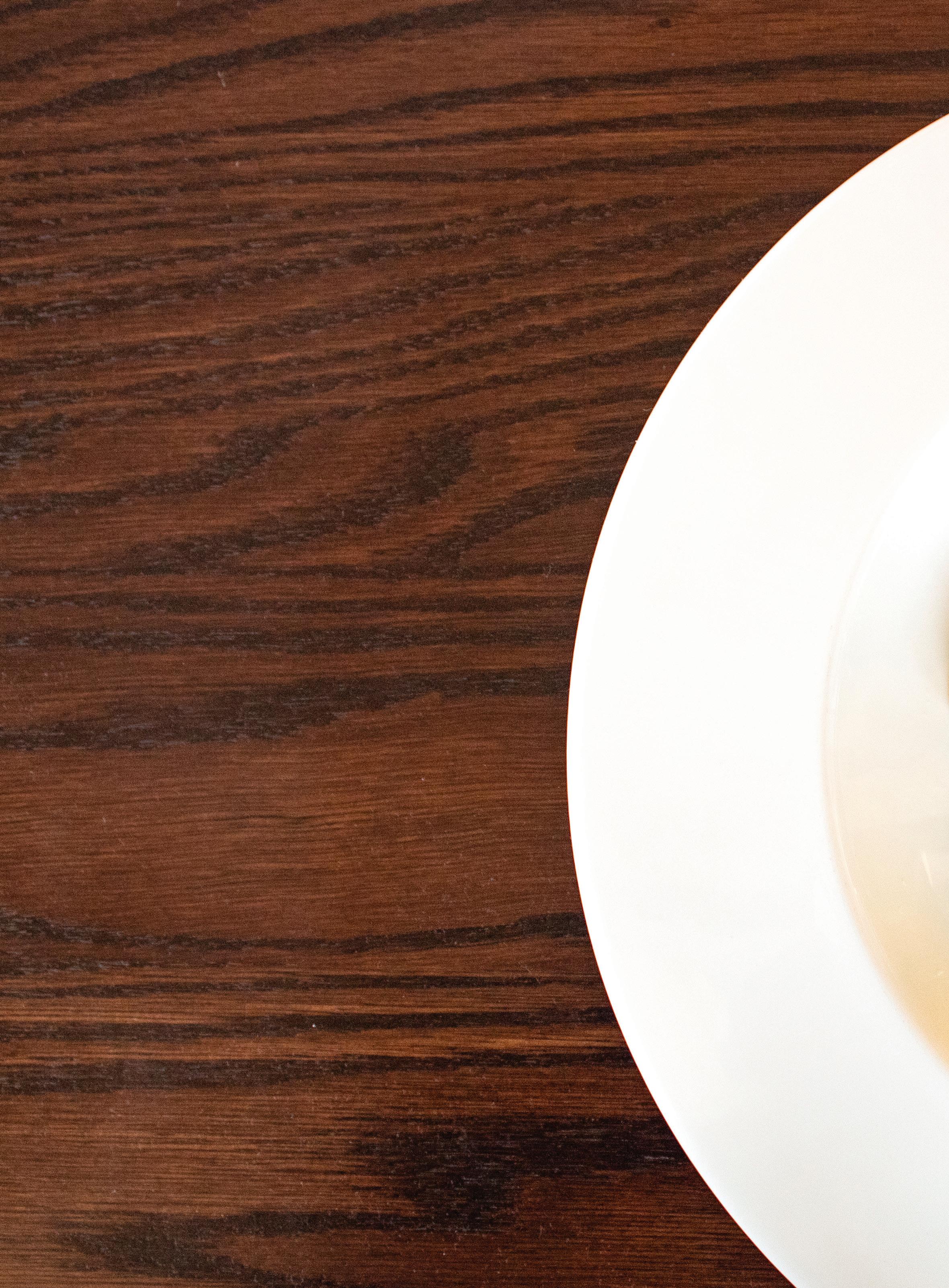
• Kosher Salt (to taste)
Tortellini
• 2 Braised Short Ribs and the Reserved Braising Liquid (see recipe)
• 1 Egg Pasta Dough (rolled into very thin sheets)
• 1/2 cup Celery Root Purée
• (see recipe)
• 2 Tablespoons Thyme (chopped)
• 1 Lemon (zest only)
• All-purpose Flour (as needed)
• 2 Eggs (beaten)
Acorn Hill Farm’s Goat Ricotta, Rye Crisp, Winter House Cured Guanciale, and Preserved Orange
Acorn Ricotta, Winter Citrus, Guanciale, Orange
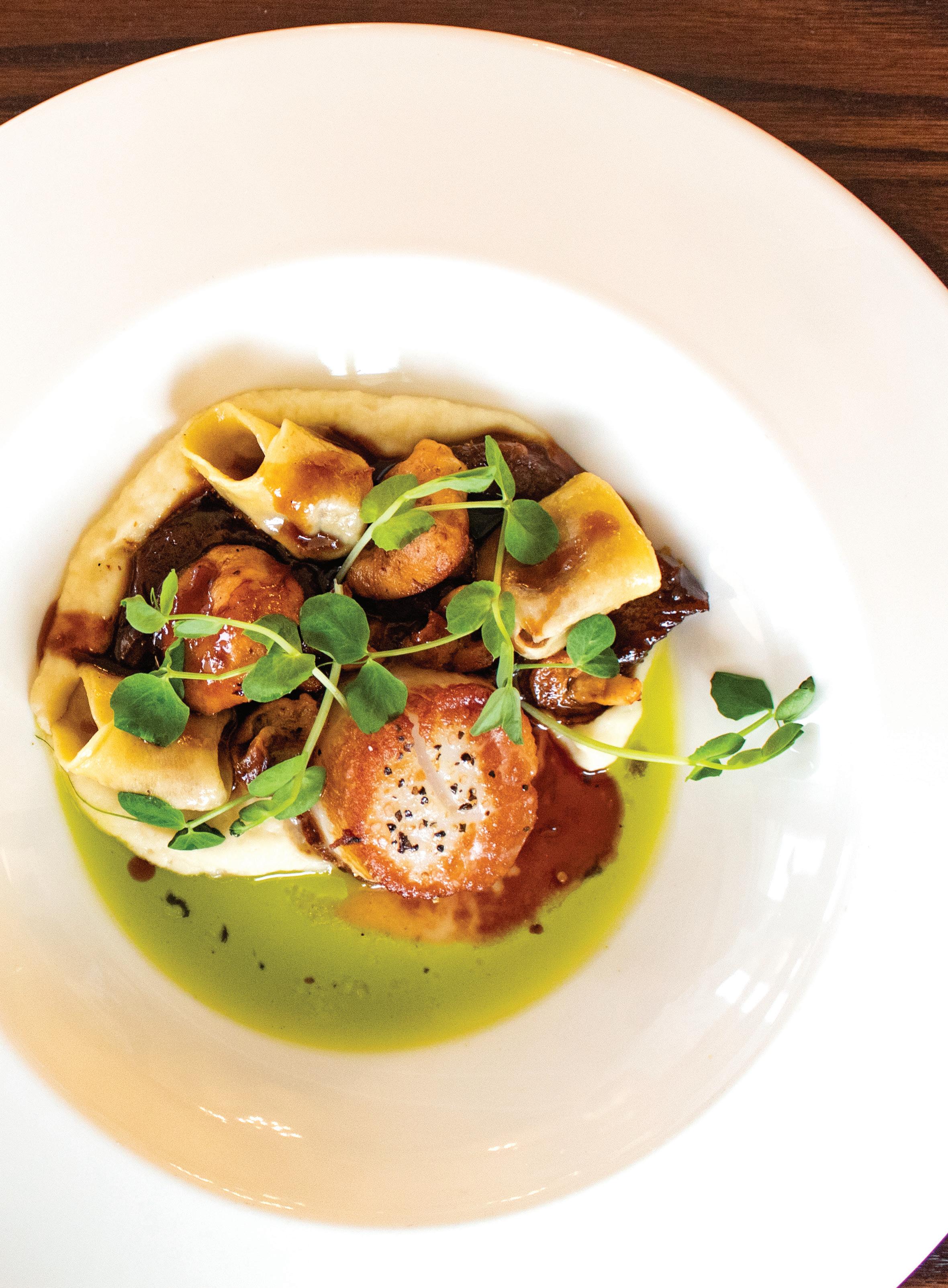
ROASTED REMEMBRANCE FARM FLAME BEETS
Chanterelles
• 1/2 pound Chanterelle Buttons
• 2 Tablespoons Clarified Butter
• Shallots
Basil Oil
• 50 grams Basil
• 50 grams Neutral Oil
Scallops
• 4 - U10 Diver Scallops
Garnish
• 1 Tablespon Basil Oil
• Pea Shoots
Preparation
Braised Shortribs
Chef Note: Prepare the day before. Season thoroughly on all sides with the salt and pepper, then coat the outside with the koji. Let rest, uncovered, on a rack over a sheet pan in the refrigerator overnight. The next day, add oil to a large pan over medium-high heat. Add the beef and brown well on all sides then remove from the pan. Smash the garlic bulb with the side of a knife, then add to the pan along with the other vegetables. Sweat the vegetables until they begin to take color then add the fish sauce and the red wine. Once reduced by half, add the short ribs back to the pan and the veal stock, sprinkle lightly with salt. Bring the liquid to a very dull simmer and cover, let continue cooking for 3 hours or until very tender. Once the short ribs are cooked, remove them from the pan and set aside, strain the vegetables from the pot reserving the liquid.
Celery Root Purée
Add the celery root and potatoes to a small saucepot with the heavy cream. Bring to a dull simmer and allow to cook until tender, about 20 minutes. Once tender, scoop the potatoes and celery root into the bowl of a food processor using a slotted spoon. Process into a smooth purée using the reserved cooking liquid as needed to get to a thick but smooth consistency. Add the butter and season with salt then process again to incorporate. Reserve warm.
Tortellini
Shred 1# of the cooked short ribs and fold in1/2 cup of the celery root puree, the lemon zest, and the chopped thyme, set aside. Dust your work area with a coating of all-purpose flour. Lay the pasta sheets down on top of the flour, lightly brush with the beaten eggs, then cut with a 2 1/2 inch ring cutter.
You will need 12 disks in total. Using a #40 scoop, place a mound of the short rib mixture in the center of each one. Fold the disk in half over the filling in to a half moon shape, bring the two corners together in front of the lump where the filling is and press together. Repeat until all 12 tortellini are complete. Reserve on parchment paper lightly dusted with flour.
Chanterelles
Lightly brush any debris from the chanterelles. Add two Tablespoons of clarified butter to a saute pan and add the chanterelles. Once the chanterelles have begun to release their liquid add the shallots and continue to cook until their liquid has evaporated. Reserve warm.
Basil Oil
Blanch the basil leaves in boiling salted water for 10 seconds then shock in an ice bath. Remove the leaves from the ice bath and add to a blender with the neutral oil, blend on high speed then strain through a cheese cloth.
Final Preparation
Bring a large pot of salted water to a boil and add the tortellini, boil until just cooked, around 5 minutes, remove with a slotted spoon and gently toss with 2 Tablespoons unsalted butter. Slice the reserved short ribs into 1/2 inch thick slices and rewarm in a saute pan with the reserved braising liquid. Add 3 Tablespoons of clarified butter to a saute pan over medium heat and sear the scallops on each side until caramelized and barely medium.
Assembly
Spoon a mound of the celery root puree on each of your four plates and make a small swoosh. Add two slices of short rib on top of the purée, being generous with the liquid they were cooked in. Spoon the chanterelles on top of the short ribs, then place three tortellini on top, and nestle one scallop beside. Garnish with the pea shoots, and 1 Tablespoon of basil oil.
Wine Match
Mount Veeder Winery, Cabernet Sauvignon. ~ Cory Saffran is the Director of Food & Beverage at Richland Country Club.
Golf Kitchen Magazine 58

 The Waxo Grill.
Image courtesy Richland Country Club.
Nicklaus Room.
Image courtesy Richland Country Club.
RECIPE BY JONATHAN HANCOCK
The Waxo Grill.
Image courtesy Richland Country Club.
Nicklaus Room.
Image courtesy Richland Country Club.
RECIPE BY JONATHAN HANCOCK
Quail and Flageolet Vert
Serves 4

Ingredients
Quail
4 Semi-boneless Quail
• Activa® RM
• Kosher Salt (to taste)
Roasted Chicken Dashi
• 1 gallon Quality Homemade Chicken Stock ChefNote: With plenty of natural gelatin.
• 3 whole Chickens (roasted)
• 3 Fennel (sliced very thin)
• 4 Carrots (sliced very thin)
• 3 Onions (sliced very thin)
• 5 stalks Lemongrass (lightly crushed with a meat mallet or the back of a knife)
• 2 ounces Dried Kombu
• 10 Dried Shitakes
• 2 bunches Green Onions
• 2 ounces Ginger (sliced very thin)
• 1 Lemon (peel only)
Beans
• 2 cups Dried Flageolet Vert Beans (soaked in water overnight)
• 1 gallon Roasted Chicken Sashi (see recipe)
• 2 medium Carrots (brunoise)
• 2 Ribs of Celery (brunoise)
• 1 Small White Onion (brunoise)
• Olive Oil
• 3 Tablespoons Butter
• 2 sprigs Dill (chopped)
Garnish
• 4 sprigs of Chervil
Golf Kitchen Magazine 60

Richland Country Club 61
Preparation
Quail - Part 1
Separate the breasts from the carcass and remove the legs leaving the thighs attached. Lightly salt the breast and sprinkle the meat side with the Activa® RM. Place one breast, meat side up, on a small piece of plastic wrap and top with another breast with the meat side down. Carefully roll into a tight cylinder leaving only the skin showing on the outside of the roulade, repeat with the remaining quail breast. Carefully remove the thigh bone from each of the quail legs leaving the meat attached and French the lower portion of the leg. Sprinkle the inside thigh lightly with Activa® RM. Individually wrap each leg in plastic wrap paying particular attention to the bone that is sticking out to ensure the meat doesn’t begin slipping down during the cooking process. Let the quail chill under refrigeration overnight to allow the Activa® RM to set.
Roasted Chicken Dashi
Combine the roasted chickens and the stock in a stockpot and bring to a gentle simmer for two hours, then add all the remaining ingredients, cover, and remove from heat. Allow the vegetables to steep in the stock for 45 minutes, then strain through a fine chinois and allow it to cool.
Beans and Quail Part 2
The next day drain the beans and place in a pot with the roasted chicken dashi, simmer gently for around 40 minutes until the beans are just cooked. In the meanwhile set an immersion circulator to 132 °F and cook the quail for 30 minutes. Once the beans are done saute the onion, carrots, and celery in light oil until just caramelized, ladle 2 cups of the beans including plenty of their liquid into the pan, swirl in the butter and chopped dill, reserve warm and set aside. Remove the quail from the water bath and unwrap from the plastic, place a heavy-bottomed saute pan over high heat and add a heavy amount of high temperature oil, add the quail breast and legs to the pan and keep them moving while the skin gets crisp and begins to color, around 3 minutes, then remove from the pan and let drain on paper towels.
Assembly
Spoon the finished beans in to the center of your serving dish, cut the quail breast in half and place on top of the beans, followed by the legs, a finish with the chervil leaves.
Wine Match
Overture By Opus One, Cabernet Sauvignon. ~Cory Saffran is the Director of Food & Beverage at Richland Country Club.
Golf Kitchen Magazine 62

 The clubhouse at dusk.
Image courtesy Richland Country Club.
Club pool and amenities.
Image courtesy Richland Country Club.
The clubhouse at dusk.
Image courtesy Richland Country Club.
Club pool and amenities.
Image courtesy Richland Country Club.

RECIPE BY LIZ DENHAM
EXECUTIVE PASTRY CHEF
Chocolate Cake
Yields 2 four-inch cakes
Ingredients
Chocolate Cake
• 2 cups All-Purpose Flour
• 1 teaspoon Salt
• 1 teaspoon Baking Powder
• 2 teaspoons Baking Soda
• 3/4 cup Cocoa Powder
• 2 cups Sugar
• 1 cup Oil
• 1 cup Hot Coffee
• 1 cup Buttermilk
• 2 Eggs
• 1 teaspoon Vanilla
Chocolate Italian Buttercream

• 4 Egg Whites
• 1 1/3 cups Sugar
• 1/4 teaspoon Salt
• 16 ounces Butter (room temperature cut into 1-inch pieces)
• 1 teaspoon Vanilla Extract
• 1/4 teaspoon Cream of Tartar
• 1/3 cup Water
• 1 cup Melted Dark Chocolate
Garnish
• Abstract Tempered Chocolate Pieces
• Rosettes of Chocolate Buttercream
• Chocolate Truffles
• Dusting of Gold (gentle)
Preparation
Chocolate Cake
Mix all of the dry ingredients in a stand mixer with a paddle attachment, add the hot coffee, buttermilk, and oil. Scrape the sides and add the eggs and vanilla and mix until incorporated. Pour into small 4-inch cake rounds lined with parchment paper. Bake at 350 °F for 15-20 minutes or until done in the center. Let cool completely, and freeze.
Chocolate Italian Buttercream
Beat the egg whites, salt, and cream of tartar until foamy with a whisk attachment in a stand mixer. Slowly add 1/3 cup of the sugar until soft peaks form. In a pot, place the remaining 1 cup of sugar and 1/3 cup of water and heat on medium-low until the sugar melts and becomes clear. Maintain medium-high heat until syrup reaches 235-240°F. Slowly stream the hot syrup into the mixer. Streaming into the soft peak meringue while whisking continuously. Run mixer until meringue is cool. Switch to the paddle attachment, add the room temperature butter one piece at a time, and then add the salt and vanilla. Stream in the melted dark chocolate to taste. Beat until butter is combined and consistency is fluffy and silky.
Assembly
Place bottom layer cake round on a serving plate and pipe the frosting onto the top of the bottom layer and smooth. Place the top layer of chocolate cake onto the frosted bottom and align the sides. Frost the outside first, getting smooth sides with a warm offset spatula. Finish by frosting and smoothing out the top. Complete the cake by decorating with abstract tempered chocolate pieces, rosettes of chocolate buttercream, chocolate truffles, and a gentle dusting of gold.
Wine Match
2013 Hermann Donnhoff Riesling Spatlese Norheimer Kirschheck.
~ Cory Saffran is the Director of Food & Beverage at Richland Country Club.

Golf Kitchen Magazine 66
 The view from the 15th green. Image courtesy Richland Country Club.
The view from the 15th green. Image courtesy Richland Country Club.
A Line cooks MAnifesto
by Paul Sorgule
What we believe is drawn from our life experiences, our history, our family and friends, our heritage, and what we do during our time on earth. That may sound a bit too philosophical, but it is based on reality. To a large degree, and maybe even larger than we admit – what we do in our work lives helps to define what we believe just as much as what we believe helps to define what we choose to do for work. For cooks this is certainly true, and very important to understand.
A manifesto is a written statement of what a person believes, the actions that he or she might take as a result, and justification for all of the above. Here are some beliefs that might come from a serious cook:
1. COOKING, TRUE COOKING IS DEEPLY ROOTED IN MY HEART AND SOUL
To be a career cook is to dedicate your professional life to everything about food: the source of the ingredient and how the farmer/rancher/fisherman performs his or her craft, the methods of cooking, the flavors that are present and those that might be created, the right equipment and its care, those items that complement what you cook, and the experience of approaching every human sense with your skill set.
2. A COOK’S HANDS TELL A STORY
There is no argument that a cook’s hands are as core to his or her success as is the ability to taste and savor. The hands guide the tools, assess freshness, determine degrees of doneness, skillfully assemble finished foods on a plate, and start the process all over again.
“His hands are miracles. I can watch them for hours, transforming wood (or food) into something it never dreamed of being.”
― Katja Millay, The Sea of Tranquility
3. I COOK, THEREFORE I AM
It may seem challenging to state that cooking is so closely aligned to a persons identity and even value, but, as is the case with some other walks in life, cooking is to many – their purpose, the reason that they demonstrate to others that they are able to contribute in a significant way.
“Food’s my only bag. It’s my gig, my art, and my life. Always has been, always will be. I’m always battling myself – the part of me that says I can and the part of me that says I can’t. My greatest gift has been that the part of me that says “I can’t” is always, always just a little bit louder.”
Marcus Samuelsson, Yes, Chef
4. MY COOK’S PALATE IS WHAT DEFINES MY REAL VALUE IN THE KITCHEN
Once you strip away all of the sizzle that comes from a restaurants’ ambience, the branding of the operations’ connection to the ingredient, the beautiful presentations on the plate, and the impeccable service that may be the calling card for a restaurant – it is the flavor and taste of each item that excites guests and brings them back. A cook’s palate including flavor memory, taste buds, and olfactory sense acuity will separate him or her from the cadre of others who wear the apron and toque.
“A good cook is the peculiar gift of the gods. He (or she) must be a perfect creature from the brain to the palate, from the palate to the finger’s end.”
Walter Savage Landor
5. MY KNIVES ARE AN EXTENSION OF MY HANDS
Of all the tools in a kitchen that are at a cook’s disposal it is the knife that truly demonstrates his or her ability to convert raw materials into a finished product. The best cooks are masters of control when it comes to directing the knife to its assigned task. A cook’s knives are to him or her as a Stratocaster was to Hendrix and Clapton – the instrument of his or her craft.
Golf Kitchen Magazine 68
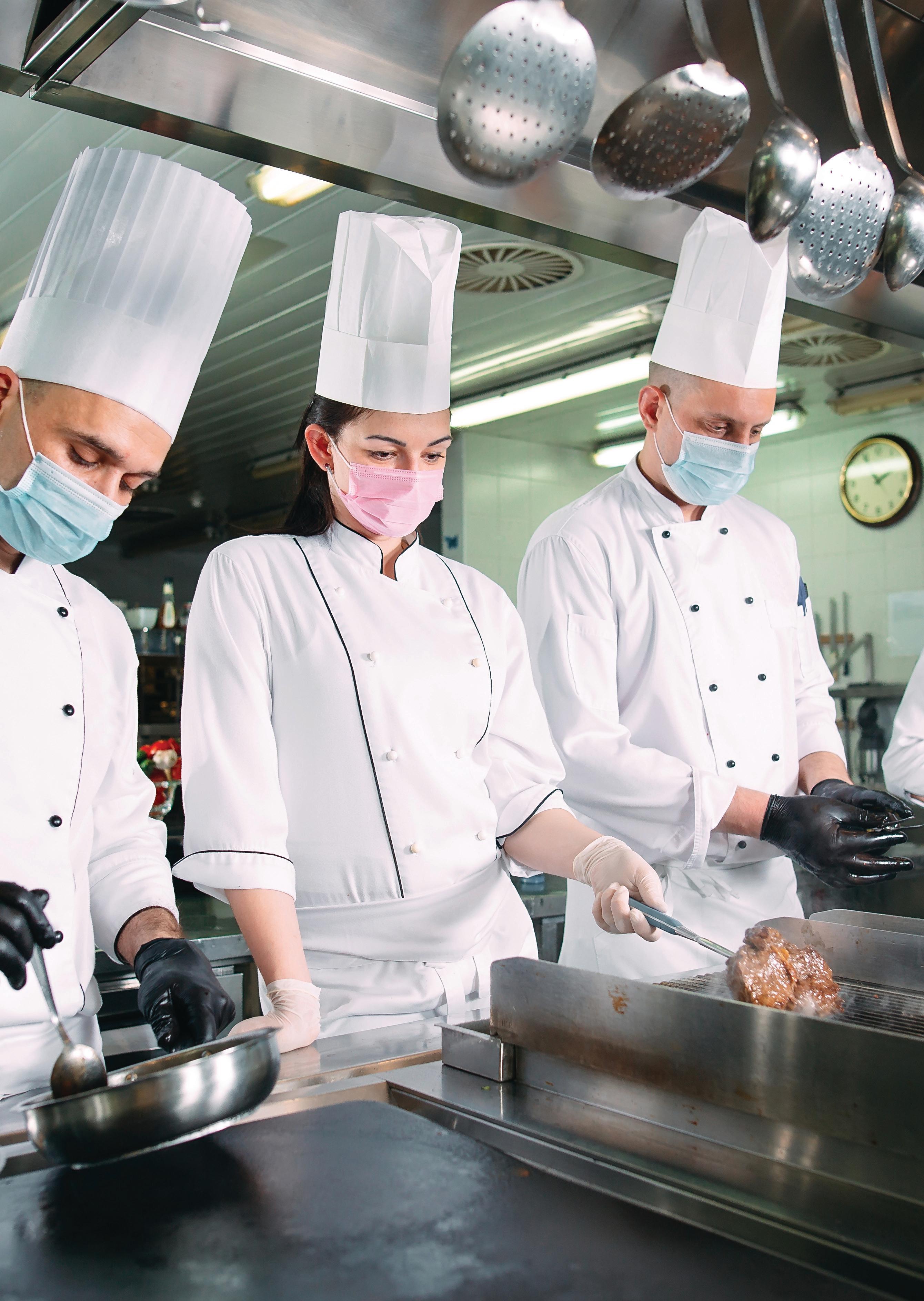

6. THE SET UP OF MY COOK’S STATION IS SACRED AND MUST NOT BE MESSED WITH Mise en place is the most common battle cry of the cook or chef. Making sure that there is enough of the right ingredients at hand, that a station is set in such a way that the cook need not even think about where to reach, and that this order is maintained throughout service, is the single most important step in ensuring a successful shift on the line. This is the cook’s personal domain and it is essential that it remain so. All cooks know not to mess with another’s mise.
7. AS A COOK I COMMUNICATE THROUGH THE FOOD THAT I PREPARE
If you want to know me, if you have a desire to assess my abilities, if it is important for you to enjoy a very important part of who I might be – then taste my food. This is how a cook communicates his or her being.
8. BURNS AND CUTS ARE THE PRICE TO PAY FOR BEING A COOK
To those in other professions a cut or burn would signify a problem, maybe some level of failure, and certainly an event worthy of pause from their work routine. To a cook these burns and cuts signify his or her standing among peers. They are a battle cry and even a badge of honor. Until you are able to present the scars of the kitchen you will rarely find acceptance among other cooks.
9. SWEAT IS A GOOD THING – IT SHOWS THAT I LABOR TO CREATE
Kitchens are hot! The raw heat generated from 500 degree ovens, 800 degree char broilers, and humidity that exists from simmering and boiling foods as well as an active dish machine would be, to some, unbearable. To a cook, this heat is almost welcome – it is the sweat that drips off of a cook’s brow and runs down his or her back that demonstrates the value of hard work.
“Don’t expect success to fall from the sky if it didn’t evaporate from the sweat of your hands.”
Matshona Dhliwayo
10. THE PLATE IS MY CANVAS
All solid cooks are frustrated artists. They have an innate ability and desire to create but may not find an appropriate avenue through painting, sculpting, writing, or playing a musical instrument, but they are able to demonstrate their artistic ability through a plate of food. Unlike other art forms, this outlet allows the cook to appeal to all human senses, not just a few. Cook’s paint their art on a dinner plate every day.
11.
THE TEAM of COOKS, DISHWASHERS and SERVERS AROUND ME IS FAMILY
One of the most fantastic things about kitchen work is the amount of dependence that a cook has on each and every other person who works in the front or back-of-the-house. Trust is essential, understanding is required, patience is a virtue, pride in each other’s success a given, and support through their failures is commonplace in every successful kitchen. We are family.
12.
TIME IS NOT AN EXCUSE – I WILL MAKE IT HAPPEN
In the end, there are no excuses when the customer orders a dish and waits anxiously for its arrival. Insufficient mise, excessively busy nights, cooks and servers who call out or don’t show up, a cook under the weather, or faulty equipment does not matter. If you didn’t find the time to accomplish tasks before then you and your team will find a way to adjust in favor of the guest. No excuses!
“Either you run the day, or the day runs you.”
Jim Rohn
13. I RESPECT THE CHAIN OF COMMAND
Some may balk at “yes chef”, some may not particularly care for the chef or sous chef, and some may find a chef’s decisions in the moment to be incorrect, yet for the good of the needs of the kitchen, in the moment, cook’s know how important it is to respect the chain of command.
14. BUTTER, BACON, SHALLOTS, GARLIC, SALT, PEPPER, AND MIREPOIX
When all else fails, a cook knows that butter, bacon, shallots, garlic, salt and pepper, and mirepoix will come to the rescue. A cook can create incredible dishes with the mastery of these ingredients.
There may certainly be other items to add to your cook’s manifesto – these are some of mine. This is partially what I believe as a cook. What do you believe in?
Paul Sorgule 71
 The 18 green overlooking the back of the clubhouse. Image by Henry Cardenas.
The 18 green overlooking the back of the clubhouse. Image by Henry Cardenas.

Greenwich Country Club Greenwich, Connecticut
Phil Iannuccilli Executive Chef Greenwich Country Club
I am an Australian ex-pat, and I have lived in Connecticut for 18 years and have traveled to over 48 countries covering chefs in private golf and country clubs. It comes with great joy that I am featuring my first home state Executive Chef Phil Iannuccilli, and the prestigious Greenwich Country Club ~ Diana DeLucia
GK: Tell us about your upbringing?
I grew up on Long Island. As a kid, I never thought being a professional chef was even something to consider. My father was a New York City detective, and my mom was a homemaker, or “nurturer”, she liked to say. I attended Chaminade high school and worked part-time at a local restaurant. At some point, I realized that I liked the restaurant business. I liked the interaction with the customers. I enjoyed the mechanics of it, from open to close, every aspect. So, I decided to study management and continued working. When I was nineteen, I was trained, and became a manager. I did everything, from scheduling, to purchasing, to mopping the floors at the end of the day. I learned how to control costs. I learned how to motivate people. At one point, they decided to put in a salad bar, and the cooks didn’t really know what to do. The boss said to me, “go get a book, and make some salads.” I went to the bookstore, I bought a book and started making salads. There were eighteen holes in that salad bar. Every day, I made eighteen distinctly different, perfect salads… and they were always delicious. I was meticulous about it. I had exact quantities, rotating backups,
and it was impeccably clean. I had a friend, who left the restaurant to go to culinary school at Johnson and Wales. He stopped in to visit and saw what I was doing. He was visibly surprised. He watched for a while. Then he said, “you have talent, you should go to culinary school.” Almost immediately, I switched gears and was studying at The Culinary Arts Center at New York Tech.
GK: What led you to Country Clubs?
When I started culinary school, I didn’t have any professional cooking experience. My first instructor said, “I have a friend you can work for at Cold Spring Country Club. You can get some hands-on experience while going to school.” So, I worked there, and I learned a lot. The beauty of a club is that you gain experience in every area. I worked breakfast, lunch, dinner, weddings, barbecues, social events and holidays. You gain experience in both a la carte and buffet styles of service. It’s all good. Eventually, I got to the point where I had to choose a place to do my externship. I wanted to learn from the best.
GK: Where did you decide to go?
My school was celebrating Bastille Day, and I was in the kitchen. There were lots of local celebrities in the dining room. There were a few politicians and well-known chefs at the time. I said to my instructor, “who’s the best chef out there?” He opened the door so we could peek out, and he said, “you see that guy, that’s Guy Reuge from Mirabelle, he is by far the best chef on Long
Golf Kitchen Magazine 74
INTERVIEW
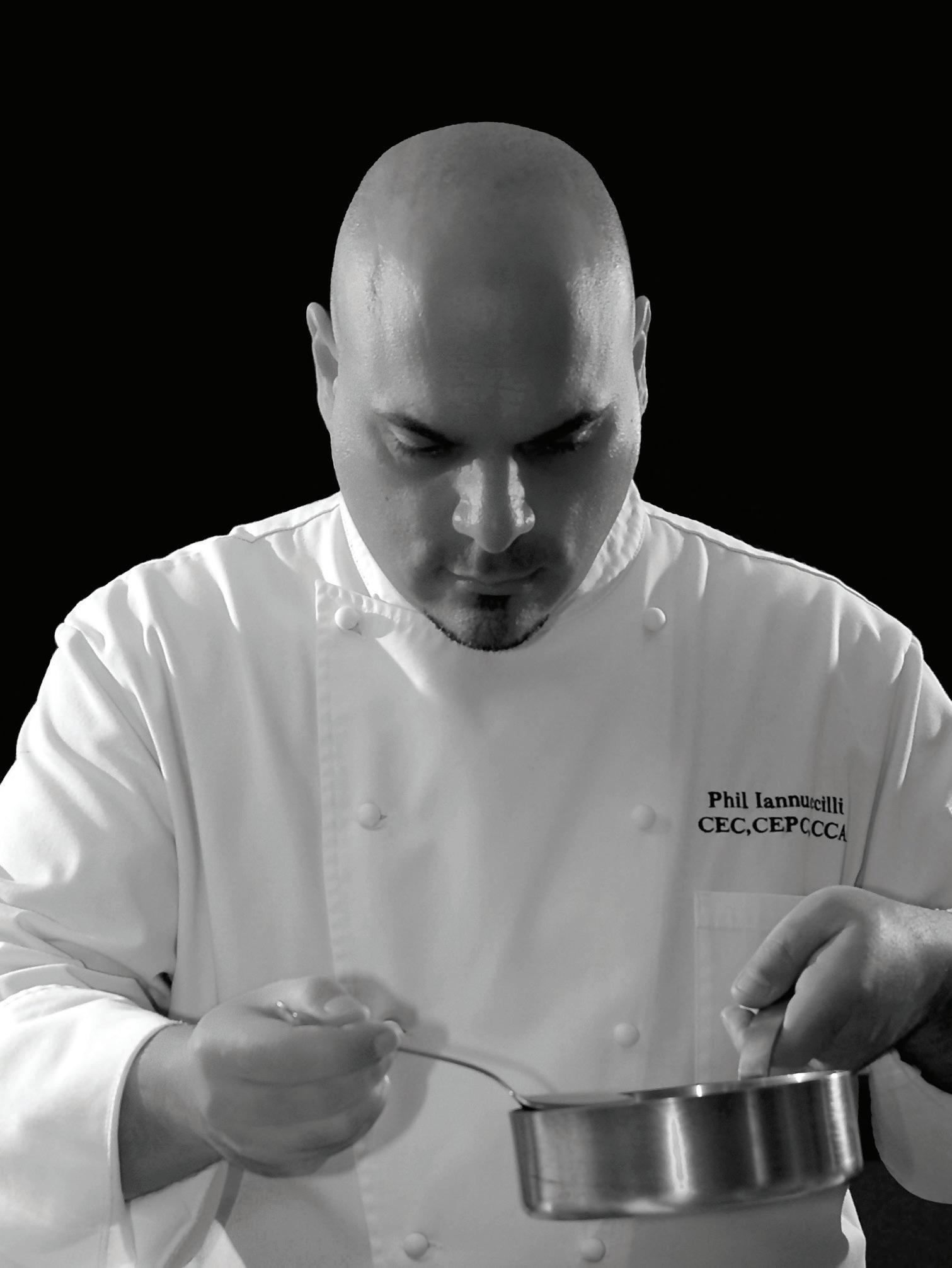
Island!” I snuck over to him, when no one was looking. I crouched down next to him, introduced myself, and said, “I need a place to do my externship, and I would really love to work for you.” I gave him my resume, which had almost nothing on it. He called me the next day and said, “you come Tuesday, and we’ll do pastry”. I’ll never forget it. Mirabelle was in St. James, New York, and it was a true temple of gastronomy. The whole time, I couldn’t believe I was working for a real French Chef - a great one! It was amazing. I did my apprenticeship, and then I stayed longer. I learned so many things. I learned, to be a great chef, you must know how to do everything. At Mirabelle, I made ice cream and sorbets, I made puff pastry and hot soufflés. I made duck confit, duck rillette and duck prosciutto. I worked every station. I learned how a real, reduced veal stock should taste and feel on your tongue. I have so many memories, and throughout my career, I’ve often thought back to how we did it at Mirabelle.
GK: What happened after that?
I reached a point in my curriculum where I could no longer stay at Mirabelle. I had a friend who had just started working for Brendan Walsh at Coyote Grill. Brendan was a rock star chef. He was nationally recognized, and one of the best chefs of his generation. I walked into his kitchen and introduced myself. He was cutting up a fruit. He said, “do you know what this is?” I said, “it’s a papaya.” He then told me how no one in my life will ever understand or appreciate the path that I chose. Then I went to work. Brendan was a bold American chef and what I learned from him was that an American chef can be just as good, if not better, than any other chef in the world. I’ll always appreciate that. I worked on the line, while still in school. I graduated with honors, first in my class. Almost immediately, they offered me the pastry chef position. I could now work full time and I was supplying two busy restaurants with all their breads, pastry, cakes, pies and plated desserts. I stayed for more than a year, but I still wanted to learn more.
GK:
So, what did you do next?
I went to the Culinary Institute of America (CIA) for some continuing studies. I traveled the west coast and landed a job at Square One, in San Francisco. After returning to New York, I took the pastry chef position at a two-storied supper club on the upper east side of Manhattan. Soon after, they fired the chef and said, “We want you to be the chef.” I knew I could do it, so I said yes. In Manhattan, I held several Head Chef
and Pastry Chef positions at various New York City Restaurants - Oceana, One If By Land, Two If By Sea and Sutton Grill, to name a few. This became a pattern going forward - I could work in any capacity. I could work as a full-time pastry chef or as a head chef and train other people to do pastry. As a matter of fact, I’m certified by The American Culinary Federation as both a Certified Executive Chef and Certified Executive Pastry Chef, which is quite rare.
GK: Can you tell us a highlight of your career?
After I got married, I met a real pro. He had worked all over the world. He spoke five languages. He and his wife were relocating and rebuilding their restaurant in Nassau County. It was called Maxxels. It had great style. He told me, “you can showcase your talents, you can do whatever you want”. I was sold. I remember,
it started off a bit slow. Then, out of nowhere, someone spotted the food critic from The New York Times, in the dining room.. I began pacing like a lion, waiting for that ticket to come in. I was all over it. I made every dish myself. She returned two more times, for a total of three visits. Then I received a phone call. We talked for quite a while. She asked me lots of questions. She ended by saying, “you better get ready, I’m giving you an excellent rating”. When the review came out, it said, “The genius in the kitchen sending out this United Nations of tastes is Phil Iannuccilli”. That day, the phone started ringing and it didn’t stop for two full years. We were packed every single night. We did two hundred and fifty dinners, every night, off a three-man line. It was glorious!
”I’m certified by The American Culinary Federation as both a Certified Executive Chef and Certified Executive Pastry Chef, which is quite rare.”
Golf Kitchen Magazine 76
GK: You got the international travel bug, tell us where that began.
I always wanted to see the world and work overseas. My wife is from Indonesia and I wanted to see where she grew up. My son was one, and I figured I could go for a few years before he had to start school. So, we packed up and landed in Jakarta. I secured a two-year contract at a fivestar hotel, as chef de cuisine of the fine dining restaurant. During this time, we traveled all over Indonesia, Singapore, Japan, Thailand, Hong Kong and Vietnam. After successfully completing my contract, we flew directly to London. There I had the great pleasure of working at The Duke of Cambridge, London’s first and only certified
opportunities to do great things. You can design a great market table, or a themed flight of dishes, you can do down home rustic cooking, at the same time you’re plating Michelin starred works of art. One member might go to the pool and tell me how much they loved the fish taco. Another might go to a wine dinner and tell me how much they loved the stuffed rabbit loin. There are so many opportunities to cook at different levels, in different styles, from casual to spectacular.
GK: Tell us about any new plans you have at Greenwich Country Club?
We recently started an in-house dry aging program. We assigned a specific walk-in, just for that purpose. It’s a perfect environment. We’re currently serving 30-day dry aged ribeyes. We have an extensive amuse-bouche collection, and we bake our own breads. Our dessert and pastry offerings continue to change. We just added a coffee house semifreddo, with a chocolate fudge center and a roasted banana rum caramel. We also added my famous “Nuts of Dough”, which are fresh-fried beignets, served with two dipping sauces… perfect for sharing. Our house-made petits fours include chocolate truffles, Florentina, candied orange and designer marshmallows. All a la carte pastas are made by hand. We’re currently working on fresh-made whole wheat and gluten-free pasta. We’re playing around with our pizza crust to offer a variety of alternatives. We’re building our salumi and charcuterie offerings. Currently, we make our own hot dogs, terrines, pâtés, rillettes, jerky… this will continue to develop. We’re also doing more and more wine dinners, popup restaurants and dining excursions.
GK: What programs have you introduced, during COVID-19, that will continue?
organic pub. After London, I worked at Comerç 24, in Barcelona. There I got an inside look at traditional Catalan cuisine and the Michelin starred wizardry of present-day Spain.
GK: You’ve been at Greenwich Country Club for five years. What do you love most about it?
I’ve had a great deal of success here. What I love most about the club is that it provides endless
We started creating market baskets with highend grocery items that our members can pick up and take home. This also included hot and cold prepared foods. It became very popular. Eventually, it will evolve into gourmet baskets of our own proprietary products. Every week we do a new take-home kit. At the moment, most of them are outdoor friendly. They change every week and have quickly become a club staple. We also just added weekday family meal plans, which are a take-home three course meal of comfort food favorites.
Greenwich Country Club 77
”What I love most about the club is that it provides endless opportunities to do great things. You can design a great market table, or a themed flight of dishes, you can do down home rustic cooking, at the same time you’re plating Michelin starred works of art.”
 RECIPE BY PHIL IANNUCCILLI
RECIPE BY PHIL IANNUCCILLI
Tuna Poke Bowl
Chef Note: Poke is a Hawaiian dish consisting of raw diced fish, dressed and tossed with various ingredients. Similar to tuna tartare, I love to include nori, sesame, shiso, sweet soy, ginger and even a touch of Thai curry paste, for good measure.
Ingredients
Tuna Poke Bowl (Yield - 1 Serving)
• 1 cup Korean Yam Noodles (see recipe)
• 4 ounces #1 Sashimi Grade Tuna
• 3 Tablespoons Shelled Edamame
• 2 Tablespoons Pickled Cucumber (see recipe)
• 1 ounce Avocado Wasabi (see recipe)

• 1 ounce Unagi (Eel) Sauce (see recipe)
• 1 Tablespoon Fried Shallots
• 3 Tapioca Crackers
• 1/2 teaspoon Sesame Seeds
• 1 bunch Nori Seaweed
• 1 teaspoon Sliced Scallion
Pickled Cucumber (Yield - 2 Cups)
• 1/2 Seedless Cucumber
• 3/4 cup Rice Wine Vinegar
• 2 Tablespoons Bottled Water
• 1/4 cup Granulated Sugar
• 1/2 teaspoon Fresh Red Chile
• 1/2 teaspoon Ground Coriander
• 1/2 Tablespoon Sea Salt
Avocado Wasabi (Yield - 3/4 Cup)
• 1 Fresh Avocado
• 1 teaspoon Wasabi Paste
• 1 teaspoon Fresh Lime Juice
• 1/2 teaspoon Rice Wine Vinegar
• 1 1/2 teaspoons Granulated Sugar
• 1 teaspoon Fine Sea Salt
Unagi (Eel) Sauce (Yield - 3/4 Cup)
• 1/2 cup of Soy Sauce
• 1/4 cup Granulated Sugar
• 1/4 cup Light Brown Sugar
• 1/2 cup Mirin (Sweet Wine)
79 Greenwich Country Club
Preparation
Korean Yam Noodles
Simmer the noodles until tender. Rinse with cold water and reserve.
Pickled Cucumbers
Thinly slice unpeeled cucumber. Toss with all remaining ingredients. Chill and reserve. Chef Note: Will keep for a few days in the refrigerator. This recipe is also nice with the addition of some crushed peanuts.
Avocado Wasabi
Rehydrate wasabi powder with a touch of water to equal 1 teaspoon. Combine all ingredients in a food processor and mix until smooth.
Unagi (eel) Sauce
Combine all ingredients in a nonreactive sauce pot. Gently simmer until reduced by half. Let cool completely, before serving.
Assembly
Arrange the ingredients around and on top of the noodles. Serve the unagi sauce on the side.
Wine Match
Whispering Angel Rose, Provence, France 2017. ~ Jessica Terry, Food and Beverage Manager.

Golf Kitchen Magazine 80
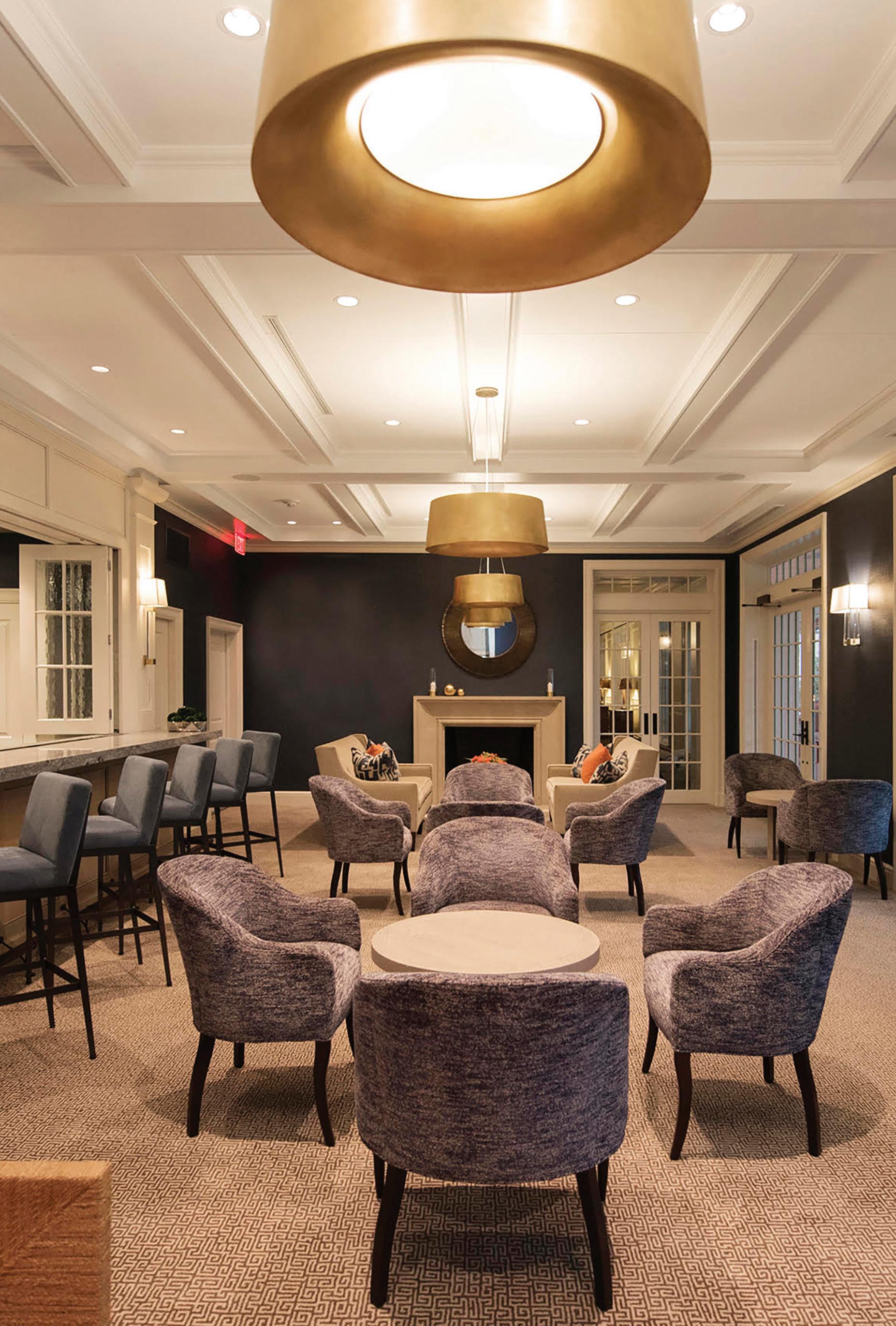 Elmer’s Lounge.
Image by David Woods.
Elmer’s Lounge.
Image by David Woods.
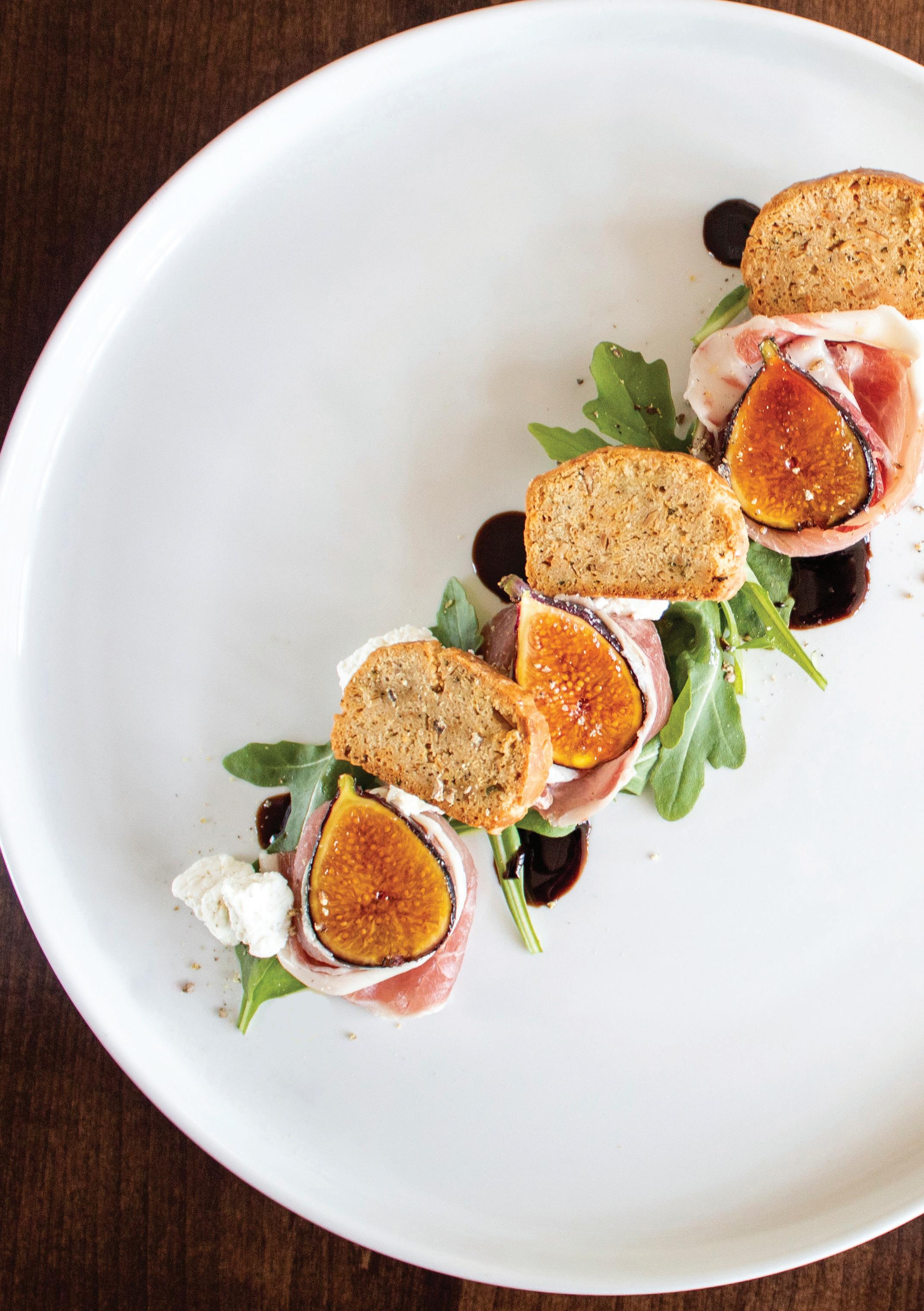 RECIPE BY PHIL IANNUCCILLI
RECIPE BY PHIL IANNUCCILLI
Prosciutto, Figs and Biscotti
Chef Note: I was lucky enough to grow up with three giant fig trees in my backyard. There were two black and one white. It was something I never took for granted. Figs are only in season from late-summer to early fall. It’s for this reason, we have prosciutto wrapped melon. Melon is available all year round. But melon is a poor stand-in for a great fig. Celebrate them when they’re in season. Savory biscotti complete the dish with a crumbly texture and added notes of rosemary and almonds.
Ingredients
Prosciutto, Figs & Biscotti (Yield - 1 Serving)
• 12 Baby Arugula Leaves
• 3 Thin Slices of Prosciutto
• 3/4 ounce Crumbled Goat Cheese
• 3 Halves of Caramelized Figs
• 1/2 ounce Balsamic Honey (see recipe)
• 3 Rosemary Almond Biscotti (see recipe)
• Drizzling of Virgin Olive Oil
• Black and White Pepper
Balsamic Honey (Yield - 1 cup)
• 2 cups Balsamic Vinegar

• 1 cup Granulated Sugar
• Pinch of Sea Salt
Rosemary Almond Biscotti (Yield - 2 Dozen Biscotti)
• 1 cup All Purpose Flour
• 1/2 teaspoon Baking Powder
• 1/2 teaspoon Fine Sea Salt
• 1 teaspoon Ground Black Pepper
• 1/2 cup Grated Parmigiano Reggiano
• 1/4 cup Toasted Sliced Almonds
• 1/2 Tablespoon Chopped Rosemary
• 3 Tablespoons Diced Sweet Butter
• 2 Tablespoons Whole Milk
• 1 Large Whole Egg
Preparation

Balsamic Honey
Combine the ingredients in a nonreactive sauce pot. Gently simmer, while stirring, until reduced by half. Let cool, chill and reserve. Chef Note: When finished, it should have the consistency of honey, hence the name.
Rosemary Almond Biscotti
Chef Note: Biscotti means twice cooked. First, you make the dough, shape into logs and bake. Then you slice the logs into cookies, lay them flat and bake (or toast) them again. Preheat your oven to 350˚F. Prepare a half sheet pan with parchment paper and pan spray. Mix all the dry ingredients on low speed with the paddle attachment. Add the butter and mix until wet sand consistency, but not yet a dough. Add the milk and the egg. Mix until a sticky dough forms. Turn the dough out onto a lightly floured surface. Divide in half and roll into two cylinders. Space them lengthwise on the parchment lined sheet tray and press to flatten them a bit. Brush them with one additional egg yolk and a touch of water. Bake, turning halfway, until golden brown and firm to the touch. Biscotti are usually done when they start to crack open on the top. Chef Note: Wrap the logs in plastic, while they’re still hot. This contributes steam, which helps to prevent breakage when cutting. Cut all the biscotti, straight across, approximately 1/4 inch thick. Lay them face down on a sheet tray, without paper. Return to the oven and toast until slightly colored.
Final Preparation and Assembly
Select the best arugula leaves and stream them diagonally across the plate. Wrap the prosciutto like three flowers and evenly space them on top of the arugula. Intermingle the goat cheese along the route. Dip the face of each fig half in granulated sugar and caramelize with a torch. Let them cool, then nest each one into the prosciutto. Zigzag little pools of balsamic honey onto the plate. Place the biscotti on top and between the figs and prosciutto. Finish with a drizzling of olive oil and cracked black and white pepper.
Wine Match
Louis Jadot Pinot Noir, Burgundy, France 2016. ~ Jessica Terry, Food and Beverage Manager.
Golf Kitchen Magazine 84
 The 11th green at sunset. Image by Henry Cardenas.
The 11th green at sunset. Image by Henry Cardenas.

Golf Kitchen Magazine 86
RECIPE BY PHIL IANNUCCILLI
Chilled Cucumber and Crab
Chef Note: When summer arrives, there are ingredients and recipes that immediately come to mind. Chilled soups are one of them. Gazpacho is world famous and was the starting point for this next dish. I’ve made traditional gazpacho, white gazpacho, golden gazpacho with yellow tomatoes and chive blossoms, watermelon gazpacho… and now, essentially, a green gazpacho. The focus is on the cucumber, with some honeydew melon. Then I added crabmeat, which sort of makes it a cold appetizer.
Yields 2
Ingredients
Chilled Cucumber and Crab (Yield - 1 Serving)
• 3/4 cup Chilled Cucumber Soup (see recipe)
• 1 ounce Jumbo Lump Crabmeat
• 1 pinch Ground Coriander
• Drizzling of Olive Oil
• Summer Marigold
• Microgreens
Chilled Cucumber Soup (Yield - 2 Cups)
• 1 1/4 cups Peeled Seeded Cucumber
• 3/4 cup Peeled Seeded Honeydew
• 1/2 Jalapeño (cleaned)
• 6 Mint Leaves
• 1 Lime (juiced)
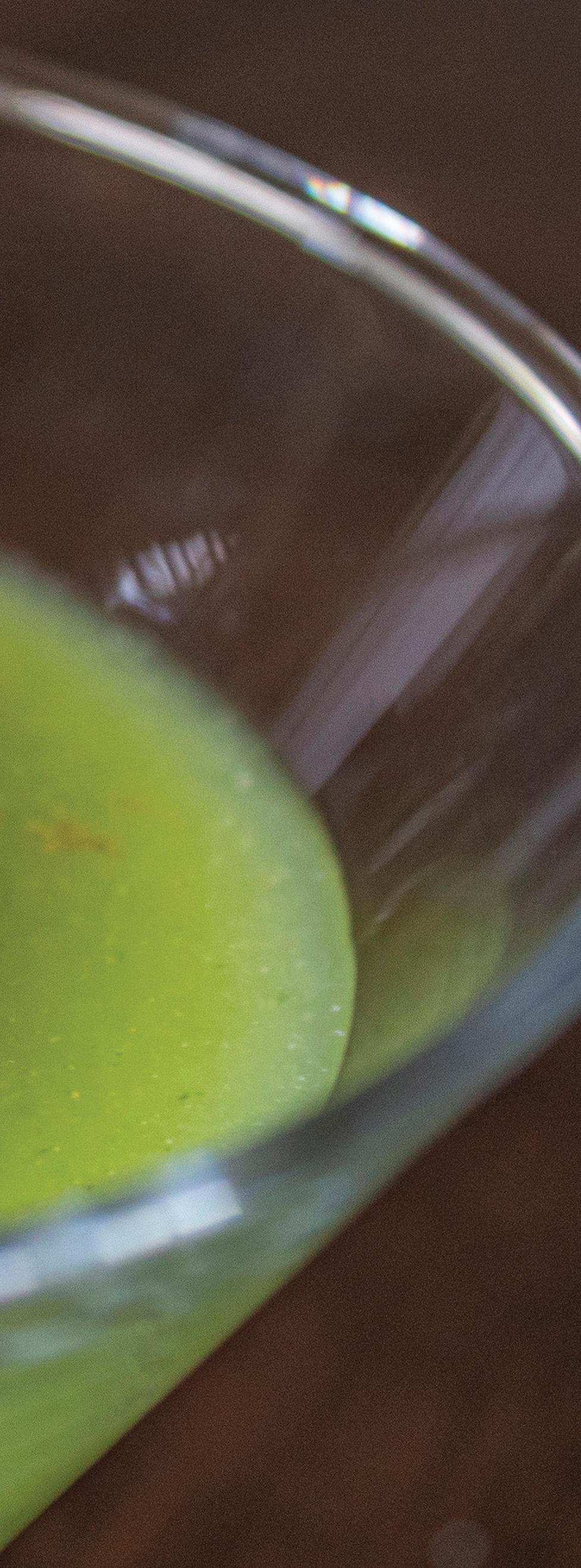
• 1 Tablespoon Honey
• 1 pinch Sea Salt
Preparation
Chilled Cucumber Soup
Combine all ingredients in a blender and purée until smooth. Don’t let it heat up, while blending. Refrigerate immediately.
Final Preparation and Assembly
Pour the cold soup into a cold martini glass. Place the chilled crabmeat on top at center. Drizzle some olive oil and dust the top with ground coriander seed. Artfully arrange the marigold petals and microgreens.
Wine Match
Fiegl Sauvignon Blanc Collio, Friuli-Venezia Giulia, Italy, 2018. ~ Jessica Terry, Food and Beverage Manager.

Golf Kitchen Magazine 88
The first tee and the 18th green. Image by Henry Cardena.

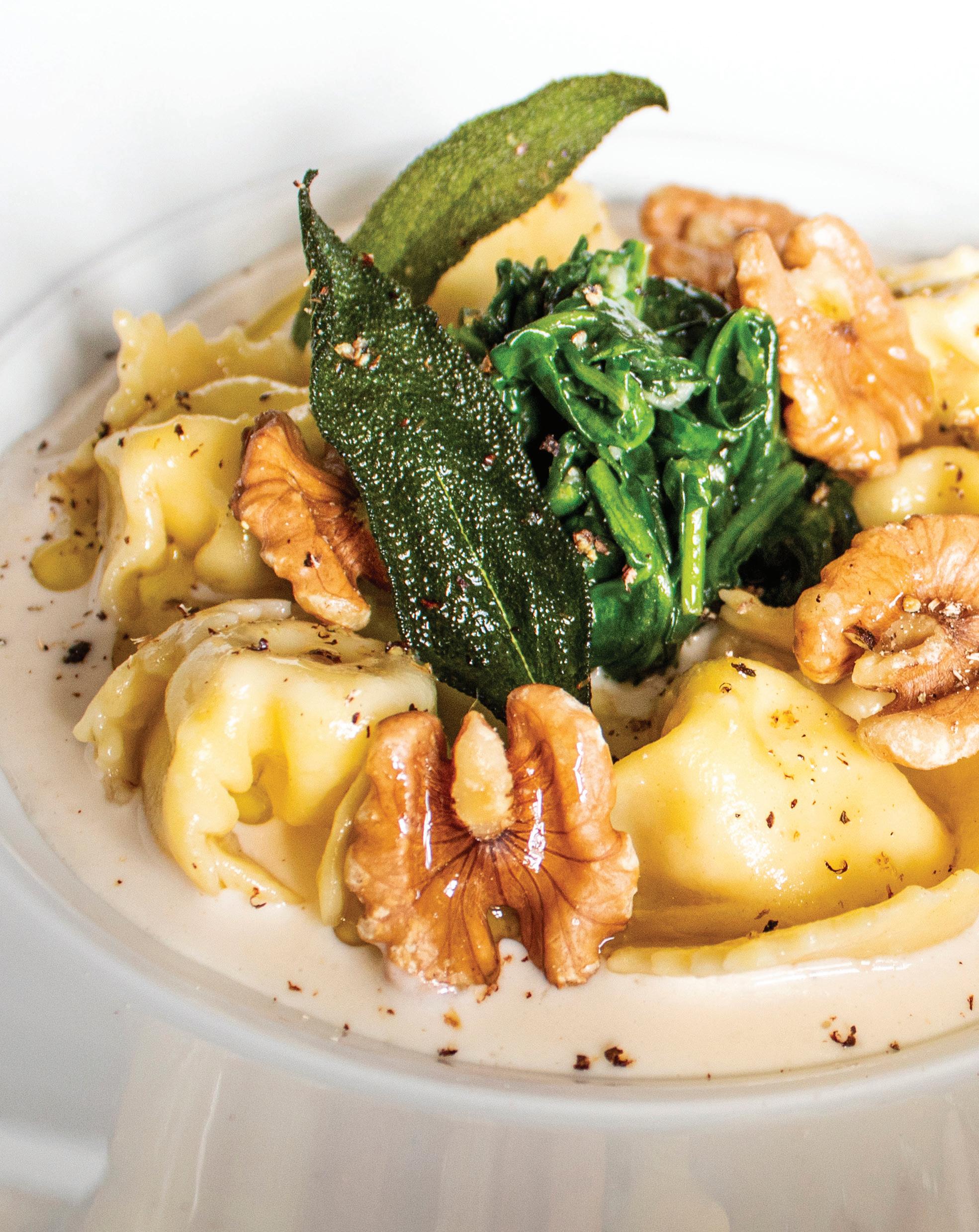 RECIPE BY PHIL IANNUCCILLI
RECIPE BY PHIL IANNUCCILLI
Handmade Agnolotti
Chef Note: Quite often, I like to imagine the best qualities of several dishes and combine them to create a new one. Here, I started with the classic brown butter sage (Cappellacci di Zucca). I added walnuts (Pansotti alle Noci). Then I finished it with cream (Fettuccine Alfredo – although originally without cream) and the black pepper from Carbonara fame (Coal Miner’s Pasta). The spinach and nutmeg are perfect team players in this scenario.
Ingredients
Handmade Agnolotti (Yield - 1 Serving)
• 2 ounces Brown Butter Cream (see recipe)
• 6 Agnolotti (see recipe)
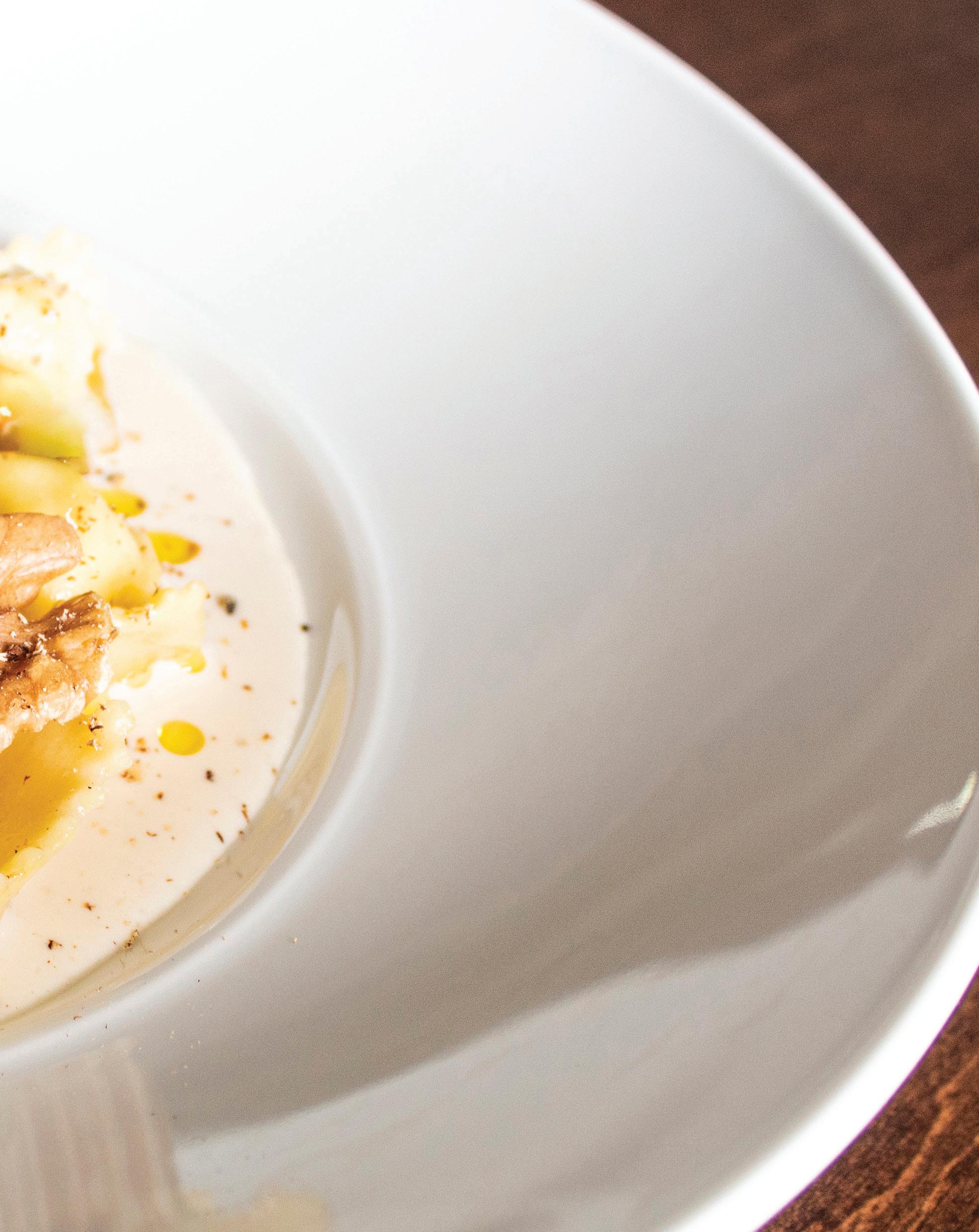
• 1/2 cup Spinach (sautéed)
• 5 Walnut Halves (toasted)
• 2 Fried Sage Leaves
• 1 touch Cracked Pepper
• Drizzling of Virgin Olive Oil
• 1 touch Grated Nutmeg
Fresh Pasta Dough (Yield - 1 1/2 lbs.)
• 200 grams Durum Wheat Flour
• 1 pinch Fine Sea Salt
• 2 Whole Eggs
• 2 ounces Warm Water
• 1 Tablespoon Olive Oil
The Filling (Yield - 2 Cups)
• 2 cups Ricotta Impastata
• 1/2 cup Parmigiano Reggiano
• 1 1/2 teaspoons Fresh Grated Nutmeg
• 1/2 teaspoon Ground White Pepper
• 2 teaspoons Fine Sea Salt
• 1 Whole Egg (beaten for egg wash)
Brown Butter Cream (Yield - 2 Cups)
• 3 Tablespoons Sweet Butter
• 5 Walnut Halves
• 3 Whole Sage Leaves
• 1 3/4 cups Heavy Cream
• 1/4 cup Grated Parmigiano Reggiano
• 1 pinch Fine Sea Salt
Preparation

Fresh Pasta Dough
Start the dough in a mixer with the dough hook attachment. Blend the flour and salt. Then add all the wet ingredients. Mix for 5-10 minutes until a strong dough forms. Turn out onto a lightly floured surface. Finish kneading by hand, while incorporating flour until very stiff. Wrap in plastic and refrigerate for several hours or overnight.
The Filling
Mix all ingredients with the paddle attachment until fully incorporated. Roll the pasta dough through a machine, progressively thinner, until almost translucent. Line Tablespoons of filling along the middle of the pasta, approximately 1 1/2 inches apart. Brush the edges and between the filling with a touch of egg wash. Fold the pasta over the filling longways. Roll and cut the agnolotti with a fluted pastry wheel. Set aside for cooking.
Brown Butter Cream
Melt the butter in a saucepan over medium high heat. Swirl the butter until it slowly and evenly starts to brown. Add the walnuts and then the sage. Add the cream and lower the heat. Simmer gently for 3-4 minutes. Add the cheese and salt, whisking until just melted. Quickly remove from the heat.
Assembly
Spoon the sauce onto the plate. Arrange the cooked agnolotti in a circle on top of the sauce. Pile the spinach high in the center. Carefully place the walnuts around. Garnish with the fried sage leaves and finish with cracked pepper, olive oil and freshly grated nutmeg.
Wine Match
Sonoma Cutrer Chardonnay, Sonoma County, California 2016. ~ Jessica Terry, Food and Beverage Manager.
Golf Kitchen Magazine 92
 The 10th green and 11th fairway.
Image by Henry Cardenas.
RECIPE BY PHIL IANNUCCILLI
The 10th green and 11th fairway.
Image by Henry Cardenas.
RECIPE BY PHIL IANNUCCILLI
Spanish Meatballs
Chef Note: Albóndigas or “Spanish Meatballs” are typically found at tapas bars and restaurants in Spain. Most times, they’re served “en cazuela”, similar to the skillet we use here. In Barcelona, I once had Albóndigas, swimming in a sauce with stewed squid. It was both curious and phenomenal at the same time. Here, I’ve incorporated lots of Arabic influence, which I love.
Ingredients
Spanish Meatballs (Yield - 1 Serving)
• 5 - 1 1/2 ounce Meatballs (see recipe)
• 4 ounces Saffron Tomato Sauce (see recipe)
• 1/2 ounce Manchego (shaved)
• 1 1/2 Tablespoons Raisins
• 1 1/2 Tablespoons Sliced Almonds
• 1 teaspoon Parsley (chopped)
• Drizzling of Virgin Olive Oil
The Meatballs (Yield - 10 Meatballs)
• 12 ounces Ground Beef
• 4 ounces Ground Pork
• 1/4 small Onion (minced)
• 2 cloves Garlic (minced)
• 2 Tablespoons Parsley (chopped)
• 2 teaspoons Fennel Seed
• 2 teaspoon Spanish Paprika
• 4 Tablespoons Parmigiano Reggiano
• 1 Whole Egg
• 1/2 cup Whole Milk
• 1/2 cup Panko Crumbs
• 2 teaspoons Kosher Salt
• 1 teaspoon Black Pepper
Saffron Tomato Sauce (Yield - 2 Cups)
• 2 cups Tomato Sauce
• 1 pinch Spanish Saffron
• 1/2 teaspoon Ground Clove
• 1/4 cup Veal Stock

• 2 teaspoon Honey
• 2 teaspoon Red Wine Vinegar
• 1 pinch Sea Salt
Golf Kitchen Magazine 94

 Greenwich Country Club entrance.
Image by Henry Cardenas.
Greenwich Country Club entrance.
Image by Henry Cardenas.
Preparation
The Meatballs
Sweat the onion and garlic in a touch of olive oil and let cool. Toast and crush the fennel seeds. Mix all the ingredients in a big bowl until fully incorporated. Chill the mix for one hour before shaping. Use a portion scoop or a scale to create 1 1/2 ounce meatballs. Pan fry or roast them in the oven at 375˚F. Chef Note: Line your meatballs on a half sheet pan with a touch of water covering the bottom. This prevents the meatballs from browning too much in one spot (where they touch the pan). The water should evaporate, just as the meatballs are finished cooking.
The Sauce
Combine the ingredients in a nonreactive saucepot. Gently simmer for 15-20 minutes. Cool slightly and purée smooth in a blender. Continue to cool and reserve
Assembly
Heat the meatballs in the sauce. Arrange them in a circle at the center of a small skillet. Top with the sauce, shaved Manchego, raisins, almonds, parsley and finish with a drizzling of virgin olive oil.
Wine Match
Finca Nueva Tempranillo, Rioja, Spain 2014. ~ Jessica Terry, Food and Beverage Manager.

Greenwich Country Club 97
Chicken Barbacoa
 RECIPE BY PHIL IANNUCCILLI
RECIPE BY PHIL IANNUCCILLI

Chef Note: Barbacoa is a traditional form of Mexican barbecue, whereby meat is wrapped in fragrant leaves and cooked over hot coals in a covered pit in the ground. This slow cooking process both roasts and steams the meat while imparting a smoky quality. Here, I’ve paired the chicken with lots of variety. It’s deep and tasty. It’s bright and fresh. It’s displayed on shingled corn husks, for everyone to enjoy.
Ingredients
Chicken Barbacoa (Yield - 1 Display)
• 2 cups Red Rice & Beans (see recipe)
• 12 ounces Chicken Barbacoa (see recipe)
• 1/4 cup Orange Fillets Diced
• 1/4 cup Diced Avocado
• 1/4 cup Queso Fresco
• 1 large Radish (sliced)
• 2 Scallions (sliced)
• 3 Tablespoons Pumpkin Seeds
• 1 Cilantro Sprig
• 2 teaspoons BBQ Spice Mix
• Drizzling of Olive Oil
• 1/2 cup Salsa Verde (see recipe)
• Corn Husks
Adobo Spice Paste (Yield - 1 Cup)
• 1 Dried Ancho Chile
• 2 Dried Guajillo Chiles
• 1/4 Spanish Onion
• 2 cloves Garlic
• 1/4 cup Apple Cider Vinegar
• 1 1/2 cups Bottled Water
• 2 Tablespoon Orange Blossom Honey
• 1 teaspoon Cinnamon (ground)
• 1 teaspoon Cumin (ground)
• 1/2 teaspoon Clove(ground)
• 1/2 teaspoon Allspice (ground)
• 1 pinch Sea Salt
Preparing the Chicken (Yield - 11/2 lbs. Boneless Chicken)
• 1 Whole 2 1/2 lbs. Chicken
Red Rice and Beans (Yield - 1 Quart)
• 3 cups Cooked Rice
• 1/4 cup Blended Oil
• 1/2 Carrot Diced Fine
• 1/4 Red Onion (diced fine)
• 1/2 Red Pepper (diced fine)
• 1 clove Garlic (minced)
• 1 Tablespoon Dried Chile (ground)
• 2 teaspoons Cumin (ground)
• 1 pinch Sea Salt
• 1/2 cup cooked Red Beans
Salsa Verde (Yield - 2 Cups)
• 10 each Tomatillos
• 1/4 Spanish Onion
• 1/2 Jalapeño (cleaned)
• 2 cloves Garlic
• 1 Lime Juiced
• 1/4 cup Cilantro
• 2 teaspoon Cumin (ground)
• 1 pinch Sea Salt
Preparation
Adobo Spice Paste
Start by roasting the dried chiles, onion and garlic in a 375˚F oven for 15-20 minutes. When chiles are cool enough to handle, remove and discard the stems and seeds. Combine all ingredients in a nonreactive sauce pot. Simmer gently for 20-25 minutes, until everything is tender. Cool slightly, then puree to a smooth thick paste.
Preparing the Chicken Barbacoa
Rub the paste all over and inside the chicken. Refrigerate overnight. Remove from the frige and temper at room temperature for one hour. Slow smoke the chicken until fully cooked and tender. Cool slightly, then pull the meat off the bones and reserve.
Red Rice and Beans
Sweat the carrot, onion, pepper and garlic in the oil until tender. On low heat, to prevent sticking, toss the rice and all remaining ingredients.
Salsa Verde
Remove the husks from the tomatillos. Wash under hot water to remove the sticky residue and cut them in half. Roast the tomatillos, onion, jalapeno and garlic in a 375˚F oven until tender. Cool slightly, add all remaining ingredients and pulse in a food processor. Continue to cool and reserve.
Golf Kitchen Magazine 100
Assembly
Start by laying out your corn husks. Spoon the rice and beans on top. Then arrange the chicken and all remaining ingredients. Serve the salsa verde on the side.
Wine Match
Granbazan Albarino, Riax Baixas, Spain 2018. Wine Match by Jessica Terry, Food and Beverage Manager.
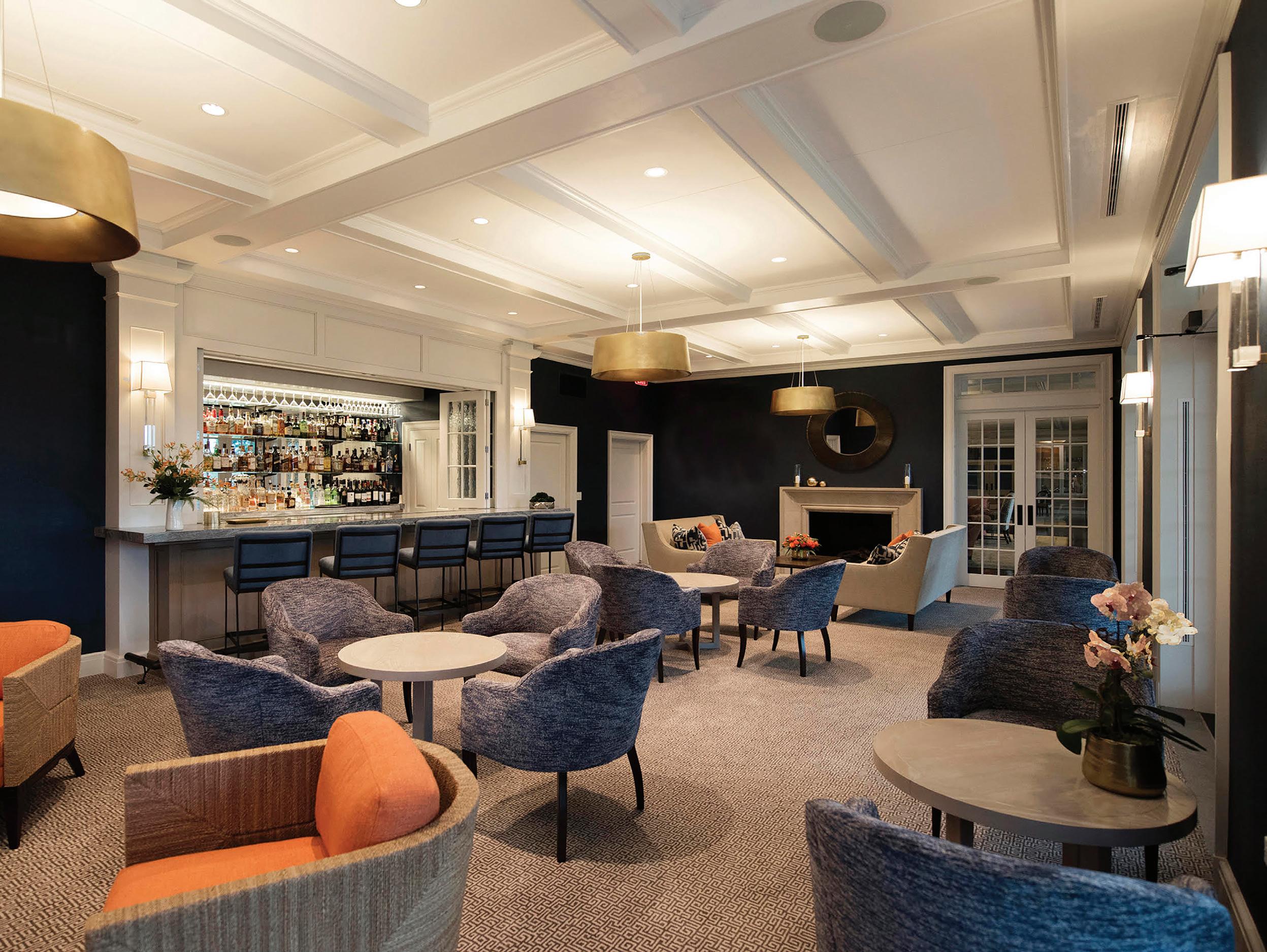
Greenwich Country Club 101
Elmer’s Lounge.
Image by David Woods.
GROWING A FRESHER FUTURE
Elevate your culinary experience with the Flex Farm. Grow more than 20 pounds of fresh, leafy greens in less than a month.

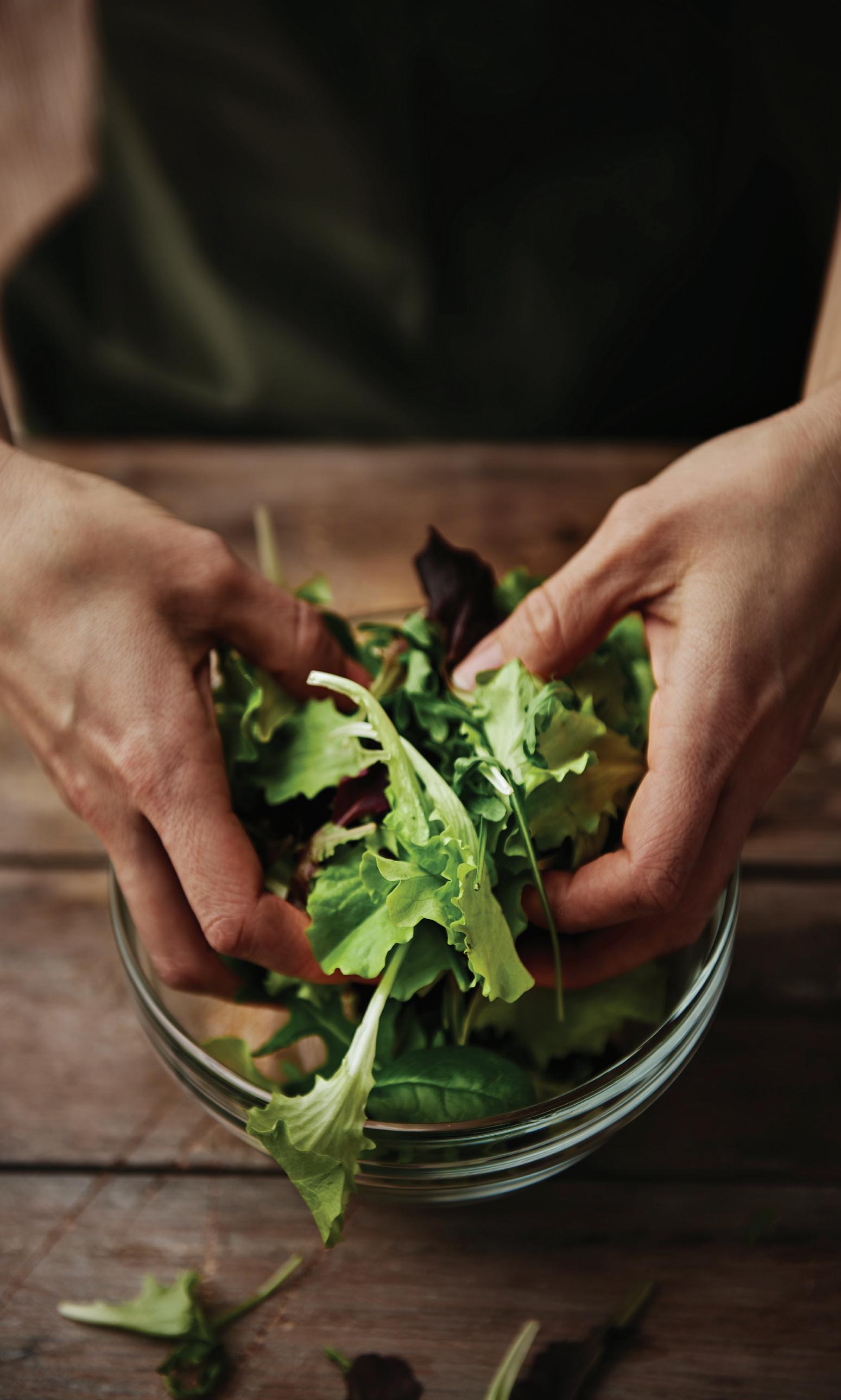
Scalable. Sustainable. Local.

Flex Farm technology is deployable at both small and large-scale and everything in between. It positively impacts neighborhoods, businesses and supply chains in a big way.
Within 2 weeks, the Flex Farm can be on location. Not only is it easy to assemble, but it is also 40% more energy-efficient than all of its competitors and manufactured right here in the USA.
Contact us today to learn more!
info@forkfarms.com 877.886.7736 www.forkfarms.com 101 W Edison Ave, Suite 224 Appleton, WI 54915




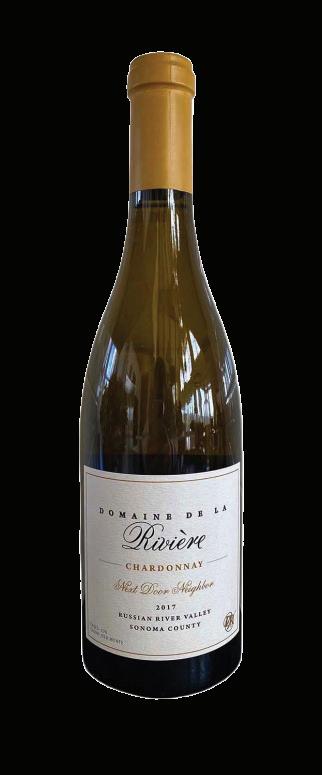





“Our family’s goal is to craft unique, limited production, age-worthy wines from the Middle Reach of the Russian River Valley that create memorable experiences.” 6157 Starr Road, Windsor, CA - domaineriviere.com - (707) 888-1598

Addison Reserve Delray Beach, Florida

Peter Zoole Executive Chef Addison Reserve Country Club
I initially interviewed Chef Zach Bell at Addison Reserve in 2017 when I first began producing the second Golf Kitchen book. At the same time, Golf Kitchen was growing quite quickly, and I had many dreams of what I wanted Golf Kitchen to be as a business. Since 2017, we have introduced a magazine, events, and a culinary awards program specifically for the Private Golf and Country Club industry. Fast forward to 2020, after many delays, Peter Zoole has taken the helm at Addison Reserve. I have enjoyed the journey and getting to know Peter as much as I enjoyed getting to know Zach. ~
Diana DeLucia
GK: When did your interest in cooking arise?
I was born and raised in Greenville and Spartanburg, South Carolina, and I wasn’t interested in cooking at all. We had a structured family dinner, but it was meat and potatoes, and I didn’t give it much thought.
GK: How were you introduced the the culinary world?
I got into the food business in high school at a place in Spartanburg called Heavenly Ham, and I was washing dishes, nothing exciting. When I went off to college at Francis Marion University (FMU) I retured to Heavenly Ham on my summer break. One of my coworkers, Laurel Phillips was opening a restaurant and said that if I wanted a summer job the following year to please come and see her.
The following summer break, I worked for her in the front of the house bussing, answering phones, waiting tables, a bit of everything. I fell in love with the whole thing, the pace of service, and the excitement of entertaining guests and everything that comes with it. I was intrigued by what the chefs and the cooks were doing in the kitchen. I was 19 or 20 at the time and had realized my passion.
I didn’t want to go back to college; I was not a good student and my grades were poor. I wanted to pursue a career in the culinary field, I needed to tell my parents. My father has a law degree, and my mother has an MBA, I felt that was expected of me. When I told my father I wanted to pursue a culinary career, he was surprisingly supportive, and it was a significant relief.
GK: Which culinary school did you attend?
I intended to enroll in Johnson and Wales in Charleston, South Carolina, and moved there shortly after making my decision. I needed a job to support myself and got a job at a restaurant called The Library at Vendue, once again washing dishes. I was so fast at washing dishes that the sous chef Chef Brian Kleinbub took me under his wing.
I worked my way up the ranks, and the Executive Chef Paul Tinsley, who graduated from the Culinary Institute of America (CIA), told me that I didn’t need to go into debt. I could learn more
INTERVIEW Golf Kitchen Magazine 106
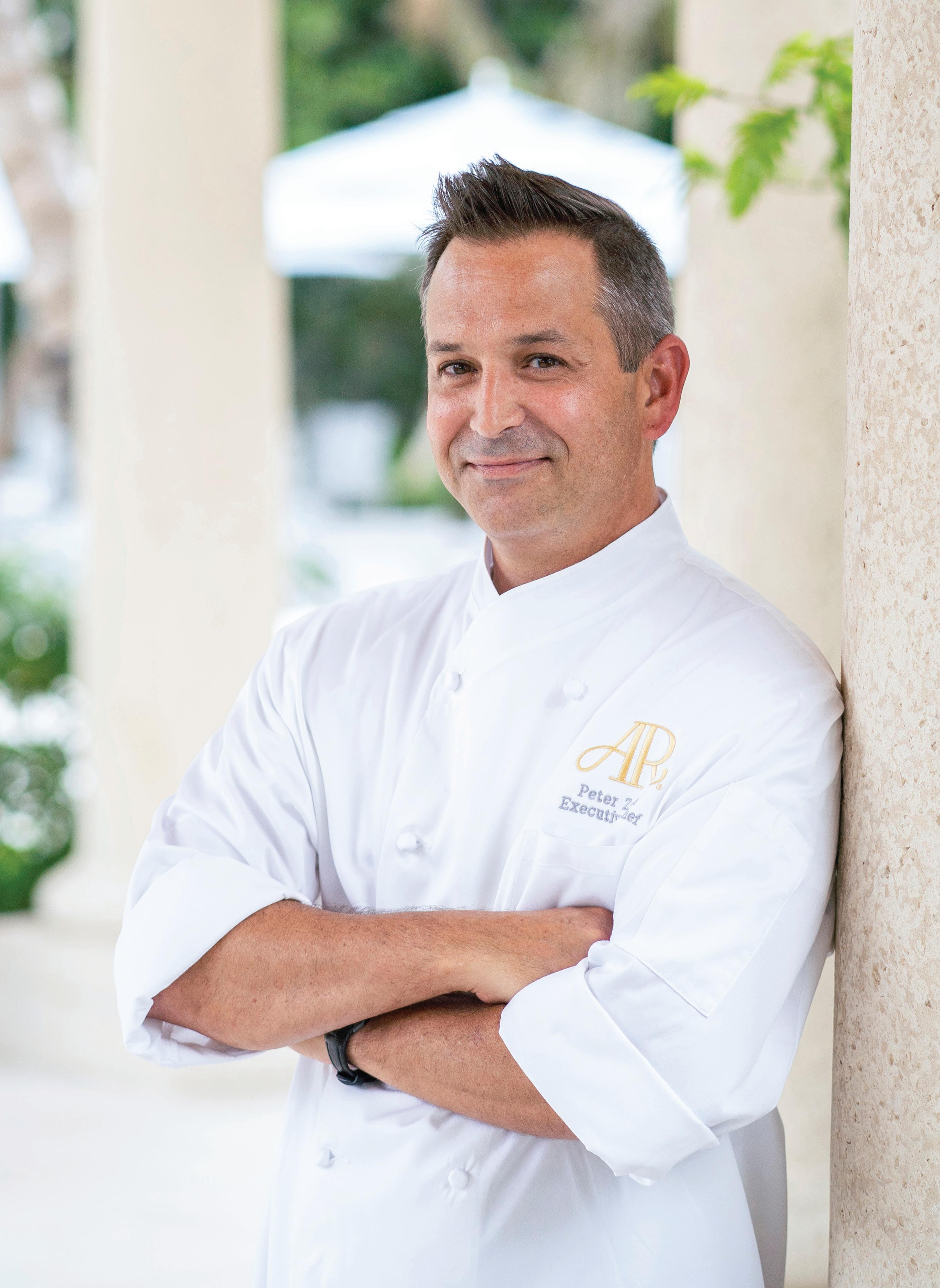 Image by Gideon Heller
Image by Gideon Heller
working for him than from textbooks, and not have a massive liability at the end of it.
I was able to work as a waiter several days a week and in the kitchen on other days. I knew both the front and back of the house, which was very advantageous.
In 1995, Chef Paul Tinsley had the opportunity to open a new restaurant at Kiawah Island called the Sweet Grass Cafe, and he asked me to work for him there. It was being built from the ground up. I was learning from the consulting chef’s operations, such as purchasing equipment and menu creation. I stayed there for the season and then I had to find work in the offseason. I was on unemployment as I wanted to return to Kiawah the following season, but I was offered a job as a line cook at a restaurant at Folly Beach called
A friend of mine, Boyd Rose, was working at the Penninsula Grill, which was one of the founding father restaurants in downtown Charleston and one of the best. Boyd and I used to hang out often and talk about anything and everything to do with cooking and kitchens. One day he called me as said, “A position has opened at Penninsula Grill, I am leaving.” He offered to introduce me to Bob Carter, the Executive Chef. I got the job, and it was big-time for me, it was fancy and expensive.
I started out making salads and I began to learn about chefs, chef de cuisine, and sous chefs positions. I worked with Sean Brock, who is a very successful Chef today. We were good friends, and he’s a couple of years younger than me, and he started at Penninsula after me, and I trained him at the salad station. Jacques Larson and Tyler Brown also worked that line, we were all in our mid-twenties, and we challenged each other a lot.
Many celebrities and famous football players would dine there - George Clooney, Robert Redford, Martha Stewart, Jimmy Buffet, Dan Marino, John Elway, and Chief Justice Clarence Thomas. It was the hot spot to be, and it was always exciting.
It was a casual place and a lot of fun; however, I wasn’t learning much and had much desire to advance. The chef ended up leaving and that is when I got a big break, Lee and Suzanne offered me the Executive Chef position!
GK: That was fast. Tell us about that.
I didn’t know what I was doing, but I took the job regardless. I figured the first thing I would do is organize the kitchen and make sure it was nice and clean. I started buying cookbooks and searching for recipes and inspiration. I had a good run at the cafe. I stayed for almost three years and left with a fair amount of knowledge.
My now-wife Jennifer was attending Johnson and Wales and working at Penninsula in the pastry section. We got along really well and began dating. It was about five years since I had made the decision not to go to culinary school. I had learned a lot, but I started thinking that I needed to have that piece of paper to validate my career and keep moving up the culinary ladder. I started looking at different schools like the Culinary Institute of America (CIA), Johnson and Wales, and then Le Cordon Bleu in Paris caught my attention. It was a year-long course, very reasonably priced and the best thing it was in Paris. I applied and was accepted. My parents scraped together the money, and I moved to Paris with my wife and my Labrador retriever Jed. We didn’t know what we were expecting, the apartment was tiny, just 10 square meters.
GK: Tell us about Le Cordon Bleu?
The classes at Le Cordon Bleu were a very different experience from what they have here in America. There were no textbooks or computers,
“
Golf Kitchen Magazine 108
I started out making salads and things like that, and I began to learn about chefs, chef de cuisine, and sous chefs positions.”
Cafe Suzanne, which was owned by Lee and Suzanne Chewning.

adorn the
Symmetry and fine details
modern and elegant casual dining venue, The Grill.
Image by Gideon Heller.
Dine ‘al fresco’ by the pool or relax to the sounds of the waterfall on soft seating around one of the fire pits. The outdoor dining is a delight, and if the views don’t suffice, delicious food and excellent service will make your night.

Image by Gideon Heller.
 The Grill bar features sleek modern design, luxurious soft seating and a large window that slides open to service the outdoor patio. Image by Gideon Heller.
The Grill bar features sleek modern design, luxurious soft seating and a large window that slides open to service the outdoor patio. Image by Gideon Heller.
it was all chef demonstrations that were a couple of hours long, they would show us various techniques, and then we would have to attend small kitchen classes with maybe 10-15 students.
We all had a stove and oven workstation, and we would make the dishes that were assigned, and the chef would critique them at the end. It was hands-on learning, they were older teachers, but they were terrific, the techniques that they demonstrated I had never seen before.
GK: Did you enjoy Paris?
We were relatively poor during that time, but Jennifer and I would go on marathon walks and try to get lost in Paris, we explored every inch of the city on foot and the metro.
Halfway through my course, Jennifer was getting homesick, she wasn’t working, and we decided for her to live with her grandmother in California. I would stay in Paris with the dog to finish the year. After I graduated, I moved to California to be with my wife.
When I returned, we decided that we wanted to live in San Francisco. Everything we owned was in South Carolina, so we flew back, booked a truck, and drove it to San Francisco. Once we were settled, I hit the bricks looking for a new position. I went to Wolfgang Puck’s restaurant, Gary Danko’s, and a few others. I walked past Aqua Restaurant, and I had heard all about it, so I stopped in to drop off my resume. The receptionist told me that they were not hiring, and I begged her if she could give my resume to one of the chefs. Before I even got home, I had a message asking me to return for an interview as soon as possible.
I was super excited to be starting the next phase of my career at Aqua, one of the most excellent restaurants in San Francisco! They asked me what my goals were, and I said,”I didn’t drive a truck 3000 miles to make salads all day. I want to learn.” They put me with sous chef Ben Jenkins that was on loan from the Bellagio in Las Vegas. He was one of the most talented sous chefs I had worked with. I will never forget when I had to make a scallop dish, he grabbed the pan out of my hand and said, “Where the heck did you learn how to cook? Don’t touch anything, just watch, OK?” I was instantly humbled.
The Chef / Partner at the time was Michael Mina, who had several restaurants, and the chef and sous chefs would tell me in advance if he was going to be in the kitchen. They warned me not to screw up when he was there. I was terrified as my station was right near where Michael Mina stood, it was so humbling, but I didn’t quit and kept moving up the ladder, each day thinking I was going to be toast, but I figured it out and did very well, and within a year I became the sous chef, I was 29.
The restaurant group that owned Aqua had a falling out and parted ways. Some staff followed Michael Mina, and some stayed. I stayed, and a
well known French chef Laurent Manrique took over. I was doing very well at Aqua, and during that time, we were awarded two Michelin Stars. The owners wanted to take over a steakhouse that was not far away, the chef who was well known was leaving, and I got offered the job. They called the restaurant C & L Steakhouse. This was a massive deal for my career, Michelin even mentioned C & L in the guide, although we didn’t have the stars there.
After a few years I returned to Aqua, I was burnt out and longed for the East Coast. I asked my wife what she thought. She was all for it, and we moved back to Charleston, and I took a job with Mike Lata, who was a James Beard Award Winner.
During that time, I had a sidekick job as a restaurant consultant in the Bahamas. That fizzled out, but it was fun flying to the Bahamas in a private jet with designers and engineers! I stayed with Lata for about a year and then began working for the Lowery Group in Hilton Head, South Carolina, with Chef Eric Sayers at the restaurant CQ’s.
Addison Reserve Country Club 111
“Where the heck did you learn how to cook? Don’t touch anything, just watch, OK?” I was instantly humbled.”
Eric and I got along great, and we did all kinds of experimentation. It was when sous-vide was becoming popular. We didn’t have a circulator. We didn’t have a fancy cryovac machine or a vacuum sealer, so we made our version out of cheap goods from Target! I called it the hillbilly circulator on the stovetop. We challenged ourselves, and it was a great experience all around. I was working seasonally at CQ’s and would switch to one of the other restaurants in the group in the offseason. I was settling down and needed security, and this is what brought my attention to private clubs.
I had always believed that club chefs were making powdered mash potatoes, but was soon to learn differently. I interviewed at Colleton River Club in Bluffton. It was hard to leave the Lowery Group, but we wanted to start a family, and the clubs had many of the health insurance and perks that restaurants didn’t have.
I was the interim chef, and I had the opportunity to hire my boss, Chef Robert Wysong. We had the best time in the kitchen there; we got along very well. I desired to become the Executive Chef at a Club, and I knew Robert wasn’t leaving anytime soon, so I hired a chef agency to find me an Executive Chef position. They contacted me and said, “This isn’t an executive chef role, but it’s an executive sous chef job. The club is Addison Reserve Country Club down in Florida, and it’s the best there is. This is better than having an executive chef job right out of the box. I asked the General Manager at Colleton, and he said, “Addison is one of the best clubs there is, I know the GM Michael McCarthy very well.”
I told the chef agency that I was interested in the position. It wasn’t exactly what I wanted, but after doing some research on Google about Zach Bell, the executive chef and Michael McCarthy, and the club, I got fired up.
Angela Rodriguez is the head of human resources at Addison Reserve and she called me up, and she said, “I have to tell you that I got your resume from Charlie at the agency, and then five minutes later, my boss, the CEO of the club comes in with your resume in his hand. So I had to call you right away.” One thing led to another, and I did several phone interviews and Skype interviews with
Zach. I came down for a weekend and toured the property and cooked for everybody and got hired!
Zach and I discovered that our backgrounds were pretty similar. We were the same age and kind of came up through the ranks the same way. He worked for Daniel Boulud and, I was in San Francisco working for Michael Mina and Laurent Manrique.
I moved the family down here in September of 2014, and it was right before the season started. I had towards the end of September to get settled, and then it started to get busy into October, I had just a few weeks to get acclimated. Before you know it, it hits hard! We got a lot of interns from overseas to work for the season. There were over 20 cooks that dropped in one day, and I had to figure out what their skill levels are and what positions they can fill.
The first season for me was a blur. There was so much going on, the volume, with the banquets, the regular dining, everything, it went by quickly. Zach was great to build and grow with. He is one of the most, if not the most incredibly talented chefs I’ve ever worked with and has a wealth of knowledge. Whatever project he works on, he excels. If he is buying a refrigerator, he becomes an expert in that fridge. He learns how to pull it apart and put it back together. He is that detailed.
He pushes himself, and he’s incredibly driven. He pushed the rest of our sous chefs and me; he sets the bar high for everybody. He questioned and challenged us to create and come up with new and crazy ideas. Although he was tough on us, it was for our progress. I respect Zach immensely.
When Zach left Addison in 2019, I got promoted to Executive Chef; I was nervous. Zach’s gone, and nothing’s ever going to be the same and it’s been quite the opposite. I’m very grateful and very vocal about about his achievements but we were excited for the change, eager for something different at the same time. The members asked, “You’re still going to do the Vault, right?” Of course, we wouldn’t be changing the Vault anytime soon, but I wanted to put my mark on things and my ideas about menus, food, and cooking.
Golf Kitchen Magazine 112
When Zach left, it was not widely known that he was resigning, they sent a newsletter out to the members announcing Zach has left, but Peter is here, and Peter Zoole will be the new Executive Chef, and everything is going to be great!
GK: What plans do you want to execute on the culinary side that’s coming from your heart and soul and your palette?
I typed this long email to all my chefs. It started with accolades to Zach, and I explained that we all agree he was our hurricane force and how great he made us through all of his hard work. I wanted to reach out to the team and explain what his original mission was, as you tend to forget over the years. I wanted to reset that.
The next phase of the operation for me was to slowly start to roll out some new menu ideas that were my own. I would run them as specials to start and see what feedback I would receive. At the time, we were also developing menus for our brand new restaurant that was still under construction. Using the membership for a sounding board was how we were going to see the future, mainly working on the menus, and the expectations were extremely high for the new restaurant.
GK: How have you grown as a Chef since your became the Executive Chef?
In my first season as Executive Chef at Addison Reserve, we had a close brush with Hurricane Dorian, and we opened a brand new restaurant where the expectations were very high. The project was super delayed due to construction issues, opening the week before Thanksgiving was the height of our high season! The restaurant has been wildly successful, exceeding my wildest dreams!
We bulled through the rest of our 2019 Season and into 2020. Throughout the season, I kept telling myself that I couldn’t wait until this time next year-there were so many things that I learned on the go. I saw an opportunity for improvements the whole way and I made copious notes, and planned a major overhaul of events, all of which could be structured over the Summer.
GK: And then Covid-19 hit. What now?
In the beginning of March, we started seeing the first effects of COVID-19. In just a few short weeks we were forced to dramatically overhaul the entire way that we do business here at the club. No department has been unaffected.
We quickly shifted our operations to a touchless food delivery within our gates. In addition to a la carte delivery, we offer so much more: from groceries to Trivia night, and live music events via Zoom.
As we slowly open our dining rooms to our members, we have learned that our delivery service is here for good. We have been tirelessly working on all new programming that includes exciting and fun events that our members can enjoy while staying safe and practicing proper social distancing. Not only that, but we have also rewritten the book on keeping our staff safe and healthy.
Our upcoming season here will be different than anything we have done before. I am fortunate to be surrounded by positive and intelligent leadership that contribute daily to our progress in this new landscape that we all find ourselves.
Addison Reserve Country Club 113
RECIPE BY PETER ZOOLE
Peach, Berry and Burrata Salad with Pistachio Brittle

Serves: 6
Ingredients
Pistachio Brittle
Chef Note: Make ahead of time.
• 2 cups Sugar
• 1 cup Water
• 1/2 cup Light Corn Syrup
• 1/2 teaspoon Sea Salt
• 2 Tablespoons Unsalted Butter
• 1/2 teaspoon Baking Soda
• 2 1/2 cups Roasted Pistachios
Buratta Salad
• 6 four ounce Burrata
• 1/2 pint Blackberries
• 1/2 pint Raspberries
• 1/2 pint Blueberries
• 1/2 pint Strawberries
• 1/2 pint Peaches (sliced)
• 1 Tablespoon Balsamic Vinegar
• 4 Tablespoons Extra Virgin Olive Oil
• 2 teaspoons Honey
• dash Black Truffle Oil
• Fresh Basil (chopped)
• Sea Salt (to taste)
Preparation
Pistachio Brittle
In a sauce pan mix in sugar, water, and salt. Bring to a simmer and cook until golden. Remove from heat and stir in butter, baking soda, and pistachios. Stir until incorporated. Transfer mixture on to a nonstick baking sheet. Allow to cool. Once cooled, crush brittle into small pieces. Reserve extra bit for a salty sweet snack.
Golf Kitchen Magazine 114
 Image by Gideon Heller.
Image by Gideon Heller.
Redemption Hole number 2 looking inviting in the early hours of the morning.
 Image by Gideon Heller.
Image by Gideon Heller.
Burrata Salad
Wash and pat dry berries. Hull strawberries and quarter. Mix vinegar, olive oil, honey and truffle oil in a medium bowl. If using fresh truffle, shave them on top to finish. Gently toss berries in vinaigrette. Add in a pinch of chopped basil.
Assembly
Place the Burrata in the center of an individual serving bowl and season with sea salt and pepper. Place dressed berries around. Sprinkle crushed pistachio brittle over berries and Burrata. Chef Note: Super simple, fresh, and light this is awesome as a starter or entrée on a warm summer day.
Wine Match

Belle Glos Pinot Noir Blanc “Oeil de Perdrix” 2019 Sonoma County.
Ripe strawberries and red grapefruits are joined by a nice seam of spice, all lifted by a hint of jasmine in this food-friendly rosé. ~ Steve Monti, Director of Dining Operations.
Addison Reserve Country Club 117
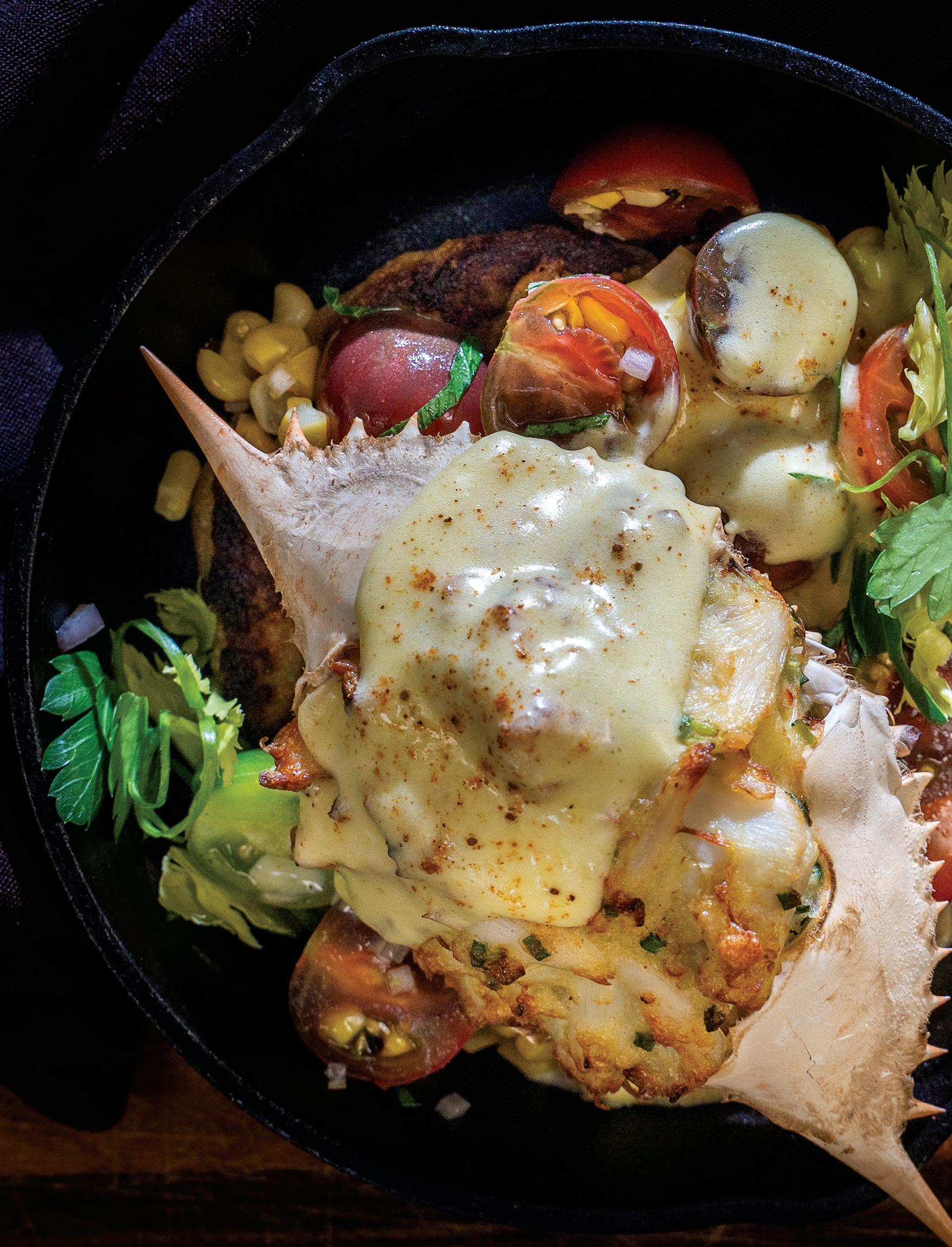 Image by Gideon Heller.
RECIPE BY PETER ZOOLE
Image by Gideon Heller.
RECIPE BY PETER ZOOLE
Deviled Crabs with Tomato and Corn Relish Old Bay Hollandaise and Johnny Cakes
Yield: 6 stuffed crabs
Ingredients
Deviled Crabs
• 4 Tablespoons Unsalted Butter Chef Note: reserve a couple of pats for finishing
• 1/2 cup Onion (finely diced)
• 1/4 cup Celery (finely diced)
• 1 pound Jumbo Lump Crab Meat Chef Note: Fresh from the sea is best, but pasteurized will work if you are landlocked.
• 1/2 cup Mayonnaise Chef Note: I use Duke’s
• 1 Egg (lightly beaten)
• 1 teaspoon Brown Mustard
• 1/2 teaspoon Old Bay Seasoning (to taste)
• 1/2 cup Ritz Crackers (crushed)
Tomato and Corn Relish
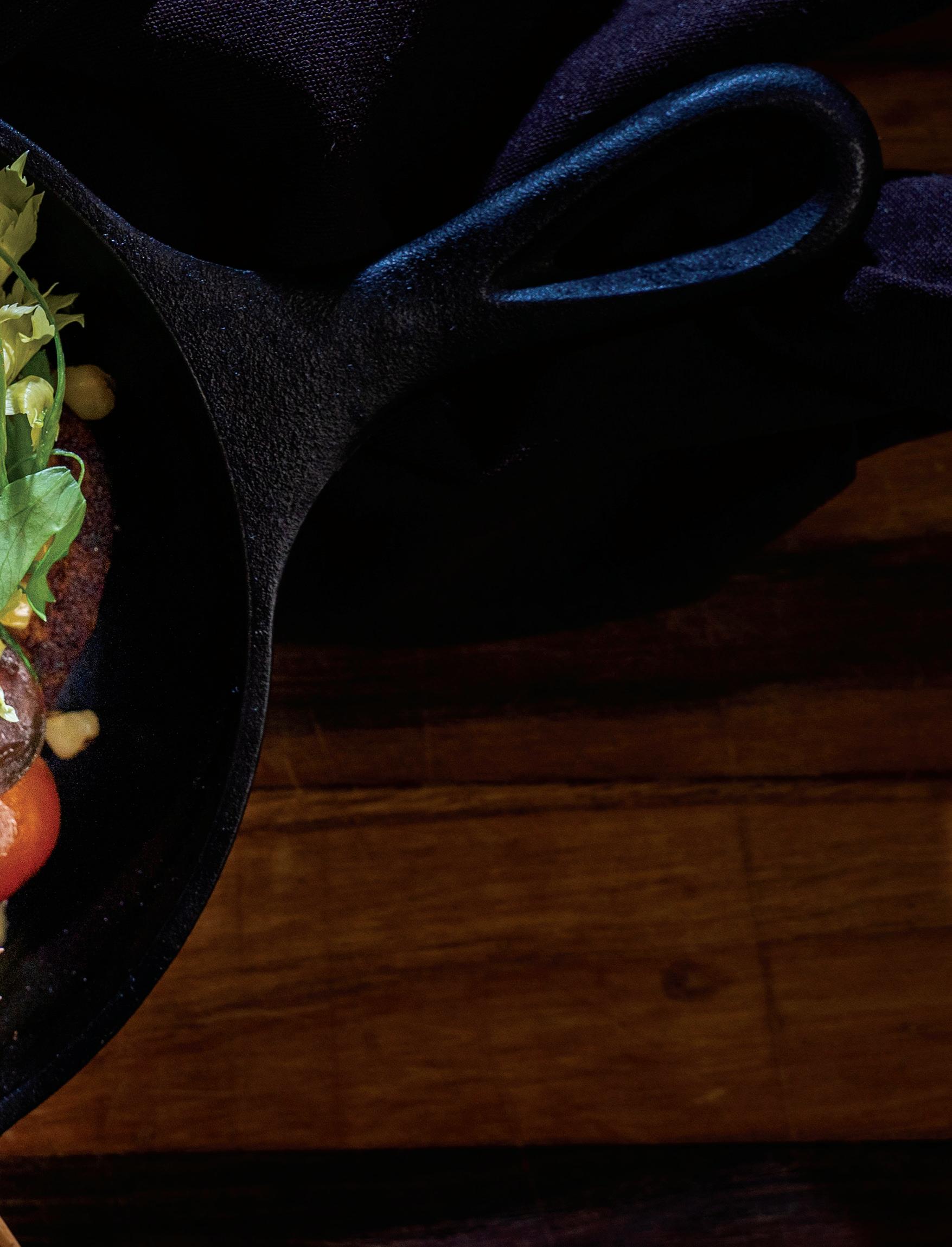
• 1 pint Heirloom Grape Tomatoes
• 2 ears of Fresh Corn (husked and washed)
• 1 Tablespoon Champagne Vinegar
• 2 Tablespoons Extra Virgin Olive Oil
• 2 Tablespoons Shallots (finely minced)
• Italian Parsley and Celery Hearts (freshly picked leaves)
• Sea Salt and White Pepper
Old Bay Hollandaise
• 4 Egg Yolks
• 1 Tablespoon Lemon Juice
• 1/2 cup Unsalted Butter (melted)
• Old Bay Seasoning (to taste)
Johnny Cakes Yields 12-14 cakes plus a few for experiments
• 2 cups Yellow Cornmeal (finely ground)
• 1 Tablespoon Sugar
• 1 1/2 teaspoon Salt
• 2 cups Boiling Water
• 1/2 cup Milk
• 1/4 cup Butter
Preparation
Deviled Crab
Melt the butter over a medium heat in a saucepan. Add the onion and celery and cook until soft. Remove from heat and allow to cool. Gently pick through the crab to remove any pieces of shell. Chef Note: Be careful not to break up those beautiful lumps of crab too much. In a large bowl, mix the mayonnaise, mustard, egg, and onion/celery. Mix thoroughly. Gently fold in the crabmeat and the crushed crackers. Chef Note: The mixture will appear a little loose, give the crackers a few minutes to absorb. Season with Old Bay to taste. Brush the reserved butter over the top of the crab mixture. Bake in a 350 °F oven for 20 minutes until the crabs are hot and golden brown. Chef Note: My Mom always told me that the least amount of ingredients you add (besides the crab) to crab cakes, the better they taste!
Tomato and Corn Relish
Roast the corn on barbeque grill until it is lightly charred. Remove and allow to cool. Chef Note: Alternatively, corn may be broiled in an oven if a grill is unavailable. Wash the tomatoes and cut them in half. Place the corn and the tomatoes into a medium-sized bowl. Add the shallots, olive oil, and vinegar. Season to taste with salt and pepper. Arrange the relish on serving plate or platter, garnish with celery and parsley leaves.
Old Bay Hollandaise
In a metal bowl whisk together the yolks and lemon juice. Place the metal bowl over a double boiler and whisk quickly. Once the whisk begins to trace lines in the egg mixture, gradually add in the butter. Continue to whisk until the sauce has thickened, and all of the butter has been incorporated. Season to taste with the Old Bay. Cover and reserve in a warm place until ready to serve. Chef Note: Hollandaise can be tricky the first few times that you make it. Everything has to be not too hot, not too cold, and the butter has to be whisked in carefully. If you go too fast the
the sauce will break. Old Bay is a name brand for a spice that can be purchased in just about any supermarket. I purposely left out salt and pepper in this recipe as they are included in the Old Bay spice blend.
Johnny Cakes
In a bowl, mix the cornmeal sugar and salt. Pour in the boiling water until a tight paste forms. Add in the milk until the consistency of a pancake batter is achieved. In a skillet, melt a teaspoon of butter and add a spoonful of batter to form a 3-inch cake. Cook the cake on each side until golden brown. Chef Note: I have found that when making Johnny Cakes or pancakes, the first few never come out nicely. Experiment with the pan temperature and cook time. Be patient. These can be prepared slightly ahead and held warm if need be.
Assembly
Place the Johnny cakes onto a plate, or skillet and spoon the tomato and corn relish over it. Place the devilled crab on top, and pour hollandaise over. Sprinkle lightly with Old Bay spice and garnish with celery leaves.
Wine Match
Radio-Coteau “Savoy” Chardonnay 2018 Anderson Valley.
This organically grown Chardonnay from California’s Anderson Valley is perfectly autumnal — think pie crust, baked golden apples, and brown butter. While it certainly goes well with richly sauced fish dishes and roast chicken, it will also be lovely with braised pork shoulder or a wellspiced vegetarian main.~ Steve Monti, Director of Dining Operations.
Golf Kitchen Magazine 120
 Palm trees, Sandy white bunkers and pristine lakes embellish the well maintained turf in Addison’s tropical paradise.
Image by Gideon Heller.
RECIPE BY PETER ZOOLE
Palm trees, Sandy white bunkers and pristine lakes embellish the well maintained turf in Addison’s tropical paradise.
Image by Gideon Heller.
RECIPE BY PETER ZOOLE
Lobster Carbonara with Peas, Fava Beans
Lobster Mushrooms and Prosciutto
Serves 2
Ingredients
Lobster
• 1 1/2 pound Maine Lobster (live)
• 1 Carrot (peeled and chopped into large pieces)
• 1 rib Celery (washed and chopped into large pieces)
• 1 medium Onion (peeled and chopped into large pieces)
• 2 cups White Wine
• 1 Lemon (cut in half)
• 2 quarts Water
Peas and Fava Beans
• 1/2 cup Fava beans (shelled)
• 1/2 cup Fresh Peas (shelled)
Lobster Mushrooms

• 4 ounces Lobster Mushrooms (washed and sliced) Chef Note: any favorite mushroom can be substituted, however, the cooking method will vary.
• 4 ounces Unsalted Butter, plus 1 ounce to finish
• 1 pint of Chicken Stock or Vegetable Stock Chef Note: Water may be substituted.
Pasta Carbonara
• 4 ounces Dry Egg Pappardelle Pasta
• 1 Egg plus 2 Yolks
• 1 ounce Parmesan Cheese (grated)
• 2 ounces Prosciutto (shaved and cut into fine julienne)
• 1 ounce Extra Virgin Olive Oil
Preparation
Lobster
Place the celery, carrot, onion, white wine and lemon into a large pot and bring to a boil. Once boiling, turn off the heat and carefully place Once boiling, turn off the heat and carefully place the lobster into the pot.
Chef Note: The lobster should remain submerged for about 7 minutes. Remove the lobster and allow it to cool. Remove the meat from the shell and set aside. Chef Note: Protein should be just undercooked.
Golf Kitchen Magazine 122
Image by Gideon Heller.

Addison Reserve Country Club 123
 Looking backwards on Trepidation Hole number 9 during late afternoon.
Image by Gideon Heller.
Looking backwards on Trepidation Hole number 9 during late afternoon.
Image by Gideon Heller.
Peas and Fava Beans
Prepare a bowl of ice water and set aside. Bring a medium pot of heavily salted water to a boil.First, blanch the peas until they are just tender. Remove from the boiling water and place immediately into ice water. Once thoroughly chilled, remove, drain, and reserve. Repeat the above step for fava beans.
Lobster Mushrooms
In a sauté pan over medium-high heat, melt the butter until it is sizzling and foamy. Place the mushrooms into the pan and sauté until vegetal liquid has evaporated and they begin to become golden in color. Add the stock and reduce it to a rapid simmer. Continue to rapid simmer until nearly all of the liquid has reduced then lower the heat and stir in the reserved butter. Set aside.
Pasta Carbonara
Heat four quarts of water in a large pot over high heat. When the water begins to boil add in a pinch of salt. In a bowl, mix the eggs and parmesan cheese. Cook the pasta in boiling water until just underdone. Reserve one cup of the hot pasta water for later. Chef Note: This is an important step that many leave out. In a second large pot, heat the olive oil over medium heat. Add the Prosciutto and cook stirring until crisp, once crisp, remove the Prosciutto. Place the cooked pasta into a second pot, add in the peas, favas, mushrooms, and lobster. Whisk in 1/4 of the cup of reserved pasta water into the egg and cheese mixture, then slowly pour over the pasta until the sauce has thickened. Use the remaining pasta water to thin the sauce to your desired consistency.
Assembly
Using a carving fork, spool pasta into a coil and lift it onto the plate. Place extra lobster meat and mushrooms onto the plate, against the pasta.
Spoon extra sauce, fava beans and peas over the top.
Spoon extra sauce, fava beans and peas over the top. Sprinkle with extra prosciutto shavings, and garnish with pea shoot tendrils. (Alternatively, baby spinach or watercress.)
Wine Match
Abbazia di Novacella 2019 Pinot Grigio (Alto Adige Valle Isarco)
Aromas of green apple, pear and citrus follow over to the savory palate along with green melon, ginger and tangerine zest. It’s bright and delicious, with tangy acidity before a fresh, clean close.~ Steve Monti, Director of Dining Operations.
Addison Reserve Country Club 125
RECIPE BY DANA IANNELLI, EXECUTIVE PASTRY CHEF
Blood Orange Tart
Serves 8
Ingredients
Praline Crust
• 1 cups Praline Paste
• 1 cup Almond Paste
• 1/2 cup Milk Chocolate (40%) (melted and cooled to 104 °F)
• 2 Tablespoons Butter (melted)
Creamsicle Curd
• 3/4 cup Blood Orange Juice
• 1 Tablespoon Blood Orange Zest
• 3/4 cup Granulated Sugar
• 3 Egg Yolks
• 1/2 cup Cold, Unsalted Butter
Chocolate Truffle Cake
• 3 Whole Eggs
• 1/2 cup Melted, Unsalted Butter
• 1 cup 58% Chocolate
• 1/4 cup Granulated Sugar
Earl Grey Citrus Ice Cream
• 3 cups Whole Milk
• 3/4 cup Heavy Cream
• 1 1/4 cups Sugar
• 2 Earl Grey Tea Bags
• 9 Egg Yolks
Meyer Lemon Gelee
3/4 cup Meyer Lemon Puree
1 sheet Gelatin
1/4 cup Granulated Sugar
1/8 cup Water for syrup
Meringue Kisses
• 1 cup Granulated Sugar
• 1/2 cup Fresh Egg White
Cara Cara Gel
• 2 cups Cara Cara Orange Purée
• 1/3 cup Granulated Sugar
• 1/4 teaspoon Agar Agar
Garnish
• Edible Micro Flowers
• Cara Cara Segments
• Blood Orange Segments
• Gold Leaf
Preparation
Praline Crust
Combine the Praline and the Almond paste in the bowl of an electric mixer with the paddle attachment. Mix on medium speed until uniformly combined. Pour in the chocolate and then the butter. It is important that the items not be hotter than specified so that the mix does not separate. Shape into a square, wrap and refrigerate. Once cool and firm, roll out to .11 inch thick in a rectangle and transfer to a sheet pan with a frame. Refrigerate until needed.
Creamsicle Curd
Put all ingredients except for butter in a large stainless bowl. Set over a double boiler. Whisk constantly until the mixture becomes thick and holds the lines of the whisk. Remove from heat and add in a cube of butter at a time to incorporate. Pour on top of the praline crust in the frame. Allow to sit in freezer until set.
Chocolate Truffle Cake
Melt Butter and Chocolate over a double boiler. Line a sheet pan with parchment paper and spray. Whip eggs and sugar on high until thick and fluffy. Fold in butter and chocolate mixture until smooth. Bake on 325 °F low fan until set.Allow to cool. Once cool, cut to the size of the frame and layer on top of the curd. Place back in the freezer to chill before slicing.
Golf Kitchen Magazine 126
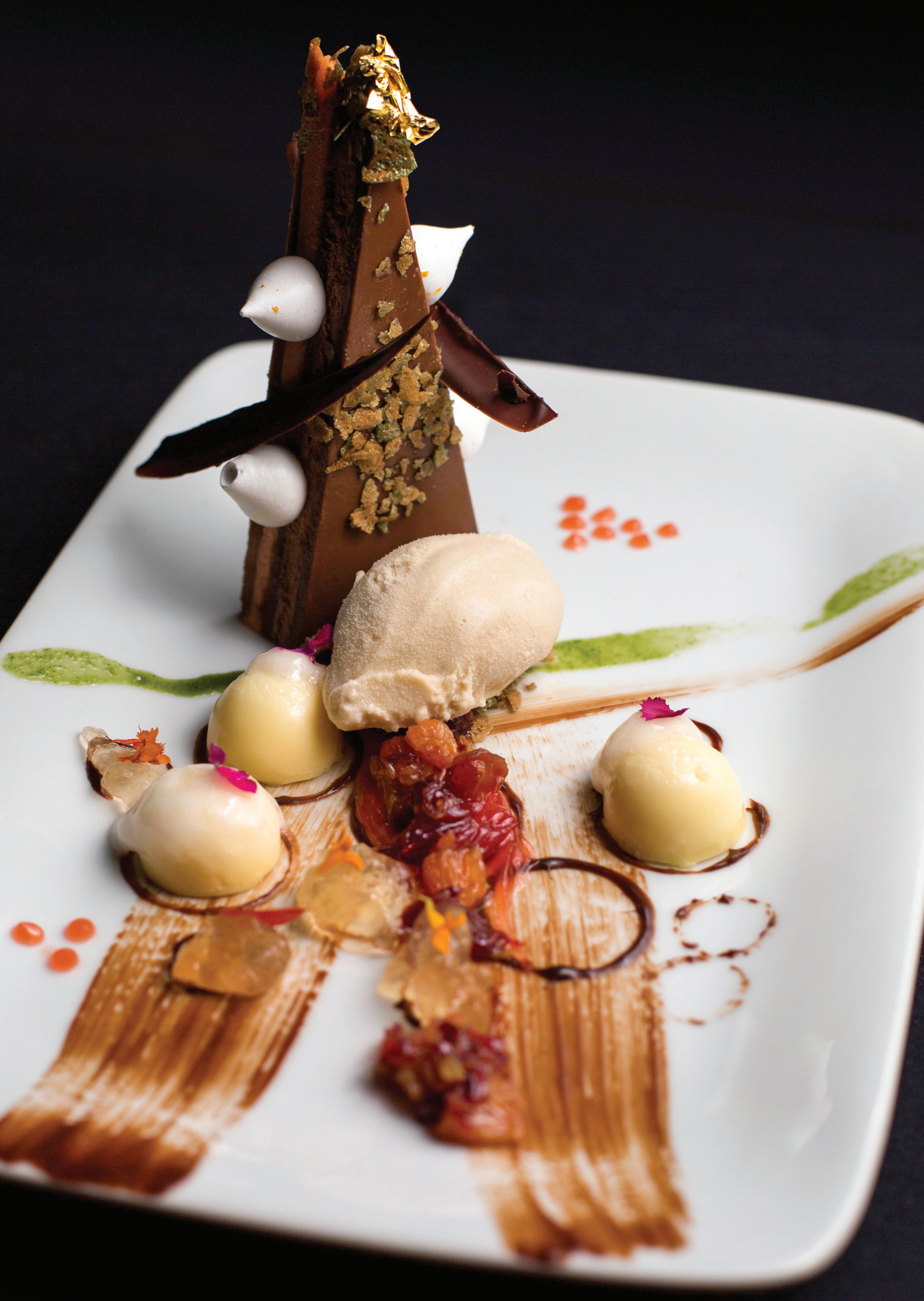
Westchester Golf
Image by Gideon Heller.
Earl Grey Citrus Ice Cream
In a saucepot combine the milk, cream and sugar. Put the yolks in a separate bowl. Bring to a simmer. Turn off and add the tea bags. Allow to steep for 10 minutes. Remove the tea bags and return to the stove to bring back to a boil. Turn heat to simmer and temper in the yolks. Cook over low heat until the mixture coats the back of a wooden spoon. Strain mixture through a chinois and cool immediately over an ice bath. Let mixture mature for 4 hours or longer in the refrigerator. Then spin the base to the manufactures guidelines on your ice cream machine.
Meyer Lemon Gelee
Put the puree, sugar, water in a pot and bring to a boil. Let the gelatin sheet soak in ice water to bloom.Ring out water from gelatin and add gelatin to the hot mixture to melt. Pour into a container and let set in the refrigerator. Break into desired sizes pieces with a spoon when ready to plate.
Meringue Kisses
Place egg whites and sugar over a double boiler. Whisk over the heat until the sugar dissolves. Place the mixture in a mixing bowl fitted with a whisk attachment and whip on high speed until stiff peaks form. Place meringue in a piping bag with desired tip and pie kisses onto a silpat mat. Place in dehydrator or low oven to dry out over night.
Cara Cara Gel
Bring the Cara Cara orange puree to a boil along with half the amount of sugar. Mix the remaining sugar with the agar agar to prevent lumps when mixing. Add the agar agar, sugar mixture to the boiling puree. Boil for two more minutes. Pour into a bowl and refrigerate until cool. Once cool, put the mixture in a blender and blend on high until smooth.
Assembly
Take the frame from the freezer and cut into triangles with a sharp knife. Paint the plate with chocolate sauce if desired. Place the cake standing upright on the plate. Pipe dots of the Cara Cara gel around the plate. Add in drops of the Meyer Lemon Gel and the citrus segments. Place a quenelle of the ice cream next to the cake slice. Finish off with gold leaf and edible flowers.
Wine Match
Inniskillin Vidal Icewine 2017 Ontario Canada.
Vidal is a hybrid (Ugni Blanc and Seibel) that has a thick skin suitable for harvesting late in the season. It is a grape grown for Icewine in Ontario. It’s good natural acidity gives great structure to the lusciousness of its tropical aromas and flavors of mango and lychee. ~ Steve Monti, Director of Dining Operations.
“Our culinary efforts are topped off by the unique desserts, presented by our Pastry Chef Dana Iannelli, who has been with us for seven years. She has previously been featured in Golf Kitchen Magazine in 2017, cooked at the Golf Kitchen Culinary Excellence Awards in 2018, was a guest speaker at the Chef to Chef Conference in March 2020, and she was runner up on Food Network’s, Wedding Cake Championship, Season 2.
Chef Pete and Dana work very closely together planning and preparing special treats for our members.” ~ Denise Saari

Golf Kitchen Magazine 128
 Chatter and laughter fill the air during regular busy evenings at the new restaurant, The Grill.
Image by Gideon Heller.
Chatter and laughter fill the air during regular busy evenings at the new restaurant, The Grill.
Image by Gideon Heller.
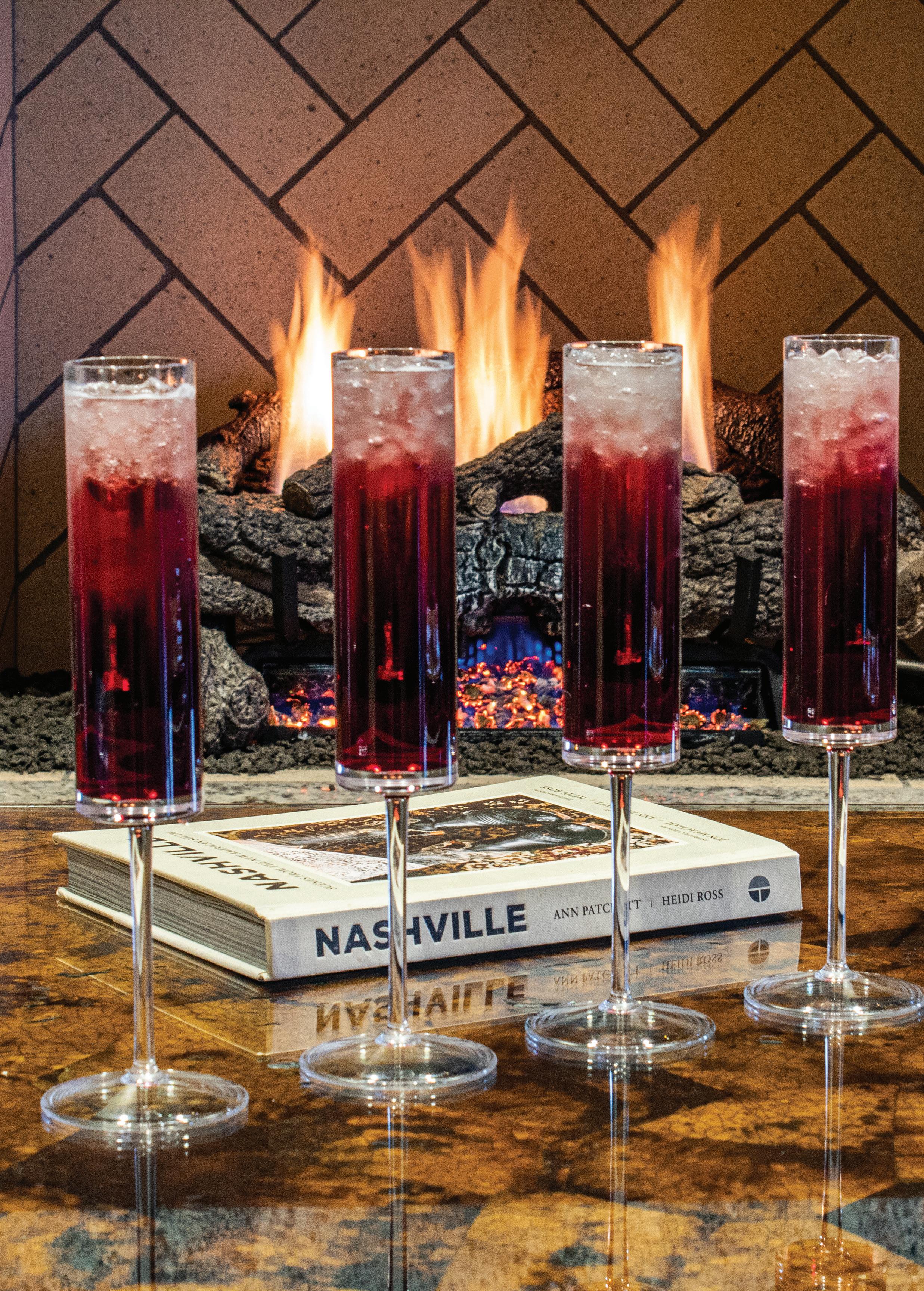
CLUBHOUSE COCKTAILS
Winter Winedown
Ingredients
3 ounces Red Wine
2 dashes of Bitters (optional orange bitters) 0.75 ounces Pomegranate Syrup
Club Soda
Crushed Ice
Preparation
In a champagne flute or wine glass, add the red wine, bitters and pomegranate syrup. Top with club soda and crushed ice.

Cheers!
Recipe by Cory Saffran Director of Food & Beverage
Richland Country Club Nashville, Tennessee
RICHLAND COUNTRY CLUB
MAGAZINEClubhouse Cocktails 131
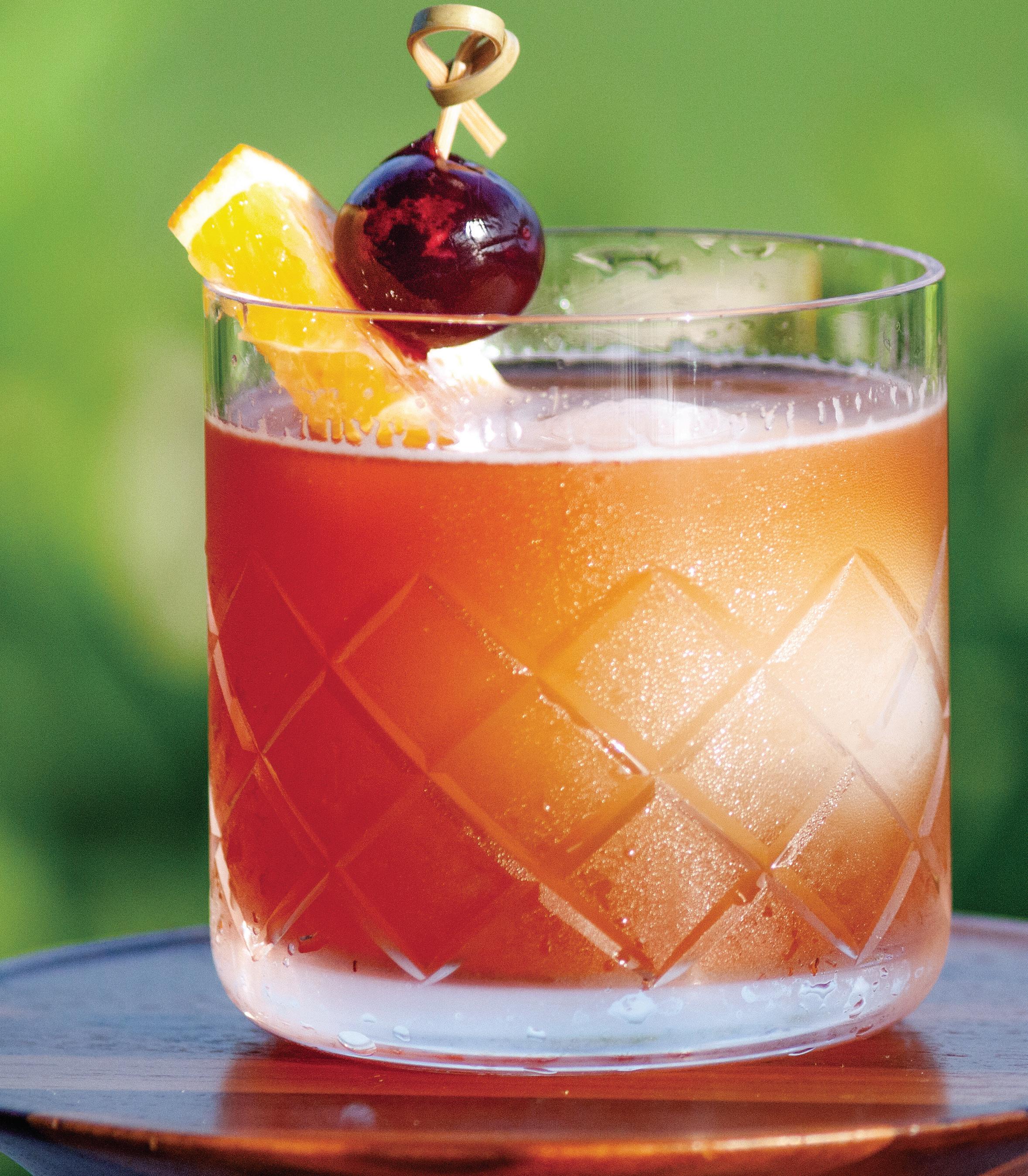
CLUBHOUSE COCKTAILS
B & B & B
Ingredients
1 ounce B&B
2 ounces Bulleit Bourbon
2 Lemon Wedges
2 Orange Slices
1 cube Raw Sugar
4 liberal dashes of Angostura Bitters
Garnish

1 quarter Orange Slice
1 Bada Bing cherry
Preparation
Muddle lemons, oranges, sugar cube and bitters. Add liquors and shake with ice. Double strain into rocks glass with large ice ball and garnish with orange and cherry on a pick.
Recipe by Clara Lene Kelly Mixologist at Kohanaiki Kona, Hawaii
KOHANAIKI
Clubhouse Cocktails 133
Q AND A WITH A YOUNG RISING STAR
Christina Ferraiolo Pastry Chef Edgewood Country Club Rivervale, New Jersey
GK: Tell us where you are from and how you developed your interest in cooking?
I grew up in Belleville, New Jersey. My passion for cooking started at a very early age. I can vividly remember my grandparents and my parents always preparing lavish dishes. Food was always the focal point that brought the family together. As a child, I recall being inspired by all of my family members, particularly my two grandmas, Angelica, and Guilia. They always made these amazing, authentic Italian dishes that to this day I still recreate. They both had beautiful gardens and were able to create fresh dishes from the vegetables that they grew. I always admired how they were always able to make anyone who tasted their food feel the love they put into it. I strive to reciprocate that same feeling when people try my dishes. Food has also been a part of my life and I am grateful to my family for always believing in me and inspiring me to fulfill my passion.
GK: Tell us about your journey to Edgewood, why work in a Country Club?
Three years ago, I worked in New York City as a Sous Chef and came across the job opportunity at Edgewood Country Club. I applied and was in contact with Executive Chef Anthony Villanueva, who offered me the position here. Ever since, I have been the pastry chef, and I handle the Garde manager department. I am thankful for my two mentors Chef Anthony and Ivan Villanueva, who have supported me along this journey at Edgewood.
At Edgewood, all of the chefs and kitchen staff treat each other like family. I love to bring Executive Chef Anthony and my Sous Chef Ivan’s
ideas to life. I am so grateful that my bosses trust me to bring my visions to life and push me out of my comfort zone. Although I am the only female, I have never felt unwelcome in any way, and hope to encourage other young females to enter this field.
GK: Do you enjoy working with Executive Chef Anthony Villanueva, does he give you the freedom to be creative?
At Edgewood, all of the chefs and kitchen staff treat each other like family. I love to bring Executive Chef Anthony and my Sous Chef Ivan’s ideas to life. I am so grateful that my bosses trust me to bring my visions to life and push me out of my comfort zone. Although I am the only female, I have never felt unwelcome in any way, and hope to encourage other young females to enter this field.
GK: Tell us about your interest in pastry. What is your process when creating a recipe?
Edgewood helped make my dreams of making unique pastries a reality. I always had focused on hot food prep in the past, but I wanted to expand my skill set. Edgewood Country Club allowed me to break out of my comfort zone, and I love baking new pastries regularly.
GK: What are your plans for Edgewood in the sense of programs you might wish to develop? For example cooking classes, create a pastry shop within the club?
I hope to one day have the opportunity to expand the pastry shop. It would be awesome to specialize in our own wedding/specialty cakes and cater to our client’s needs. I love your cooking
Golf Kitchen Magazine 134
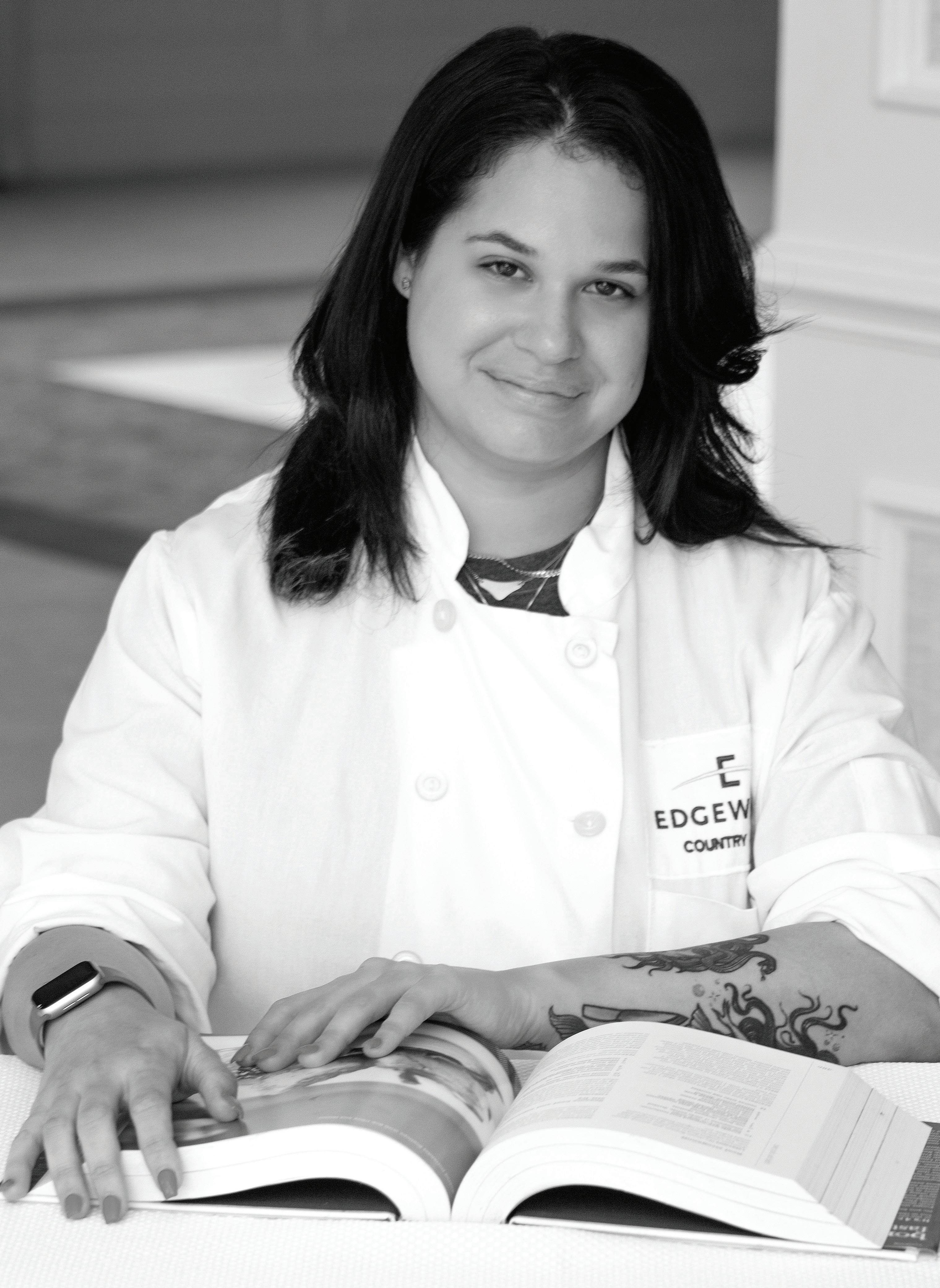
Business magazine Template
class idea for members and/or their children and that is something I am going to look into. It would be cool to have these cooking classes around the various holidays and teach members how to bake different dishes.
GK: Do you play golf?
I am not very athletic and do not officially play golf, but I have some lessons planned. I do enjoy watching the members play and hope to learn a few things.
GK: What advice would you give to other young people about the benefits of working at a Country Club. Explain the positive aspects it offers compared to a restaurant?
Working at Edgewood Country Club has been a great experience. I enjoy catering a client’s major life event (wedding, party, etc.) and how we can individualize every event to the client’s needs. Weddings are my favorite! It is such a special moment in a person’s life, and I get to be part of it. I am grateful for this opportunity to work at Edgewood Country Club, and look forward to what we cook up next!
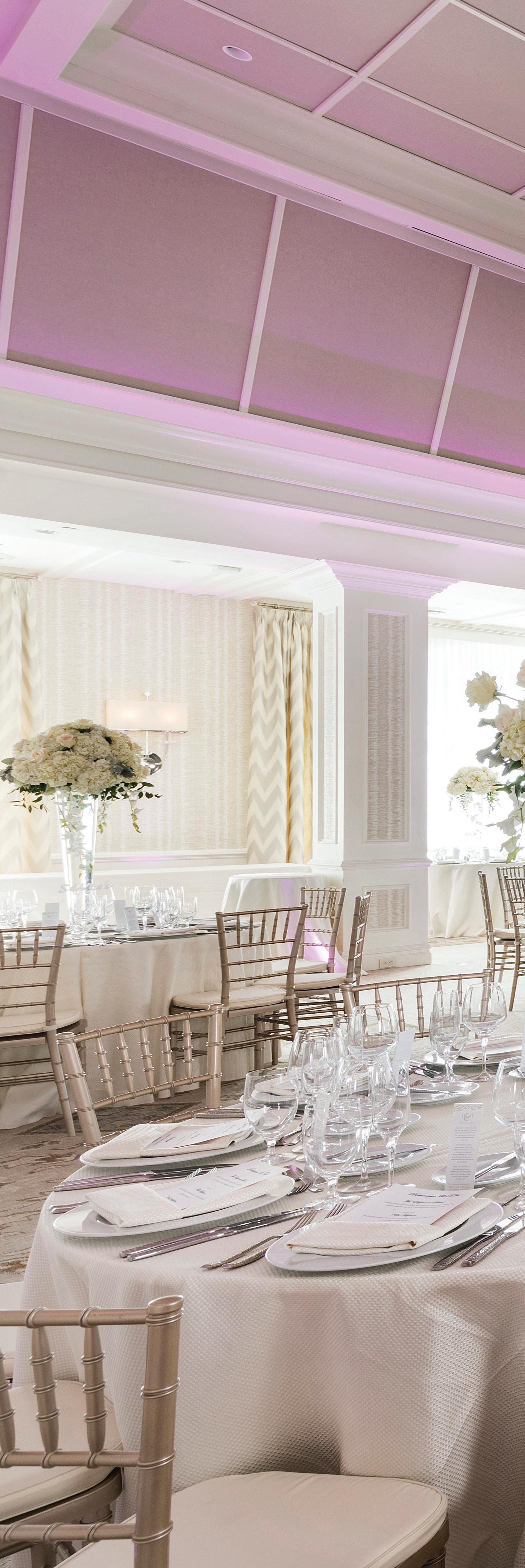
Golf Kitchen Magazine 136
 The prestigious ballroom at Edgewood Country Club. Image courtesy Edgewood Coutry Club.
RECIPE BY CHRISTINA FERRAIOLO
The prestigious ballroom at Edgewood Country Club. Image courtesy Edgewood Coutry Club.
RECIPE BY CHRISTINA FERRAIOLO
Pina Colada Babka Bread Pudding
Chef Note: We successfully serve all types of babka puddings for our plate up desserts. Christina our pastry chef is always looking to enhance and elevate our dishes with her seasonal flair. She liked the pina colada variation on the Babka pudding as it represents summer in all its flair. I love it as it also adds some Caribbean flair to one of our signature desserts. Truly a job well done on her behalf. Just another sample of what happens when a team is in sync and not afraid to try new things. The bar is continually raised because of it!
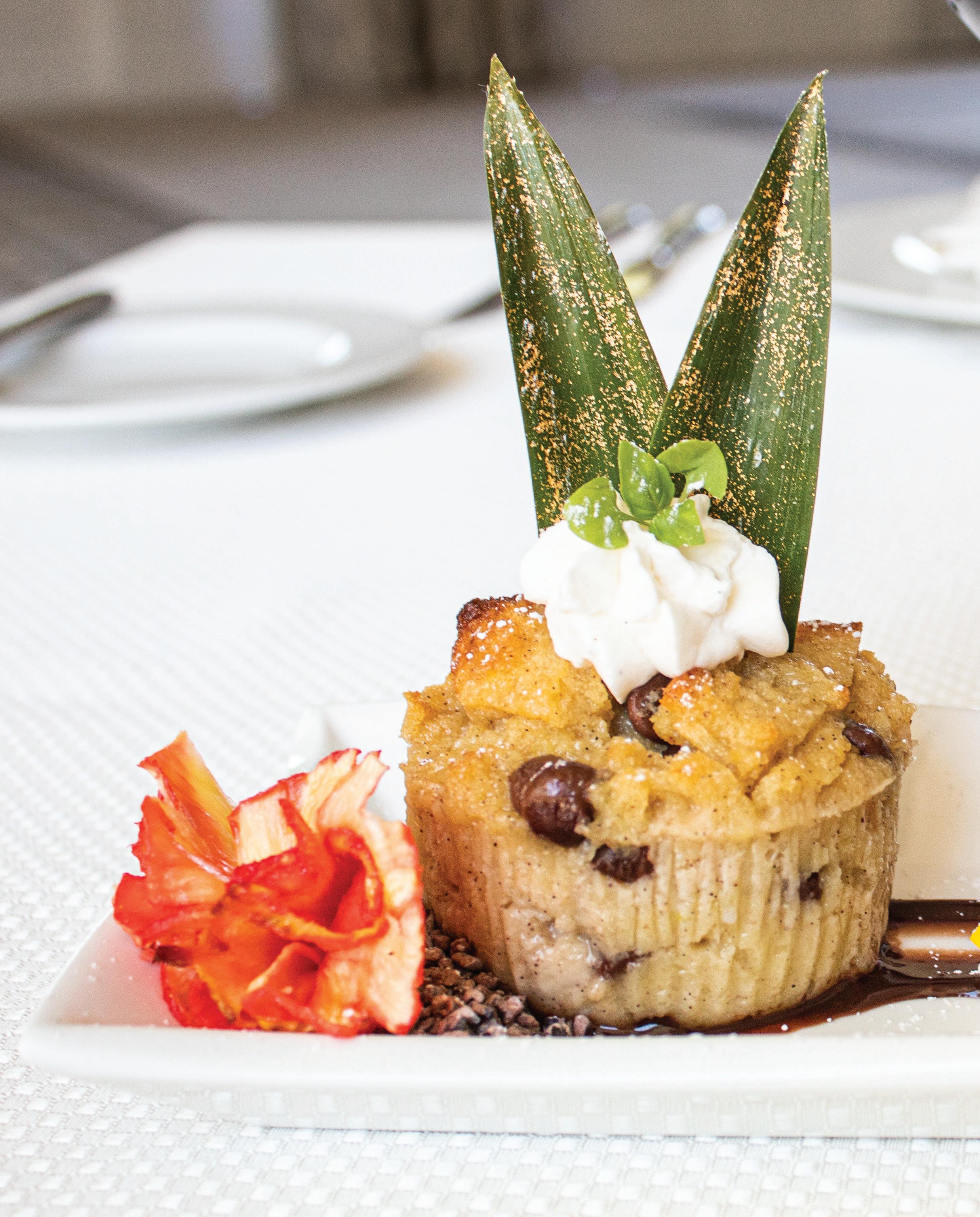
Serves: 6
Ingredients
Bread Pudding
• 1 loaf cubed, day-old, Challah or Babka (see recipe)
• 4 large Eggs
• 1/4 cup Granulated Sugar
• 2 1/2 cups of Heavy Cream
• 1 teaspon Pure vanilla Extract
• 1 teaspoon Cinnamon (ground)
• 1/2 teaspoon Kosher Salt
• 1/4 cup Unsalted Butter (melted)
• 1 cup of Coco Lopez Pina Colada Mix
Babka Cake
• 1 teaspoon of Cinnamon
• 3 large Eggs (beaten)
• 1 cup of Milk
• 3/4 cup of Melted Butter
• 1/4 cup of Water
• 1 teaspoon Salt
• 6 cups Flour
• 1/2 ounce Dry Yeast
• 1/2 cup Golden Raisins
• 1/4 cup Canola Oil
• 1 Egg Yolk (mixed with 1 tablespoon of water for egg wash)
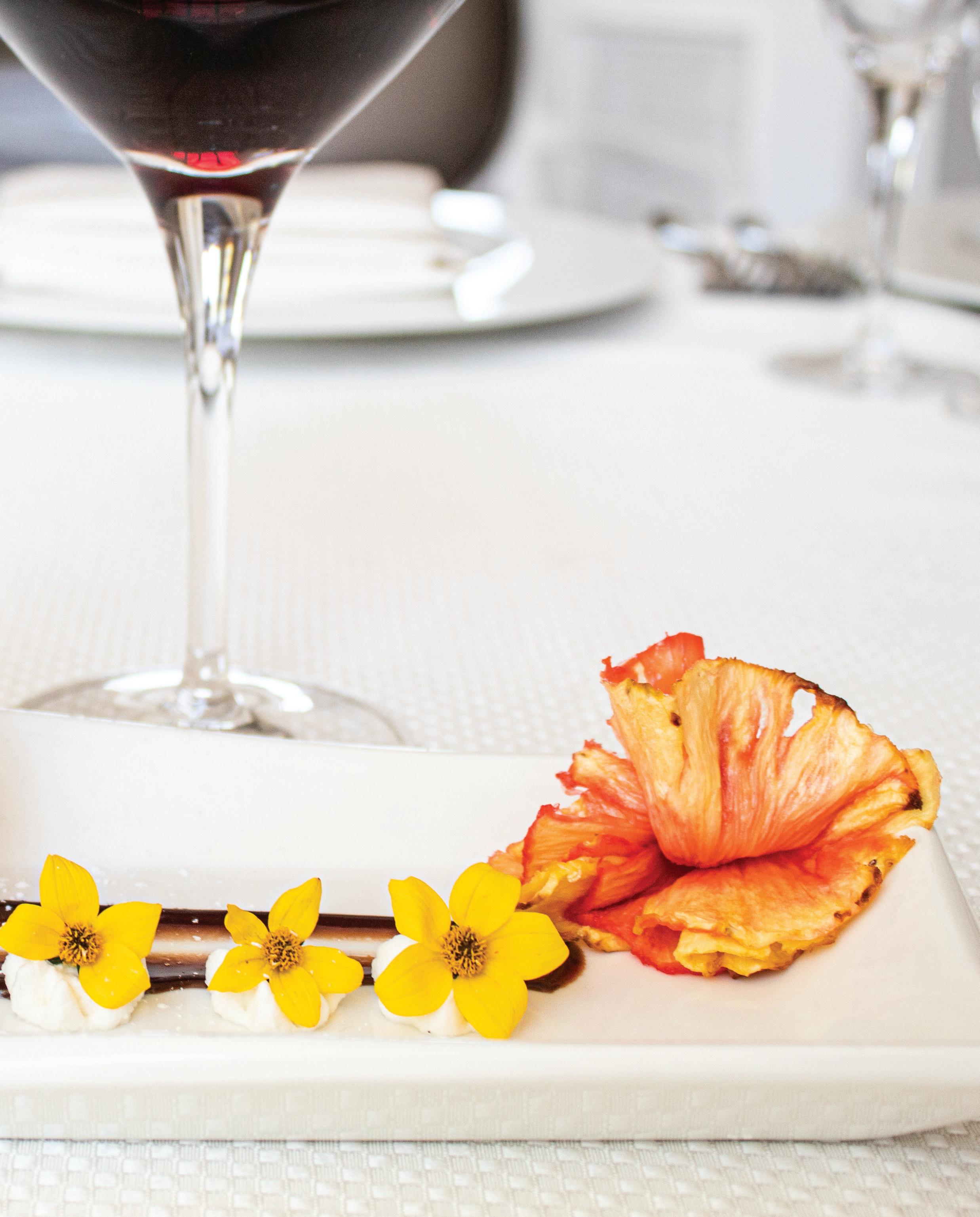
Vanilla Sauce
• 1 cup Powdered Sugar
• 1 Tablespoon Unsalted Butter (melted)
• 1-1 1/2 cup Heavy Cream
• Pinch of Salt
• 1/2 teaspoon Pure Vanilla Extract
Chef Note: Or melt some vanilla ice cream or whipped cream to drizzle over pudding
Preparation
Babka Cake
Add three cups of flour into a bowl or mixer, make a well in the center. Pour in the yeast, sugar and salt and mix thoroughly. Melt 1/2 cup of butter and mix with the milk. Stir in the 1/4 cup of canola oil. Add liquid to the flour mixture and mix. Gradually add the 3 beaten eggs and combine. Mix in another 3 cups of flour and mix until not sticky. On a lightly dusted board with flour, knead the dough for 10 minutes until smooth. Lightly oil a bowl and place dough into the bowl. Roll the dough around so it is coated with the oil. Cover with a towel or plastic wrap. Place covered bowl in a warm area and let proof until double in size. Remove dough from bowl and place on flour dusted board and cover again for 10 minutes. Divide dough into 4 parts and roll each part into rectangles about 12 inches long and 8 inches wide. Melt 1/4 cup of butter and brush the dough with butter, sprinkle with a mixture of 1/2 cup of sugar and a teaspoon of cinnamon. Sprinkle with raisins. Roll each rectangle the long way and place into a greased loaf pan. Cover with towel again and let proof again until double in size about 60 minutes. Preheat oven to 325 °F, brush the babka with the egg wash 1 yolk mixed with 1 tablespoon of water for egg wash. Bake uncovered for one hour. Remove from oven and let cool.
Bread Pudding
Spray baking dish or molds with cooking spray. Arrange cubed bread in baking dish or molds. Set aside. In large bowl, whisk together eggs, cream, sugar, vanilla extract, ground cinnamon, Pina colada mix, salt and 1/4 cup melted butter. Pour over babka cubes, making sure all pieces are coated in custard mixture and pressing cubes down with a fork. Cover baking dish with foil and refrigerate for several hours or overnight, to allow the bread cubes to soak up most of the custard. When ready to bake, preheat oven to 350 °F. Take pudding out of refrigerator while oven heats up and remove the foil.
Bake in oven, uncovered, for 20 minutes. Allow to cool for 10 - 15 minutes before serving.
Vanilla Sauce
In a saucepan heat up the heavy cream and butter. Add the vanilla and blend. Whisk in the powdered sugar and salt. Continue to whisk over low flame until mixture thickens gently. Pull off and cool until needed for service.
Assembly
Once Babka pudding is cooked, chill in refrigerator or serve warm. Gently remove pudding from mold and gently place on dish to be served.Place babka pudding in center of plate and pour vanilla sauce over and around the babka pudding. Lightly coat with powdered sugar. Garnish with whipped cream and fresh berries and serve.
Wine Match
I love to pair sweet desserts with a sauterne or rose. With this dessert I recommend: Semillon: From France or Austria, a sweet white wine with hints of vanilla, honey and citrus.
or Cerdon Du Bugey: From France, a semi sweet creamy red wine with hints of grape and raspberry.
Golf Kitchen Magazine 140
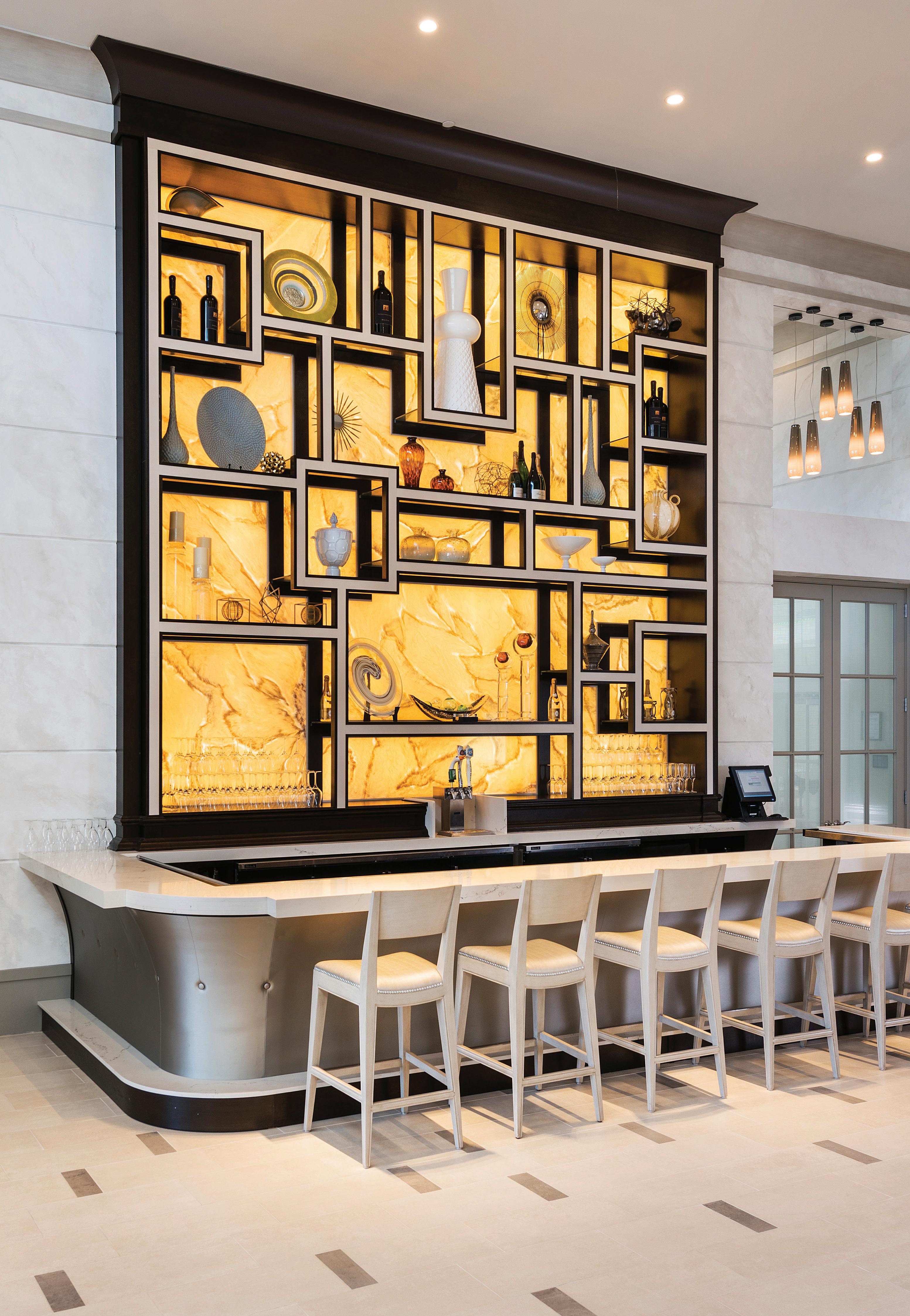 The stunning Logia main bar at Edgewood Country Club. Image courtesy Edgewood Country Club.
The stunning Logia main bar at Edgewood Country Club. Image courtesy Edgewood Country Club.
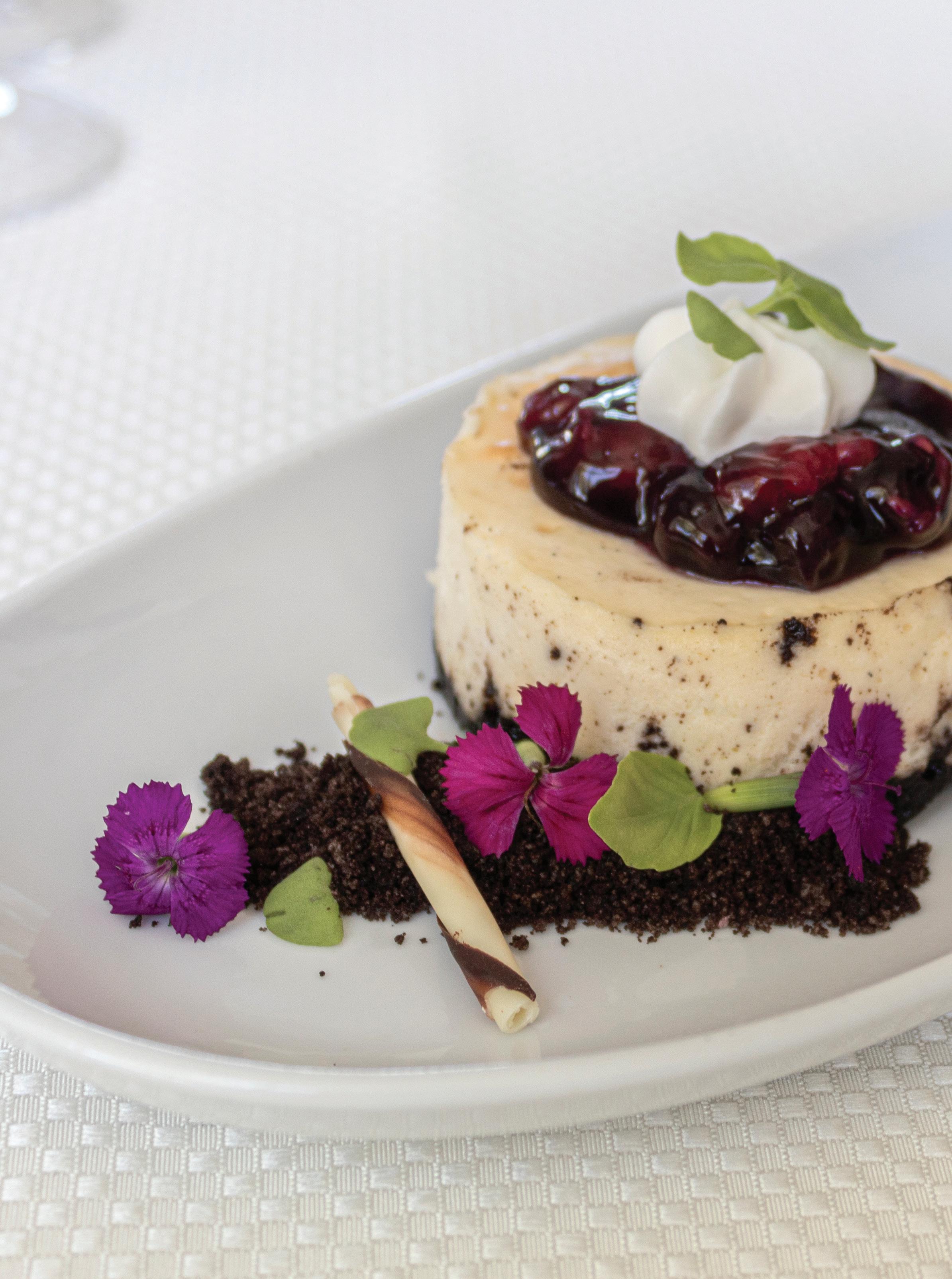 RECIPE BY PETER ZOOLE RECIPE BY CHRISTINA FERRAIOLO
RECIPE BY PETER ZOOLE RECIPE BY CHRISTINA FERRAIOLO
Oreo Crusted White Chocolate

Cheesecake with Berry Compote
Yield: Two 10 inch cheesecakes or 12 individual 3-inch cheese cakes.
Ingredients
Cheese Cake
• 3 pounds Cream Cheese (softened)
• 6 ounces White Chocolate (melted)
• 8 Eggs
• 2 cups of Sugar
Cookie Crust
• Butter (melted)
• 3 cups of Oreos (crushed)
Berry compote
• 2 cups of Strawberries (diced)
• 1 cup of Raspberries
• 1 cup of Blueberries
• 1 cup of MelbaS or Raspberry Sauce
• 1 cup of Sugar
Preparation
Cheesecake
Mix cheesecake ingredients until smooth and well blended. Pack into 10-inch mold pan or individual ring molds lined with foil. Pour in cheesecake batter bake for 1 hour at 300 °F until firm yet jiggly in the center. Cool for one hour in refrigerator. Add frosting on top of cheesecake once chilled.
Cookie Crust
Add Oreos to a food processor and pulse gently until it becomes crumbs. Place Oreo crumbs into a bowl and pour melted butter over and mix well. Pour crumb mixture into molds or cake pans and gently press down coating the bottom and halfway up the sides, Chill in refrigerator for 1/2 an hour until ready. Pour filling into molds 3/4 full and follow instructions for baking.
Berry Compote
Add all berries into a mixing bowl. Add the Melba sauce and gently fold mixture together to make the compote. Add the granulated sugar and continue to gently mix berries together. Cover with plastic wrap and refrigerate for 1 hour or until plating dessert.
Assembly
Chef Note: If you are making the two 10-inch cheese cakes, once chilled well generously spoon the compote on top of the cheese cakes and refrigerate until ready to serve. When ready to serve, remove cheese cakes from refrigerator and use a thin cake knife or cake spatula and dip the knife into warm water and gently slice the cheese cake making sure to wipe the blade of the knife in between slicing of the cake as not to have a messy slice on the plate. For the 3-inch individual cheese cakes, gently remove the bottom foil of the ring molds. Use a paring knife dipped in warm water to gently remove the cheese cakes from the ring molds. Use a small chilled dessert plate and place the cheese cake in center of the plate. Generously spoon the berry compote on top of the cheese cake and garnish with addition fresh berries and micro mint leaves.
Enjoy!
Wine Match
Mascato D’ Asti: It comes from North West Italy and is a sweet wine that is low in Alcohol and comes from the Piedmont area of Italy. It is made in small batches. It is named as such because of its Earthy musky Aroma. The wine is a light honey like dessert wine that really compliments the cheese cake.
The Second one I recommend is also From the North East region of Italy. Prosecco Mionetto: It is a light straw color with bright yellow highlights. It has aromas of golden apples, honey and white peach. It is well balanced and has an acidity that provides a fresh and lively feel on the palette. It is perfect to drink with your meal and especially this cheese cake with hints of vanilla and berries. Perfect Dessert wine or aperitif.
A note from Anthony Villananueva, Executive Chef: I interviewed Christina three years ago for a possible position with us here at Edgewood Country Club. Christina was a graduate of My School at Hudson County Community College in Jersey City New Jersey. She wasn’t very happy at her current position. From the moment I met her I knew she was very special and extremely passionate about her work. I felt she would be a great addition to our team and after several interviews decided to offer her the job. She more than delivered on our investment in her. She brings a certain professionalism and sophistication to everything she does. She has really elevated everything we do here at the club. She is a bright hard-working chef with a tremendous future in front of her. Me and Ivan the Sous Chef have worked together for over 20 years and once we collaborated with Christina, we knew we had a great team together. I always tell her she is great, and she will be famous one day. Her immediate response is always “No Chef We Will Be Famous One Day!” She is a great team player and her drive is second to none. She has the role of Pastry Chef here at the club but is so capable of much more. She currently runs the Pastry and Garde Manger Departments at Edgewood Country Club. Her quest for knowledge and willingness to try new things makes us all better. She hopes to attain the Sous Chef position soon. She will no doubt easily accomplish that goal. Last year we started making our own pasta in house and Christina quickly rose to the challenge by Making fresh pasta at home with her grandmother then bringing her technique and flavor to the kitchen team at the club. All her efforts have been nothing less than sensational and I am very fortunate to be able to work with her and have her on my team.
The successes in my career have always been attributed to the fact that I instill freedom in my kitchen team members to practice and try new things. This helps us stay relevant and continually evolving. My philosophy has always been that work should always be productive but more importantly it should always be fun! I am always asked as a chef “What is your favorite dish? My happy response is always to say, “The one we have yet to create!” Onward Creativity!
Golf Kitchen Magazine 144

Guests enjoy the stunning Logia bar at Edgewood Country Club. Image courtesy Edgewood Country Club.
Get Fit With Fred Author oF
the restAurAnt diet
Growing up in an Italian-American family of gourmands in the New York area, Fred was exposed to a gourmet lifestyle from a young age. He frequently traveled in America and abroad, dining in many celebrated establishments. Part of that lifestyle was growing up with not only family in the restaurant business that loved to cook, he also had family in the golf business and grew up belonging to a top club on Long Island. Having lived this lifestyle for four decades, Fred is accustomed to the decorum and privacy that make the private club experience and membership so special. Today, Fred works 1:1 with clients from all over the world to share the success he has worked so hard to attain. In fact, Fred has lectured and signed books at many clubs and works with members he has met at his events, who have come to value the level of attention and discretion Fred provides 1:1 to his Diet & Weight Loss clients. Having lost 150 pounds in 2009-10 and working to keep the weight off in the decade that followed, despite challenges like a badly injured achilles tendon and emergency back surgery in 2019, Fred has endured the highs and lows on his journey and brings to the table a wealth of wisdom, experience, and compassion while working with clients to help them achieve their goals.
You are cordially invited to join Fred on the journey to a new and better you! Imagine having the freedom of being able to go anywhere and do anything and not feel self-conscious? Imagine the feeling of smiling when you look in the mirror? Imagine feeling proud of yourself, empowered, peaceful, serene, content, and even happy? Imagine being able to enjoy many of the foods you love without the guilt? Imagine being able to enjoy exercise as a vital and beneficial part of life? Imagine being able to work with someone who has seen and heard it all, who has helped many people achieve succeSS, and to be able to do it remotely, from the comfort and privacy of your own home? Today, in this age of COVID-19, more than ever, people need support, an ally, a friend, a mentor, someone who understands where they are and what they’re going through, a partner to help them navigate the amazing journey to total freedom from dieting, overeating, bingeing, purging, and self-loathing once and for all! Space in the Coaching Program is limited to ensure clients receive the attention they deserve. Call Fred (561)789-0047, private message Fred on Facebook @ FredBollaci or @Fredbollacienterprises, or e-mail info@fredbollacienterprises.com TO SCHEDULE A FREE 30-Minute Call to learn how Fred can help you achieve amazing results and to reserve your space today!
SPECIAL INTRODUCTORY PRICING (Sign up through 11/30/20):
$500/month, Purchase Two Months, receive the third month free! A perfect way to get in better shape in time for the holidays and to jump start your resolutions for 2021!
Fred Bollaci, Esquire, MBA President & CEO Fred Bollaci Enterprises, LLC
P: 561.789.0047
Author “The Restaurant Diet” (Mango 2018) | The Golden Palate Blog
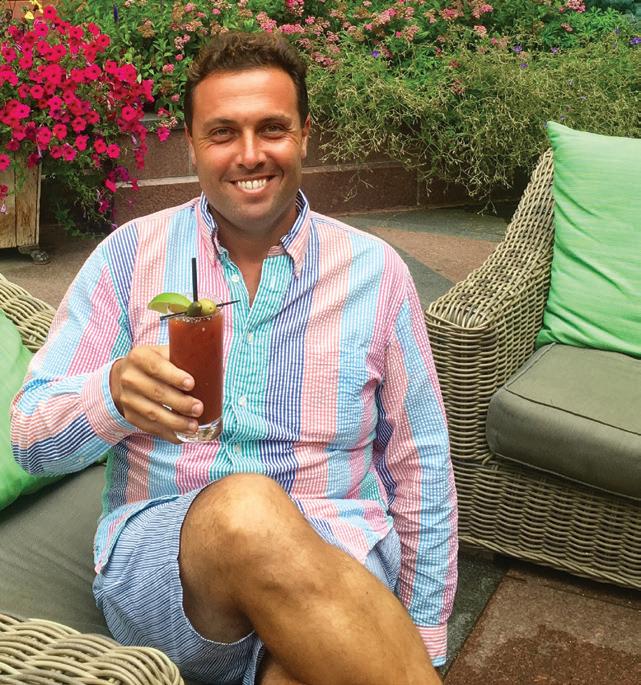
www.fredbollacienterprises.com
Sommelier | Food & Travel Editor | Social Media Manager | Venu Magazine
Golf Kitchen Magazine 146

Buy Now on Amazon www.fredbollacienterprises.com






















































 Front row left to right: Eric Wilson, Chayo Soto
Back row left to right: Zac Schatzman, Maxo Polche, Jason Voiselle
Front row left to right: Eric Wilson, Chayo Soto
Back row left to right: Zac Schatzman, Maxo Polche, Jason Voiselle
 RECIPE BY JASON VOISELLE
RECIPE BY JASON VOISELLE



 Number 12 “Heron’s Haven” Par 3, 228 yards.A well struck shot is all you need here unless you want to join the heron’s for a quick dip. Image by Evan Schiller, courtesy Naples National Golf Club.
Number 12 “Heron’s Haven” Par 3, 228 yards.A well struck shot is all you need here unless you want to join the heron’s for a quick dip. Image by Evan Schiller, courtesy Naples National Golf Club.



 Number 18 “Tropical Terror” Par 5, 272 yards. This very long double leg par five, with its pines, cypress, wetlands, water, the native sand scrub and greenside bunkers, will make the clubhouse seem like a very welcome port in the storm caused by this hole. Image by Evan Schiller, courtesy Naples National.
Number 18 “Tropical Terror” Par 5, 272 yards. This very long double leg par five, with its pines, cypress, wetlands, water, the native sand scrub and greenside bunkers, will make the clubhouse seem like a very welcome port in the storm caused by this hole. Image by Evan Schiller, courtesy Naples National.
 RECIPE BY JASON VOISELLE
RECIPE BY JASON VOISELLE



 Farm Manager Jessalin Jaume
Farm Manager Jessalin Jaume
 by Jen Faust and Lisa Goldstein
by Jen Faust and Lisa Goldstein




 Right: Jonathan Hancock, Executive Chef with his Sous Chef in the Richland Country Club kitchen.
Right: Jonathan Hancock, Executive Chef with his Sous Chef in the Richland Country Club kitchen.
 The Hank McCall Room. Image courtesy Richland Country Club.
RECIPE BY JONATHAN HANCOCK
The Hank McCall Room. Image courtesy Richland Country Club.
RECIPE BY JONATHAN HANCOCK





 RECIPE BY JONATHAN HANCOCK
RECIPE BY JONATHAN HANCOCK
 The Waxo Bar
Image courtesy Richland Country Club
RECIPE BY JONATHAN HANCOCK
The Waxo Bar
Image courtesy Richland Country Club
RECIPE BY JONATHAN HANCOCK



 The Waxo Grill.
Image courtesy Richland Country Club.
Nicklaus Room.
Image courtesy Richland Country Club.
RECIPE BY JONATHAN HANCOCK
The Waxo Grill.
Image courtesy Richland Country Club.
Nicklaus Room.
Image courtesy Richland Country Club.
RECIPE BY JONATHAN HANCOCK



 The clubhouse at dusk.
Image courtesy Richland Country Club.
Club pool and amenities.
Image courtesy Richland Country Club.
The clubhouse at dusk.
Image courtesy Richland Country Club.
Club pool and amenities.
Image courtesy Richland Country Club.



 The view from the 15th green. Image courtesy Richland Country Club.
The view from the 15th green. Image courtesy Richland Country Club.


 The 18 green overlooking the back of the clubhouse. Image by Henry Cardenas.
The 18 green overlooking the back of the clubhouse. Image by Henry Cardenas.


 RECIPE BY PHIL IANNUCCILLI
RECIPE BY PHIL IANNUCCILLI


 Elmer’s Lounge.
Image by David Woods.
Elmer’s Lounge.
Image by David Woods.
 RECIPE BY PHIL IANNUCCILLI
RECIPE BY PHIL IANNUCCILLI


 The 11th green at sunset. Image by Henry Cardenas.
The 11th green at sunset. Image by Henry Cardenas.




 RECIPE BY PHIL IANNUCCILLI
RECIPE BY PHIL IANNUCCILLI


 The 10th green and 11th fairway.
Image by Henry Cardenas.
RECIPE BY PHIL IANNUCCILLI
The 10th green and 11th fairway.
Image by Henry Cardenas.
RECIPE BY PHIL IANNUCCILLI


 Greenwich Country Club entrance.
Image by Henry Cardenas.
Greenwich Country Club entrance.
Image by Henry Cardenas.

 RECIPE BY PHIL IANNUCCILLI
RECIPE BY PHIL IANNUCCILLI
















 Image by Gideon Heller
Image by Gideon Heller


 The Grill bar features sleek modern design, luxurious soft seating and a large window that slides open to service the outdoor patio. Image by Gideon Heller.
The Grill bar features sleek modern design, luxurious soft seating and a large window that slides open to service the outdoor patio. Image by Gideon Heller.

 Image by Gideon Heller.
Image by Gideon Heller.
 Image by Gideon Heller.
Image by Gideon Heller.

 Image by Gideon Heller.
RECIPE BY PETER ZOOLE
Image by Gideon Heller.
RECIPE BY PETER ZOOLE

 Palm trees, Sandy white bunkers and pristine lakes embellish the well maintained turf in Addison’s tropical paradise.
Image by Gideon Heller.
RECIPE BY PETER ZOOLE
Palm trees, Sandy white bunkers and pristine lakes embellish the well maintained turf in Addison’s tropical paradise.
Image by Gideon Heller.
RECIPE BY PETER ZOOLE


 Looking backwards on Trepidation Hole number 9 during late afternoon.
Image by Gideon Heller.
Looking backwards on Trepidation Hole number 9 during late afternoon.
Image by Gideon Heller.


 Chatter and laughter fill the air during regular busy evenings at the new restaurant, The Grill.
Image by Gideon Heller.
Chatter and laughter fill the air during regular busy evenings at the new restaurant, The Grill.
Image by Gideon Heller.






 The prestigious ballroom at Edgewood Country Club. Image courtesy Edgewood Coutry Club.
RECIPE BY CHRISTINA FERRAIOLO
The prestigious ballroom at Edgewood Country Club. Image courtesy Edgewood Coutry Club.
RECIPE BY CHRISTINA FERRAIOLO


 The stunning Logia main bar at Edgewood Country Club. Image courtesy Edgewood Country Club.
The stunning Logia main bar at Edgewood Country Club. Image courtesy Edgewood Country Club.
 RECIPE BY PETER ZOOLE RECIPE BY CHRISTINA FERRAIOLO
RECIPE BY PETER ZOOLE RECIPE BY CHRISTINA FERRAIOLO




